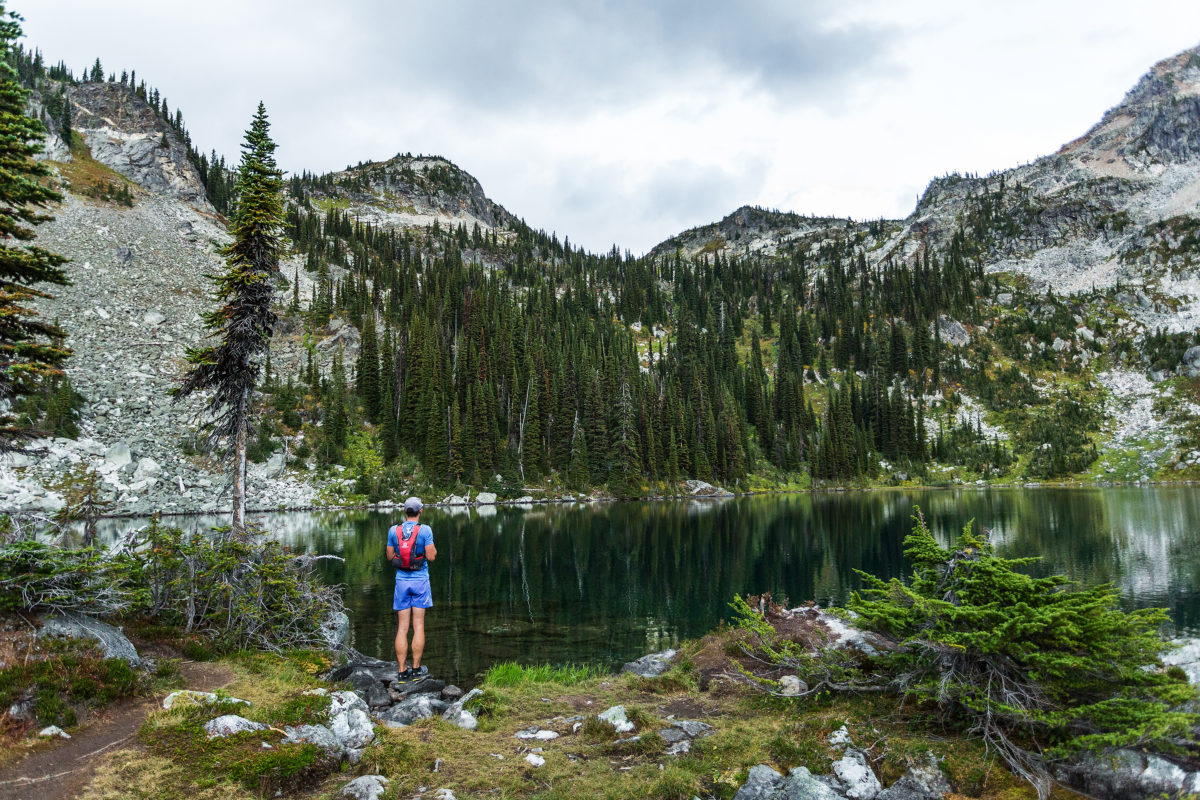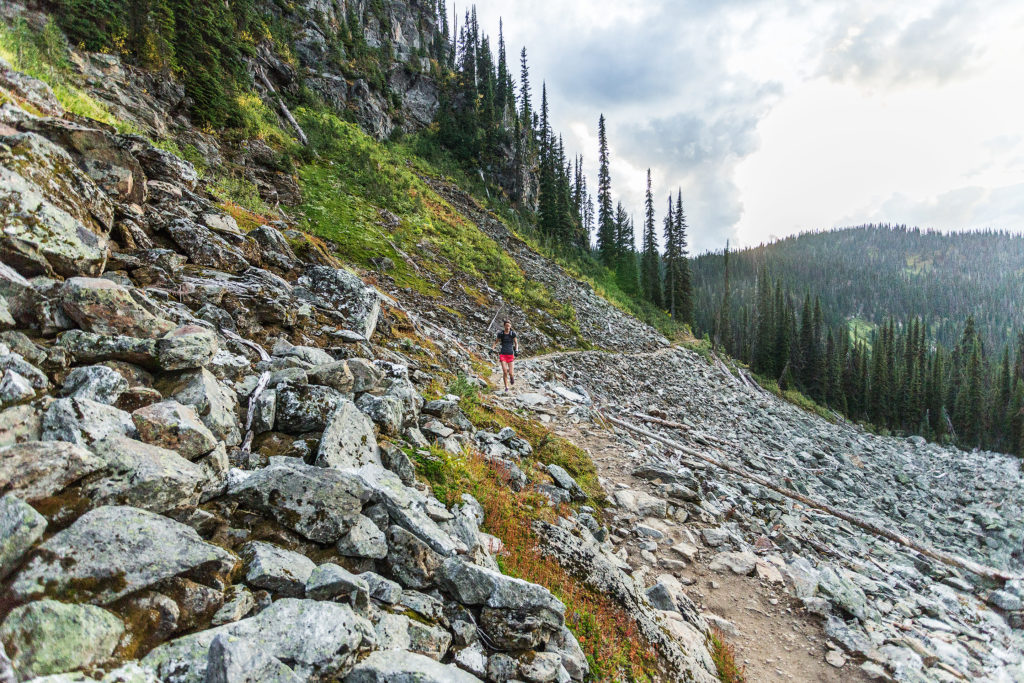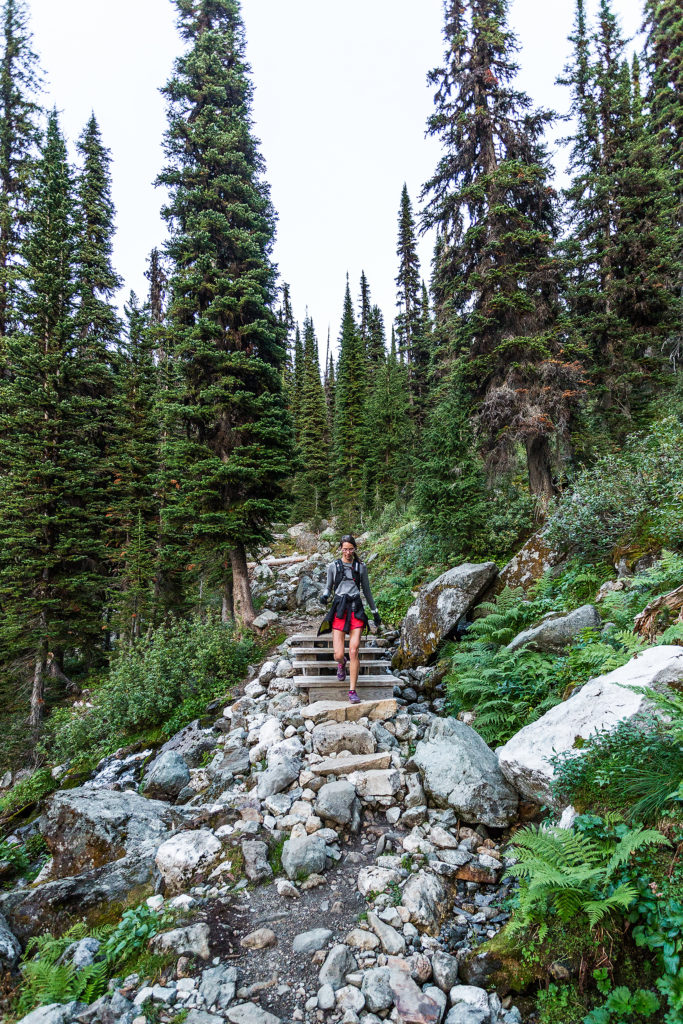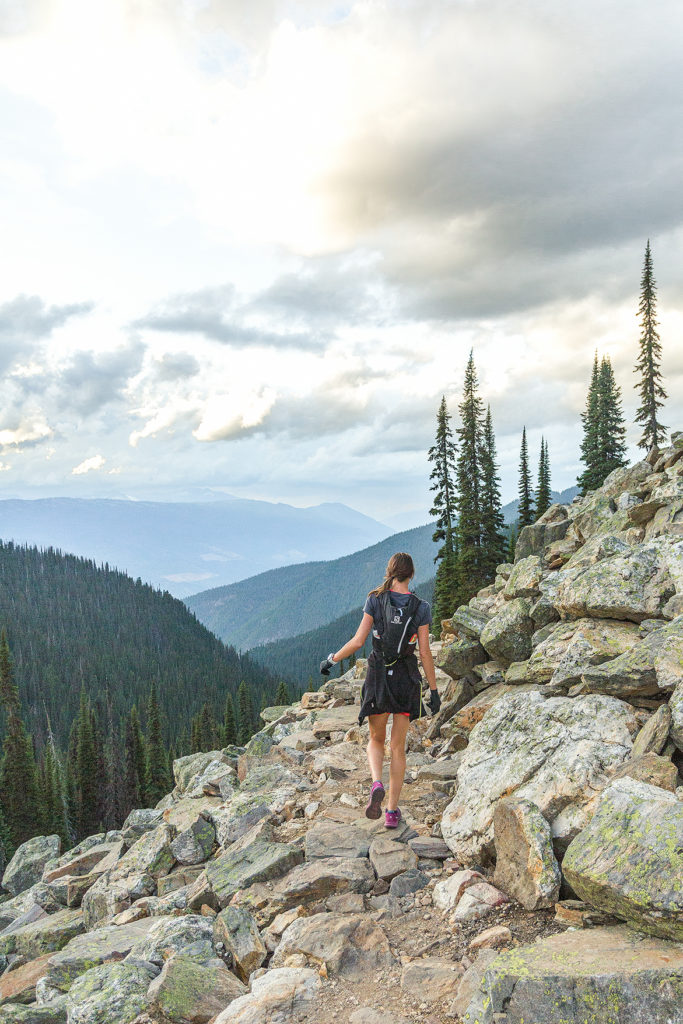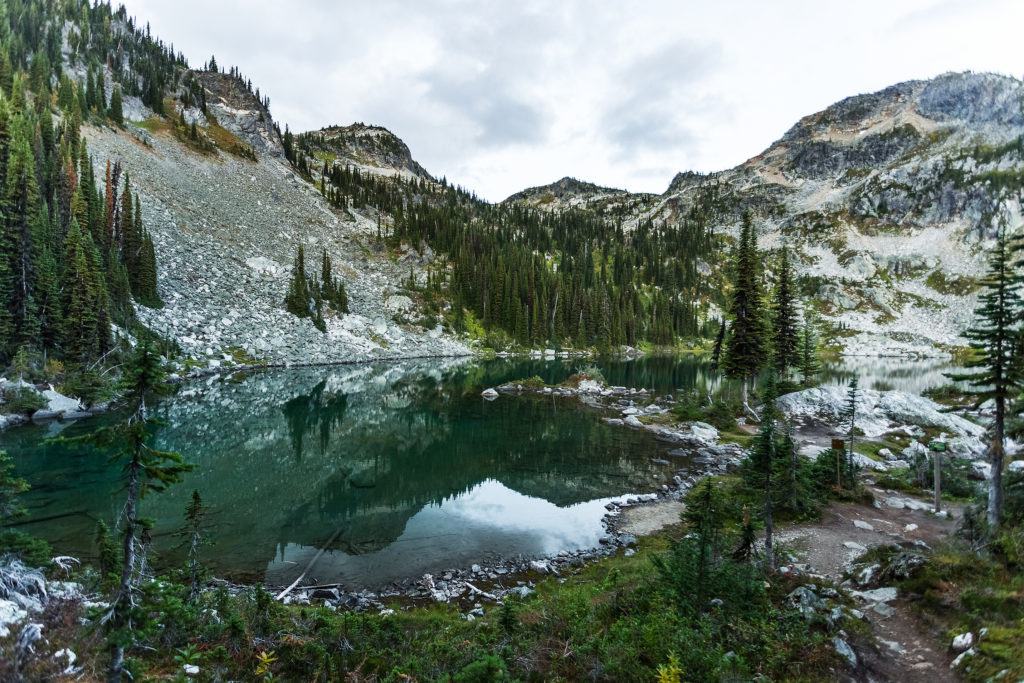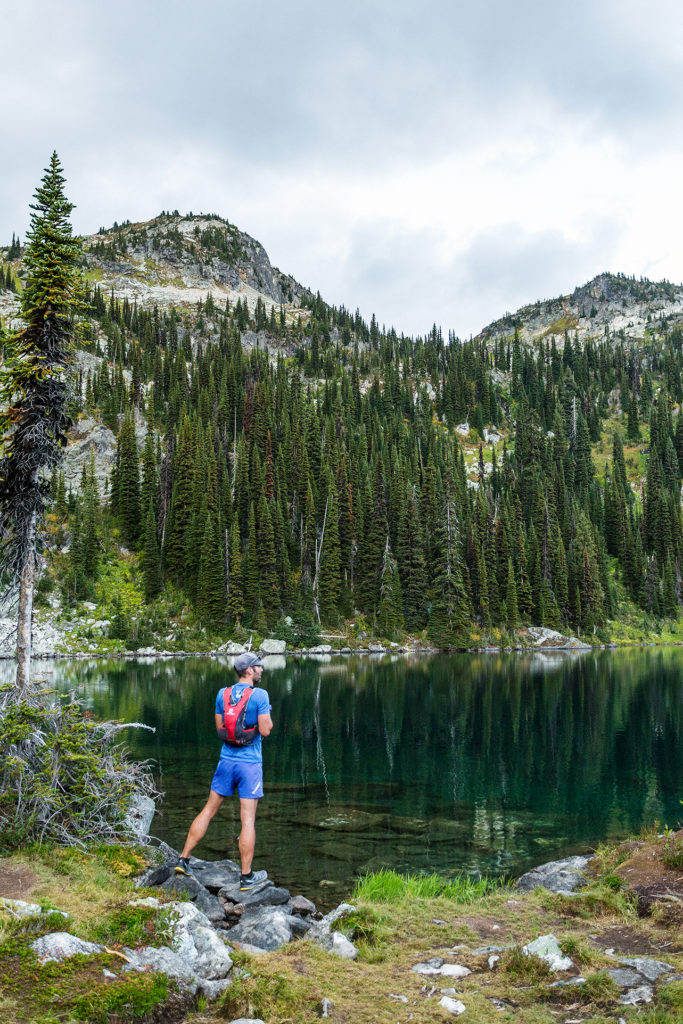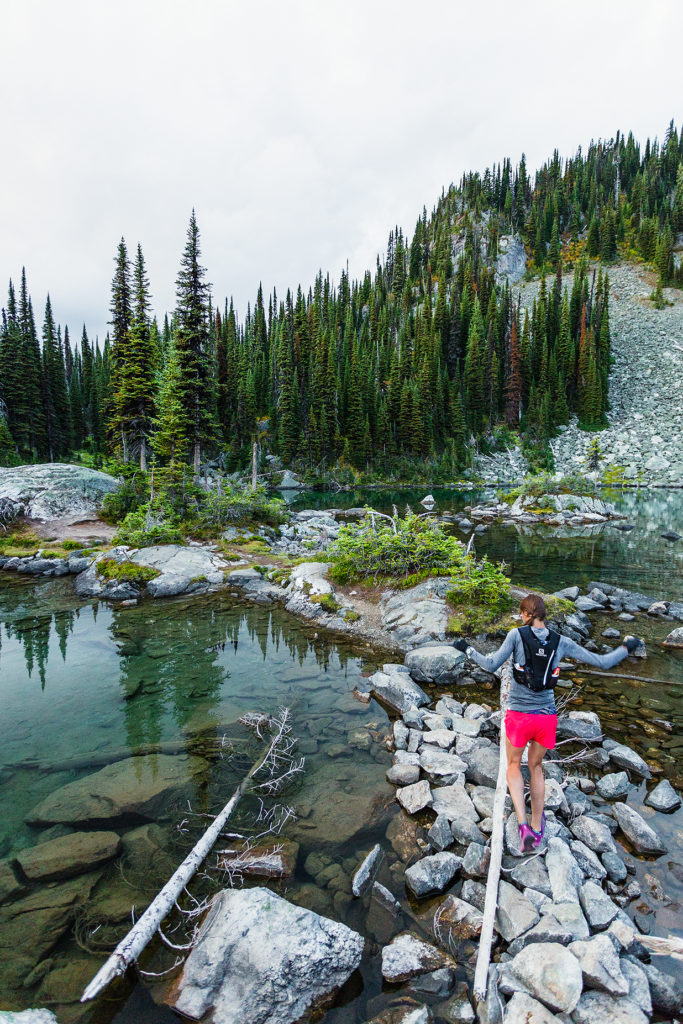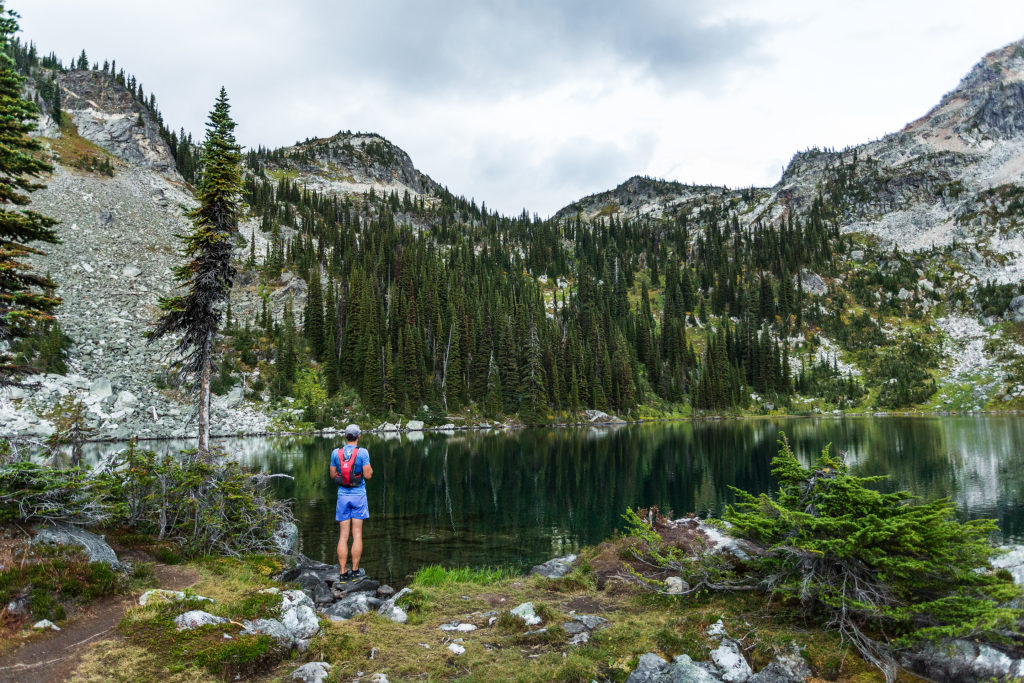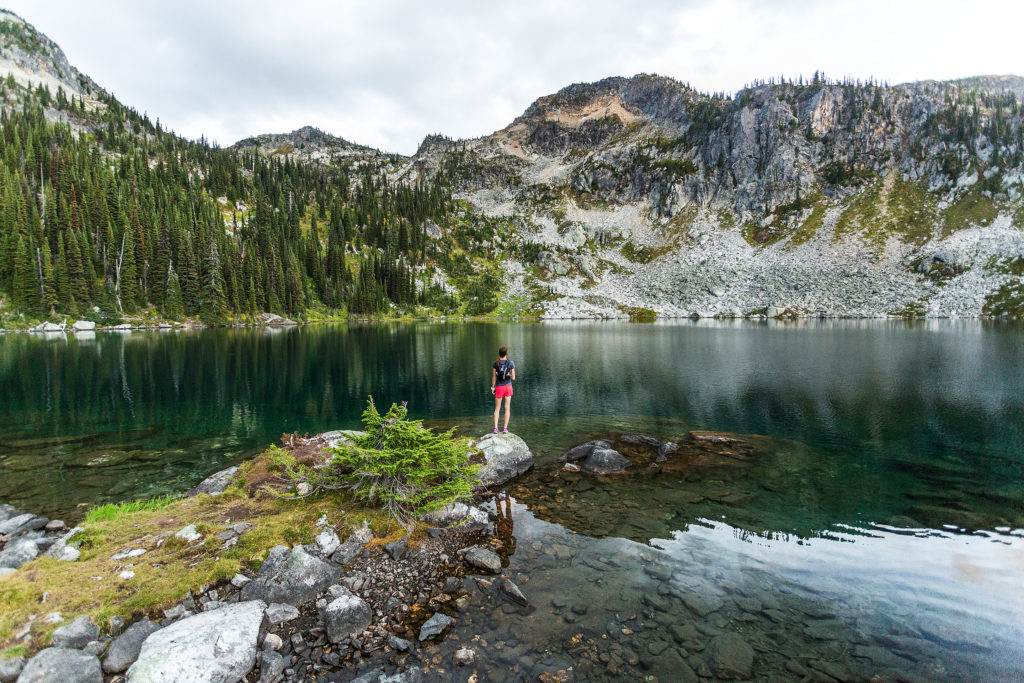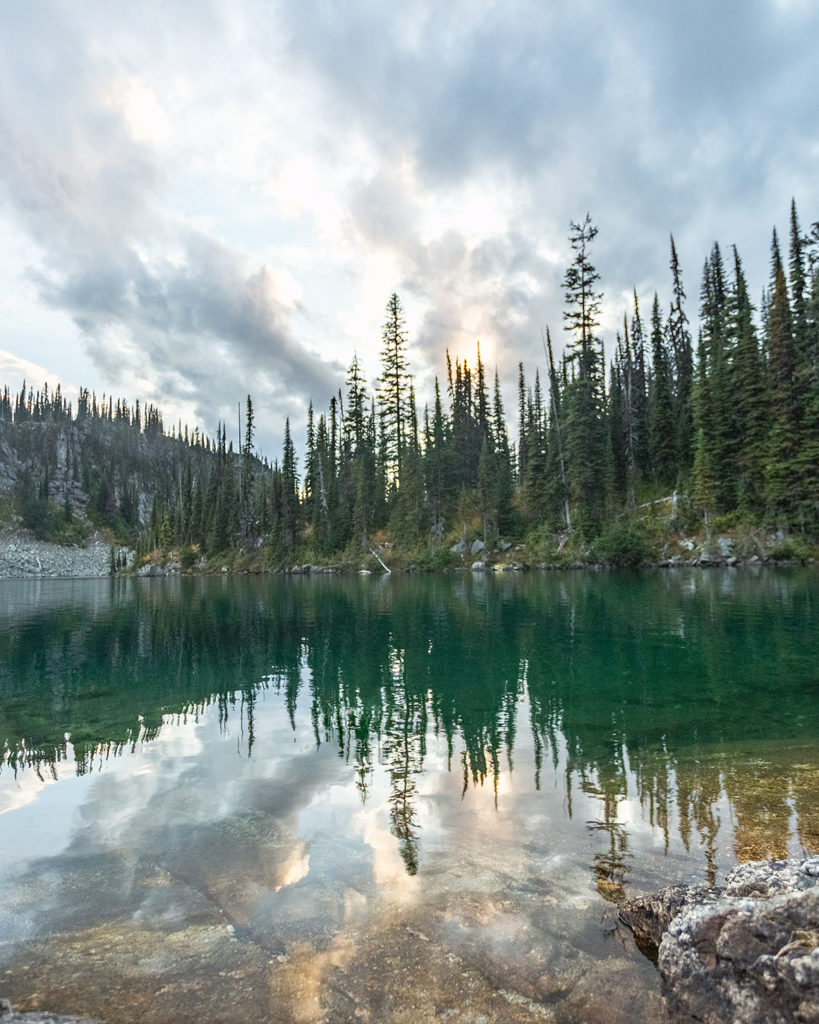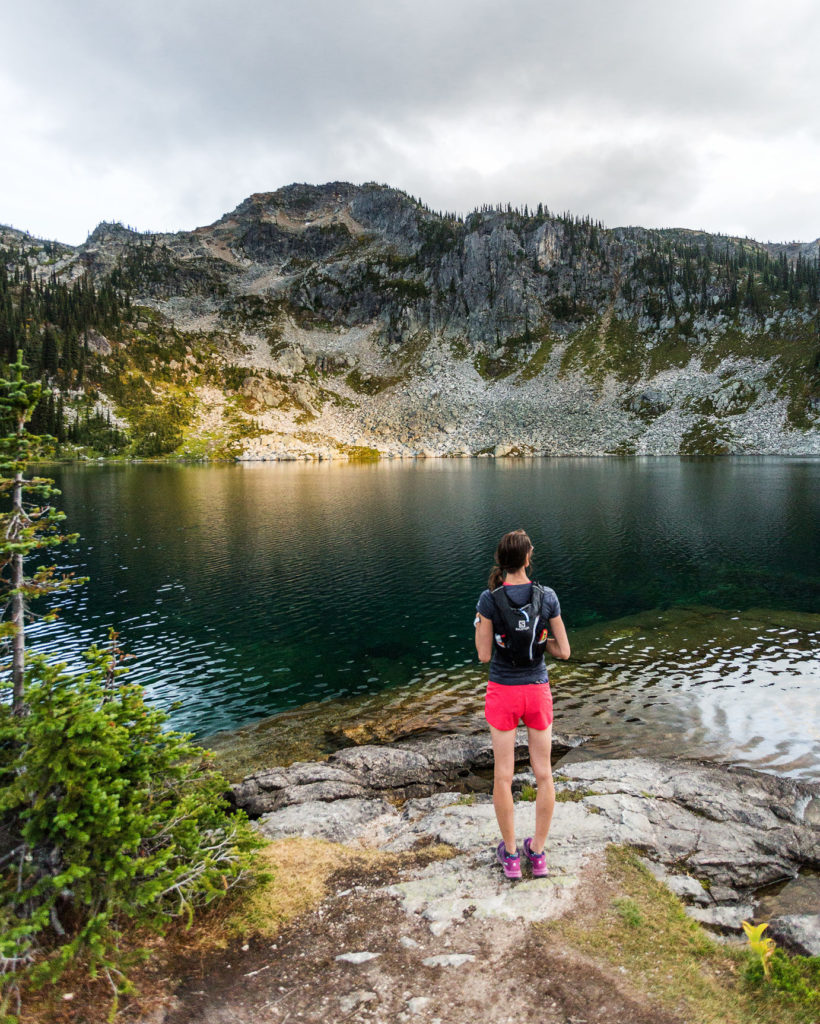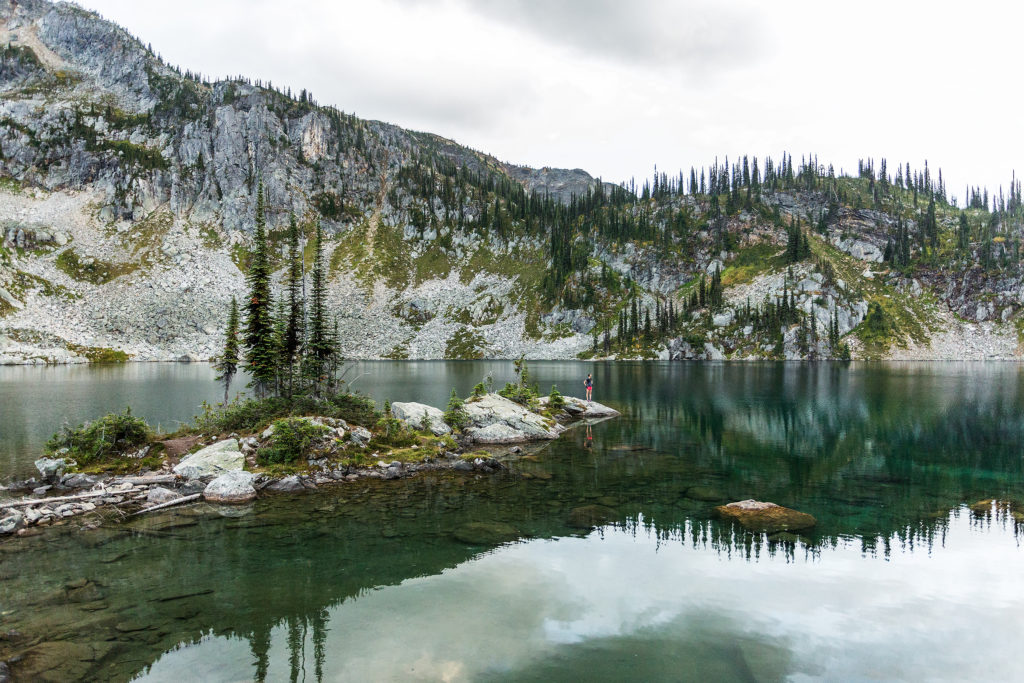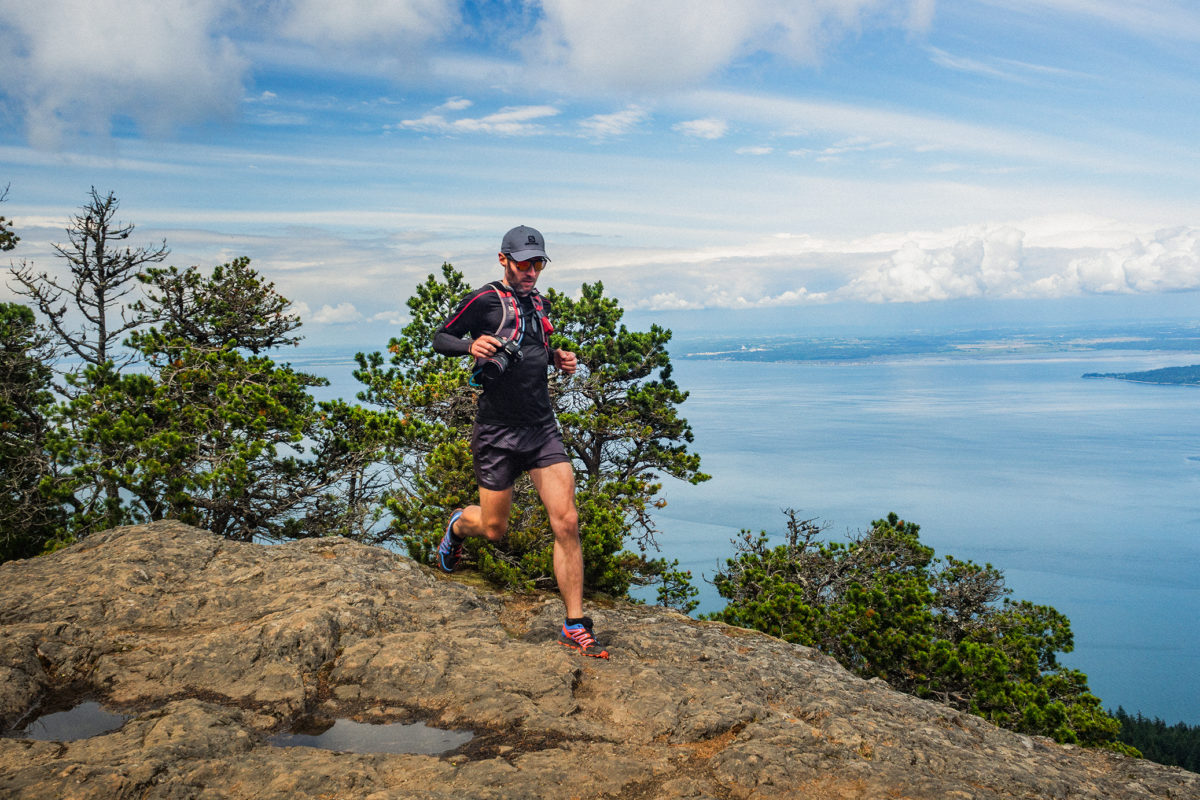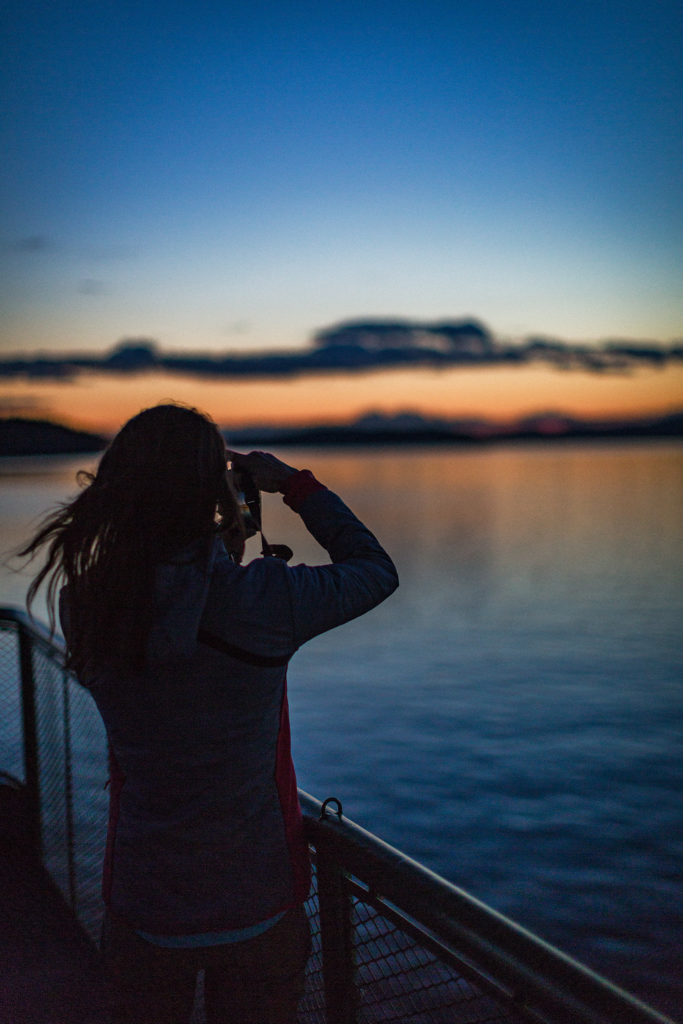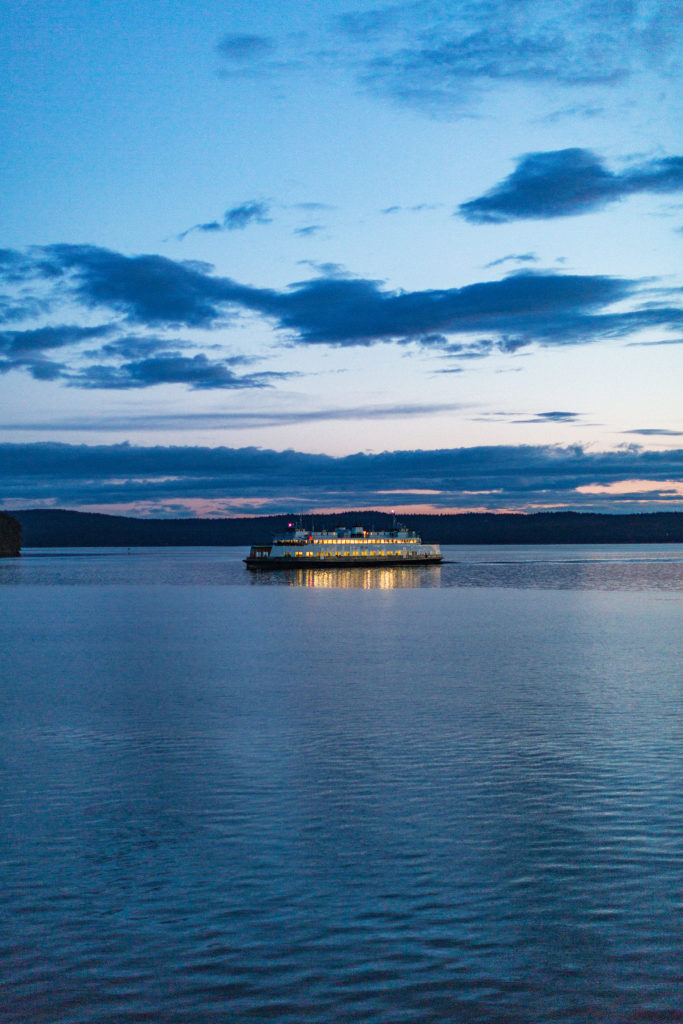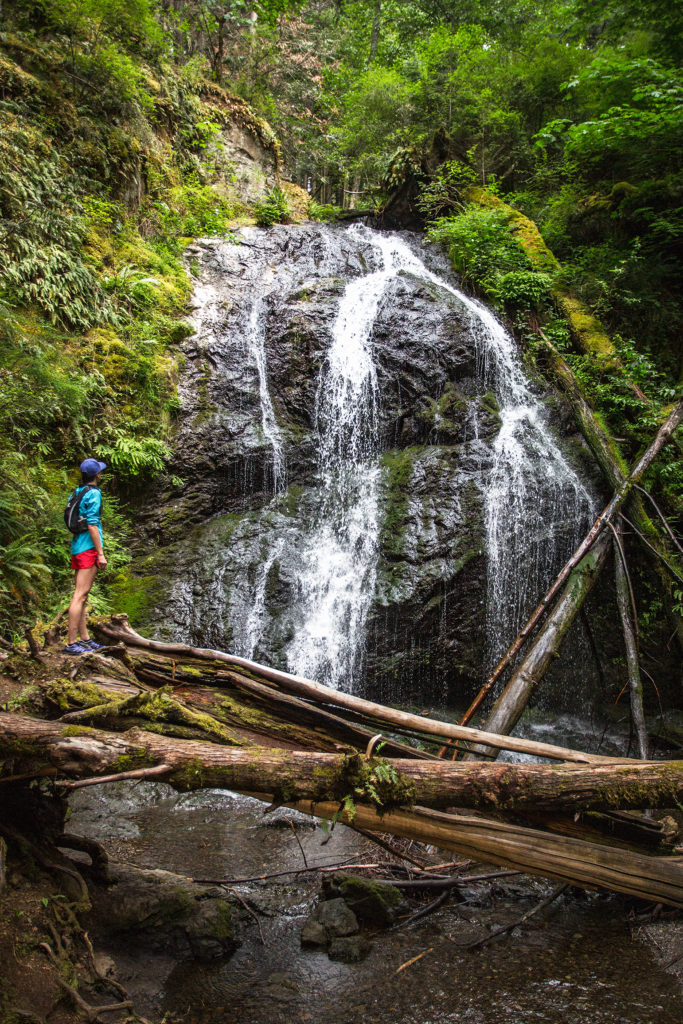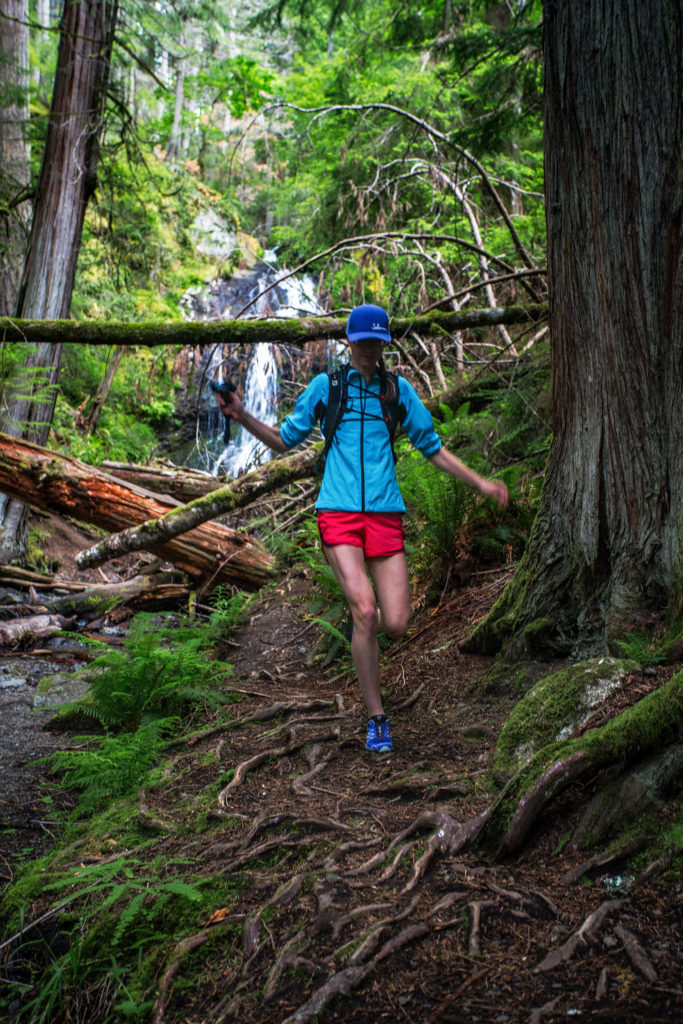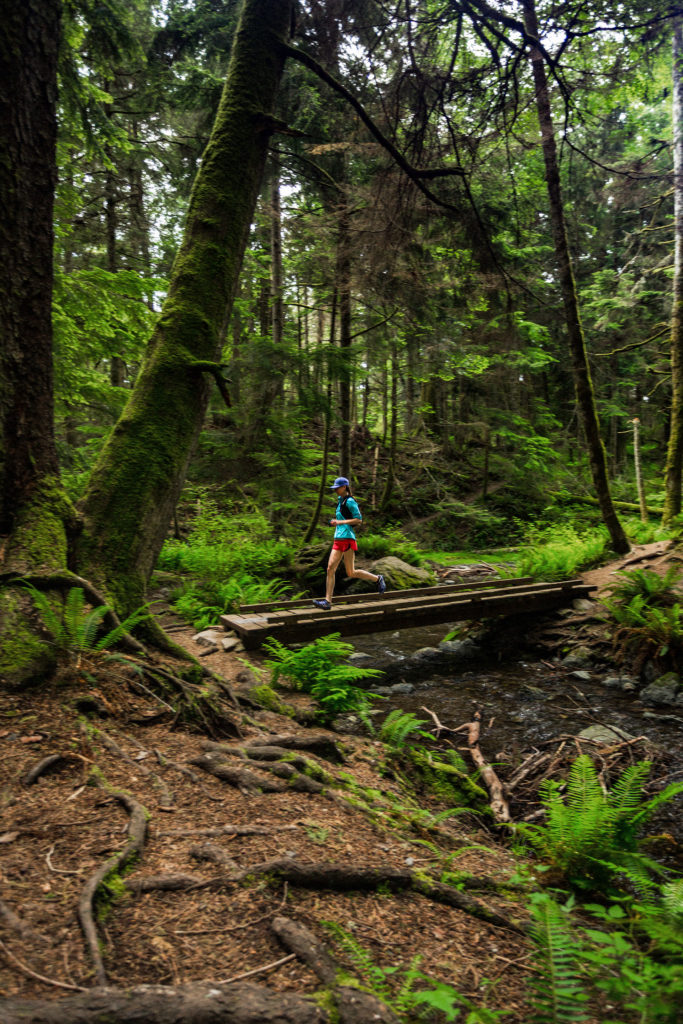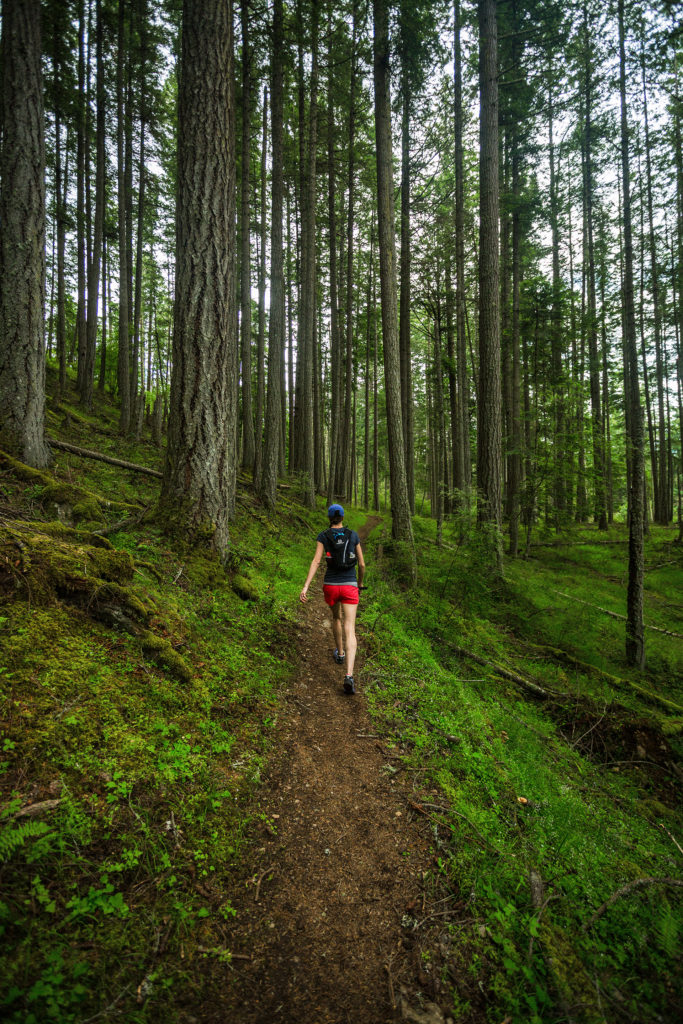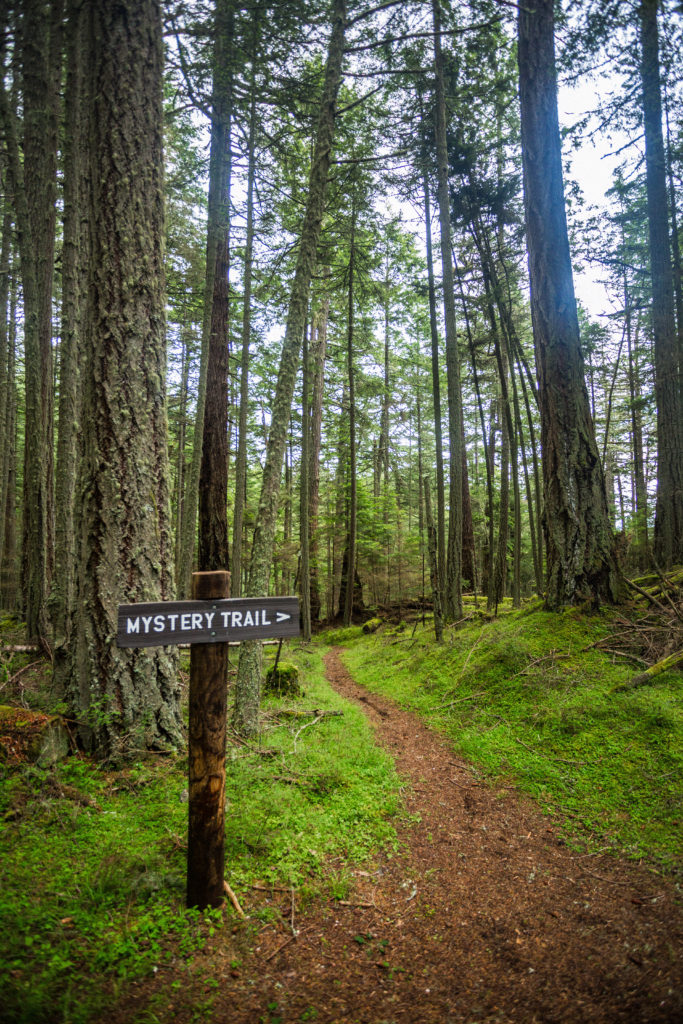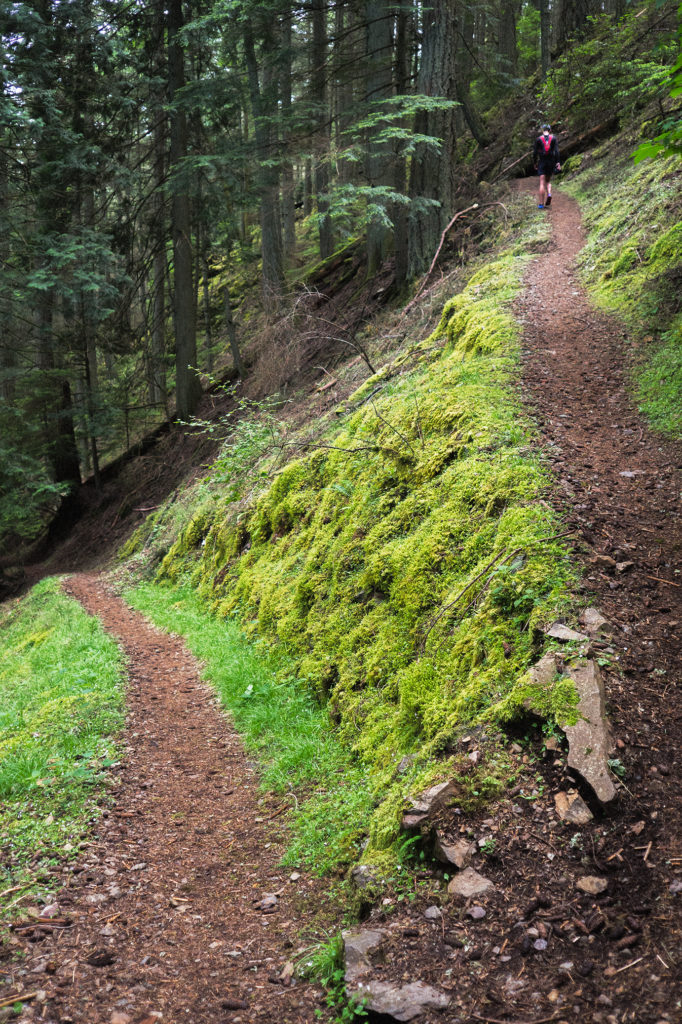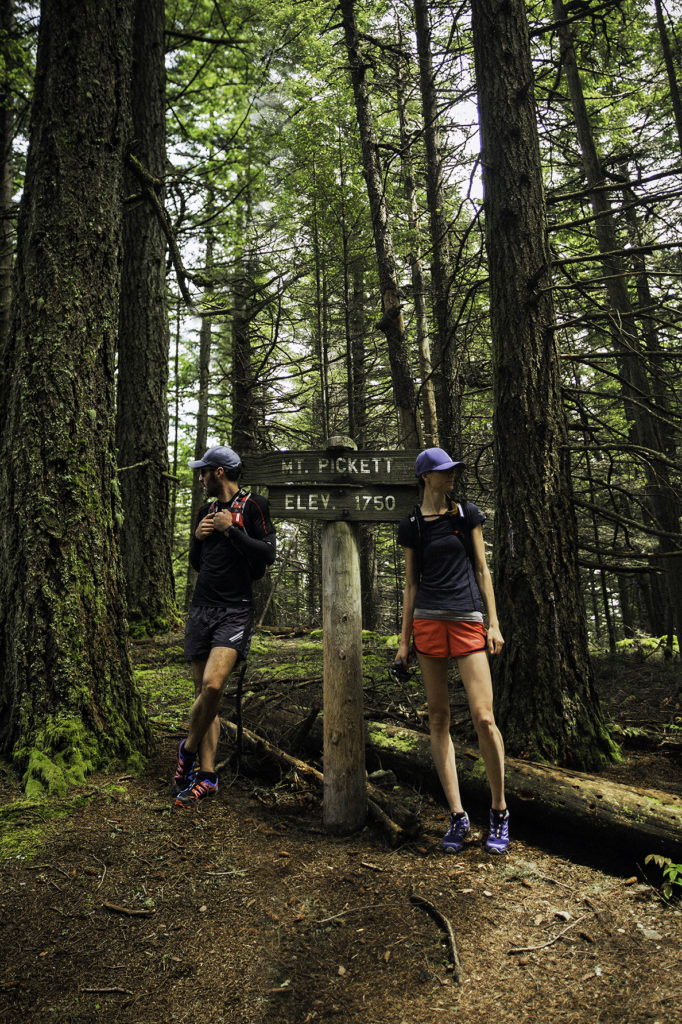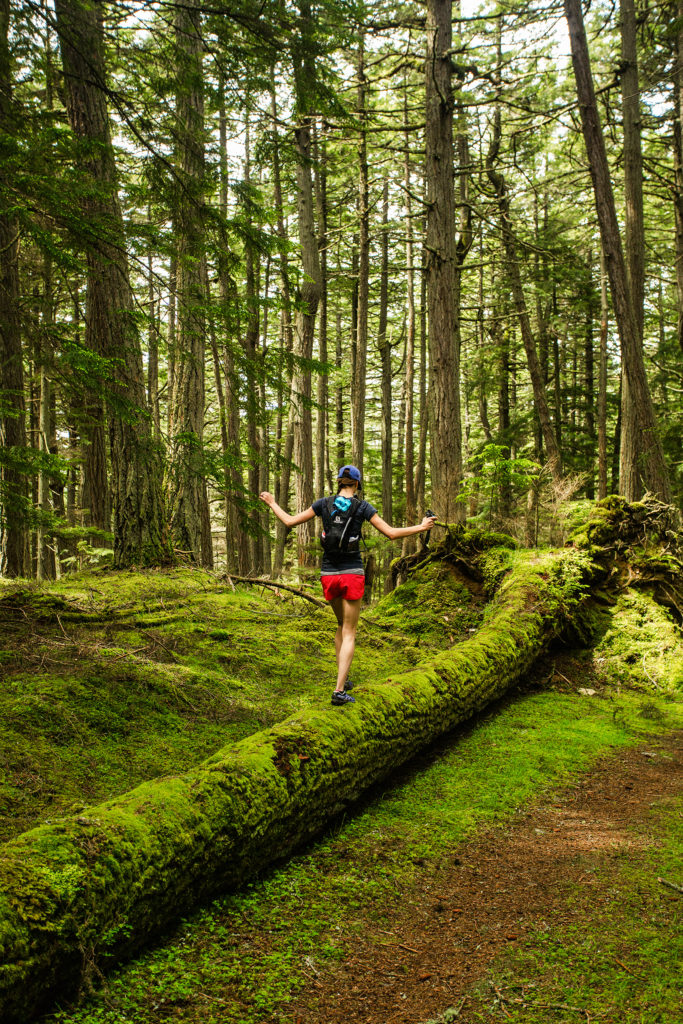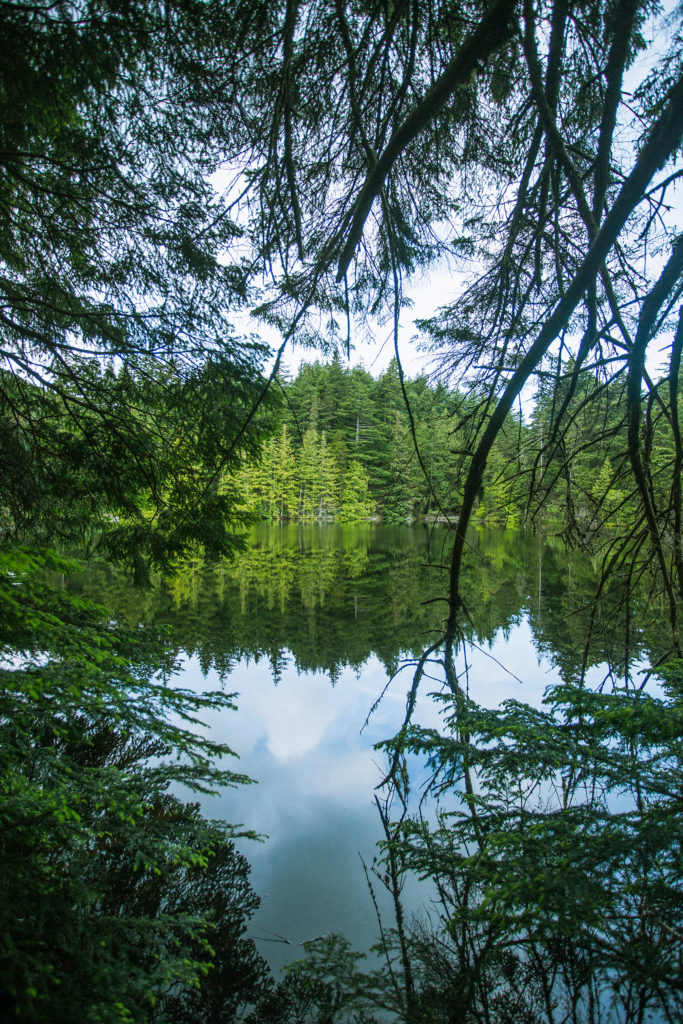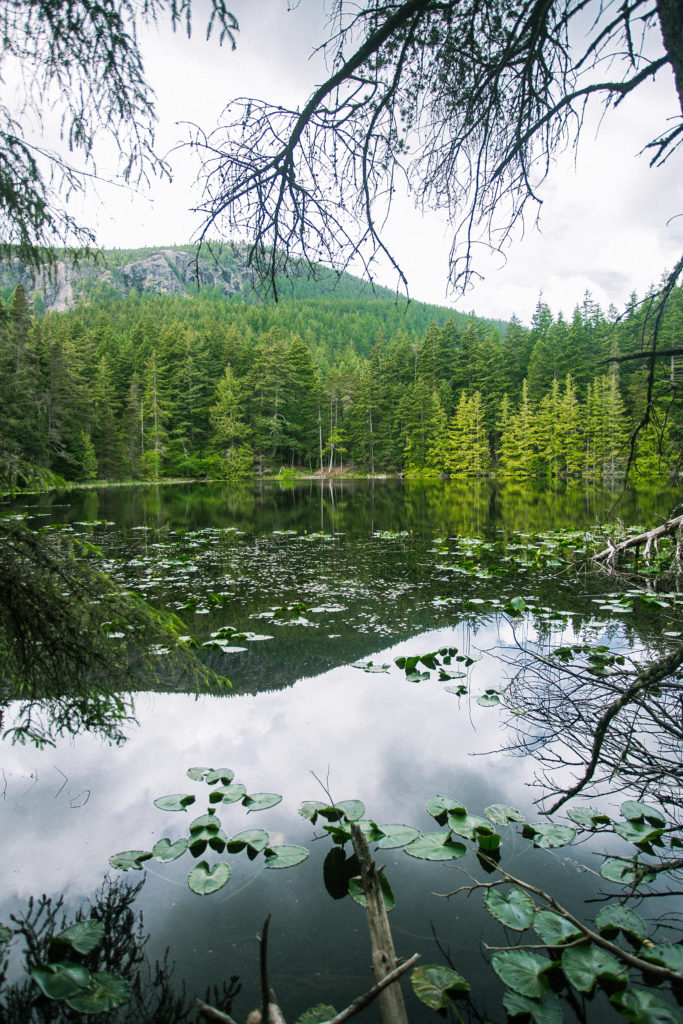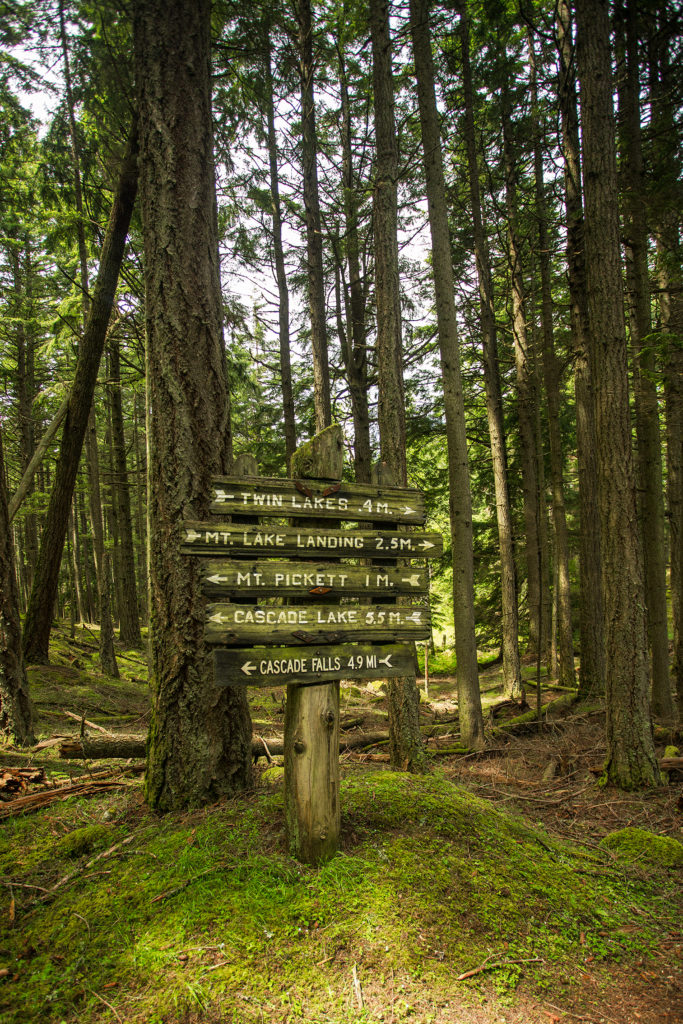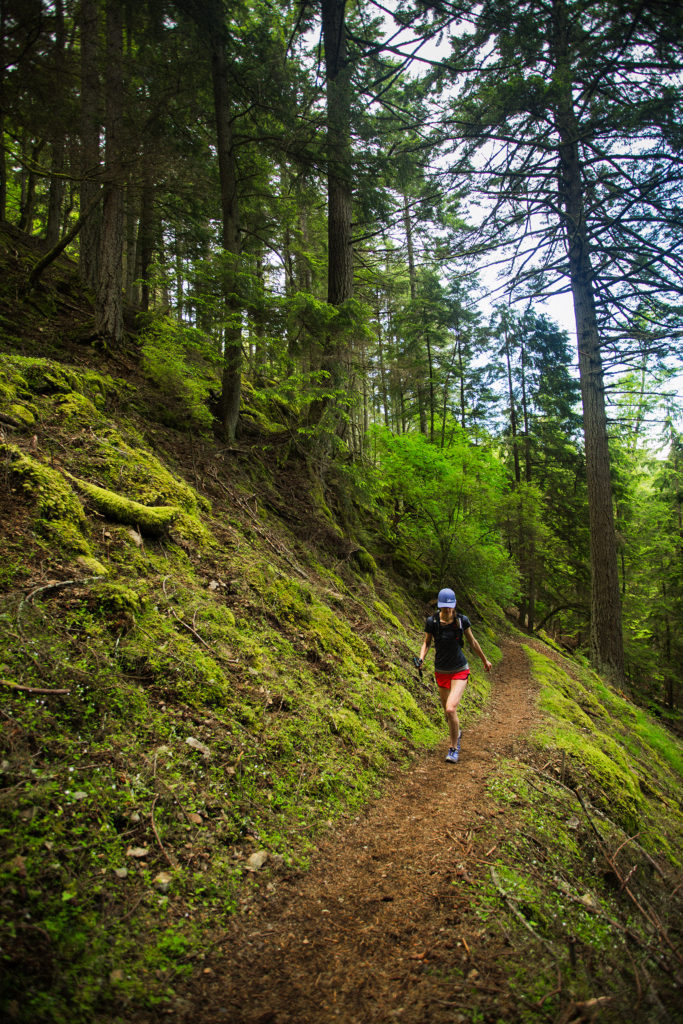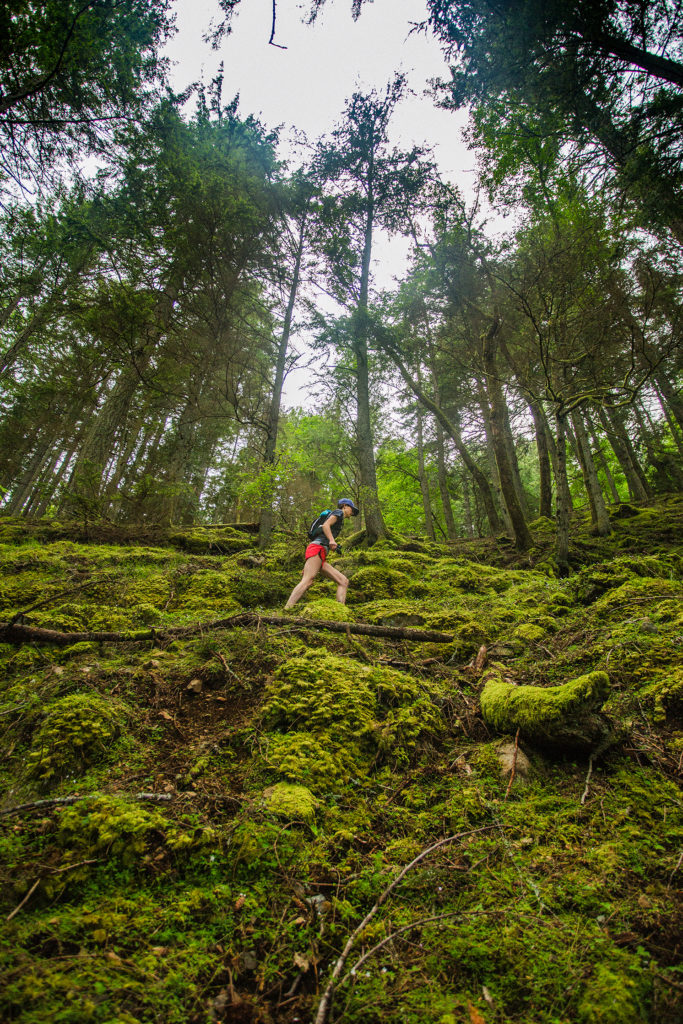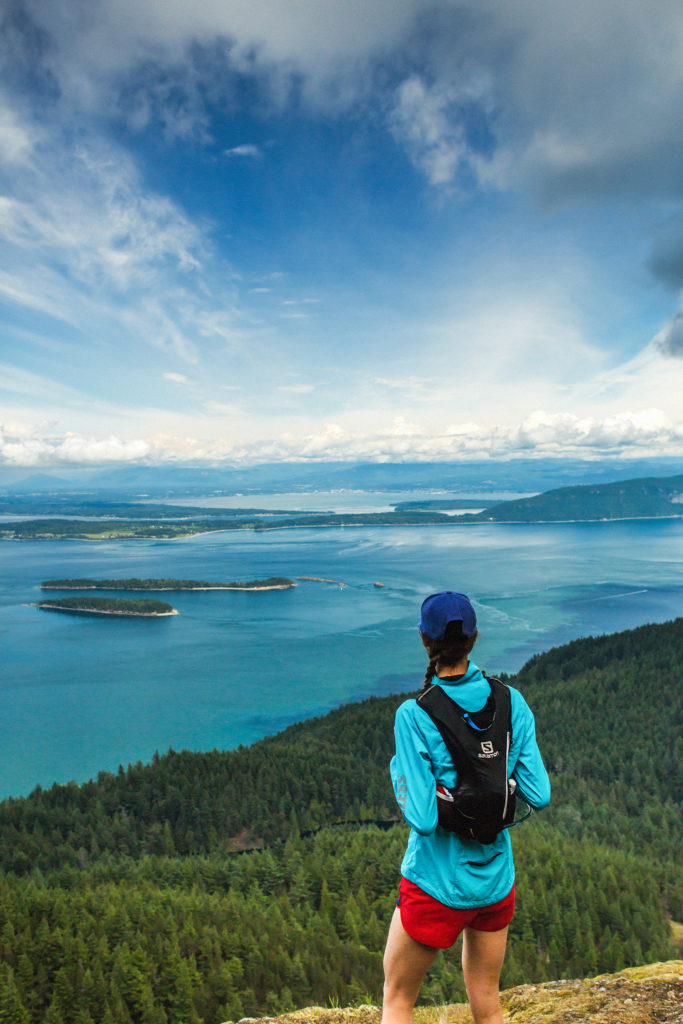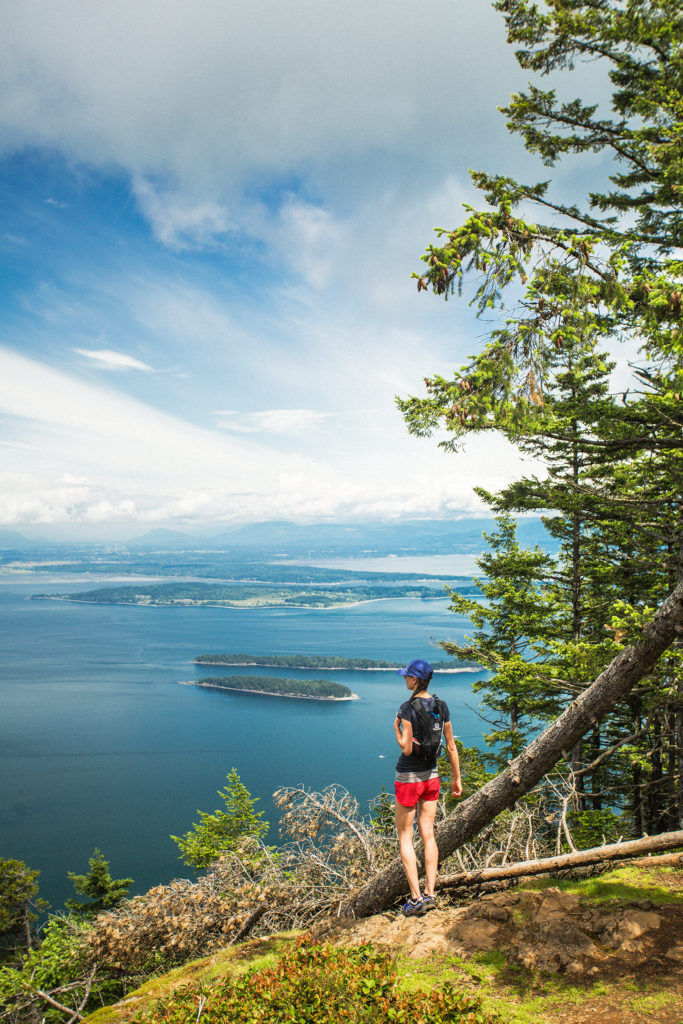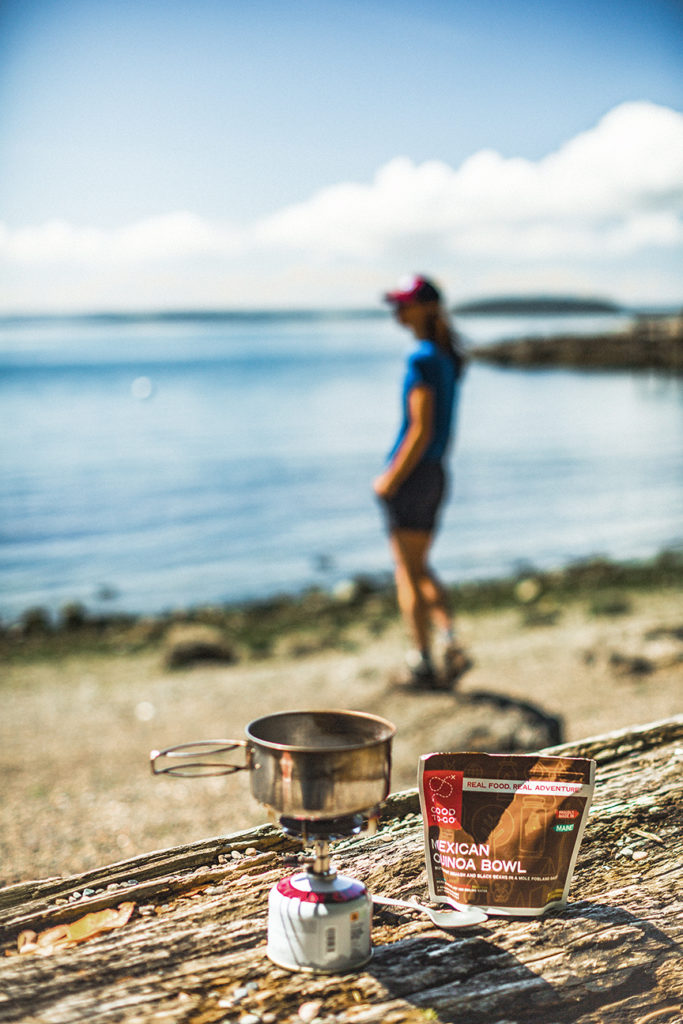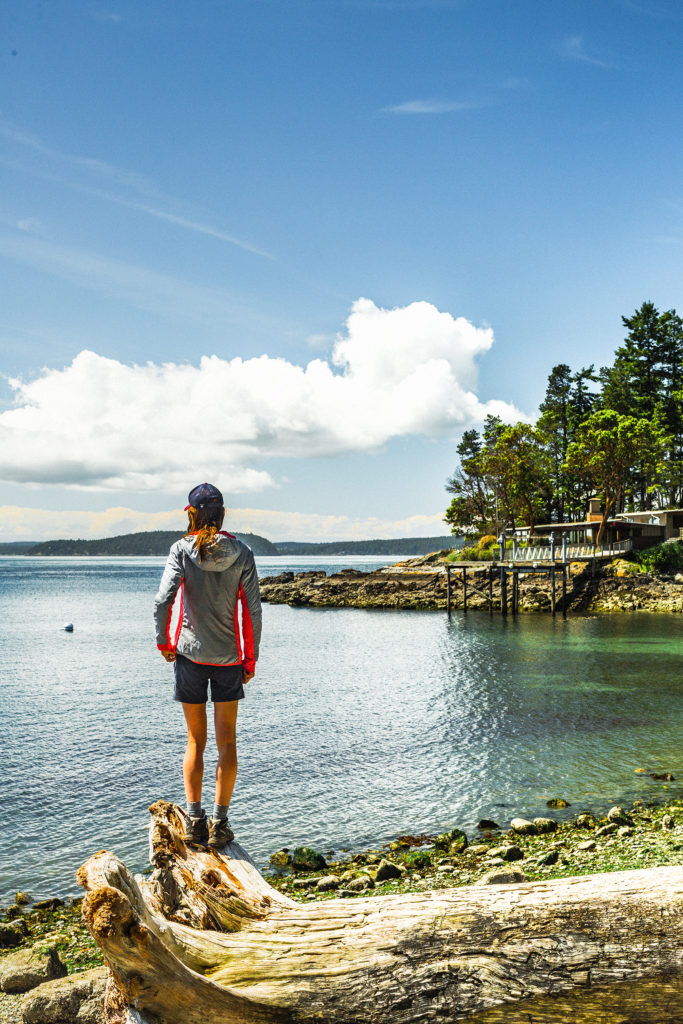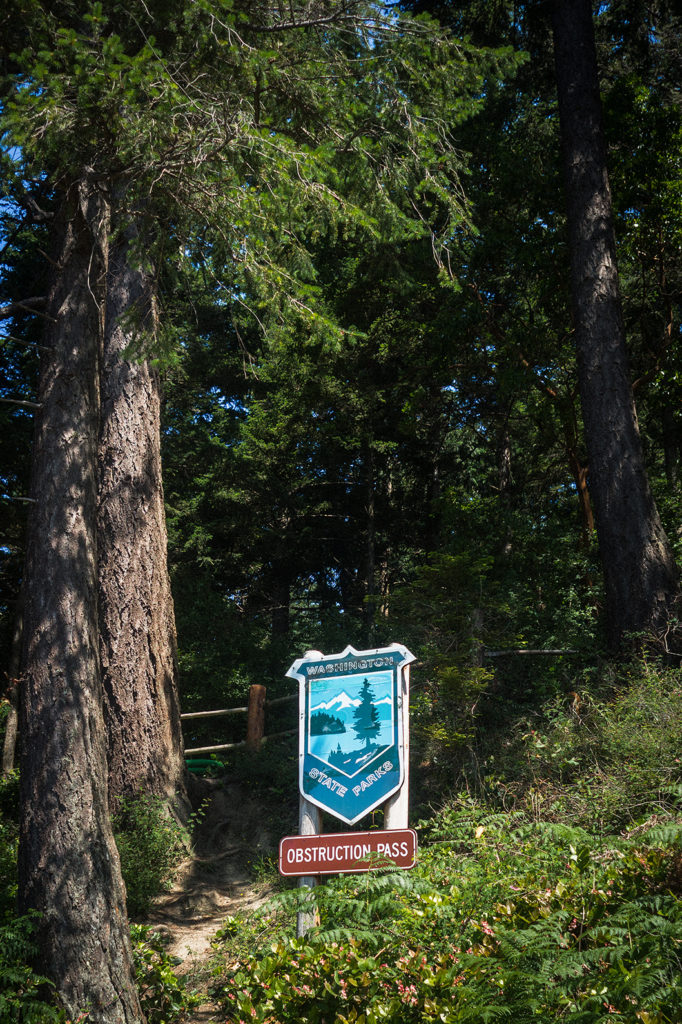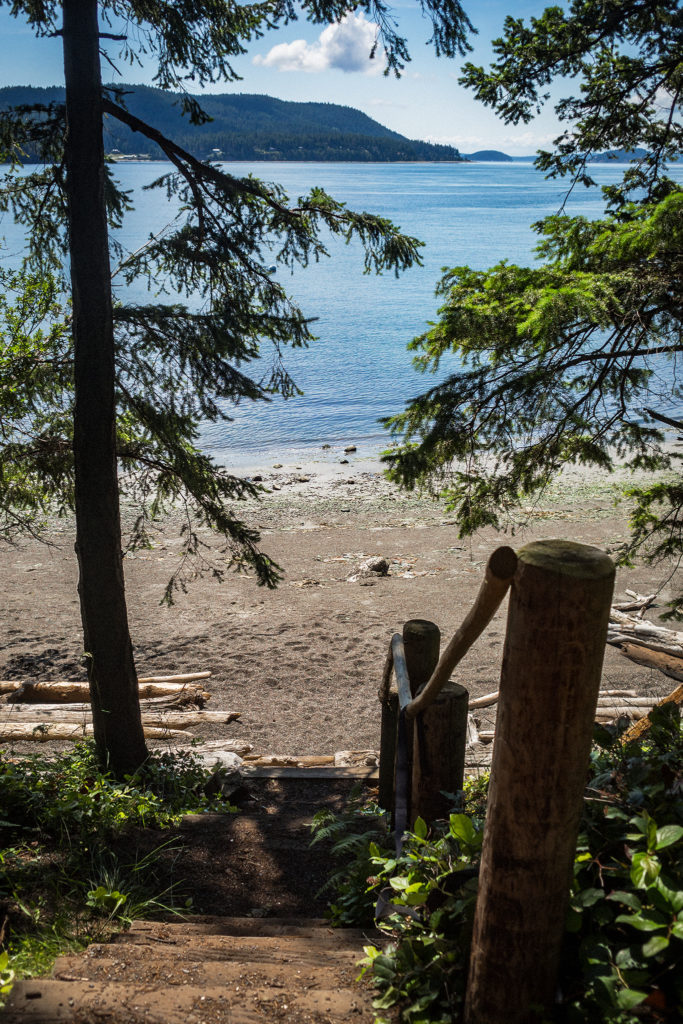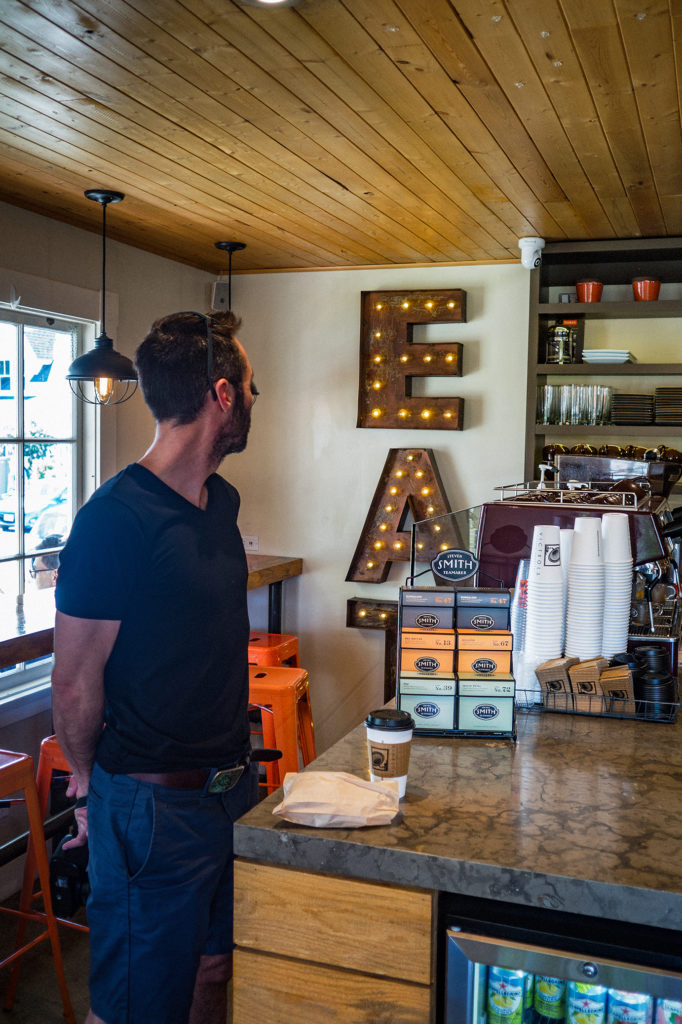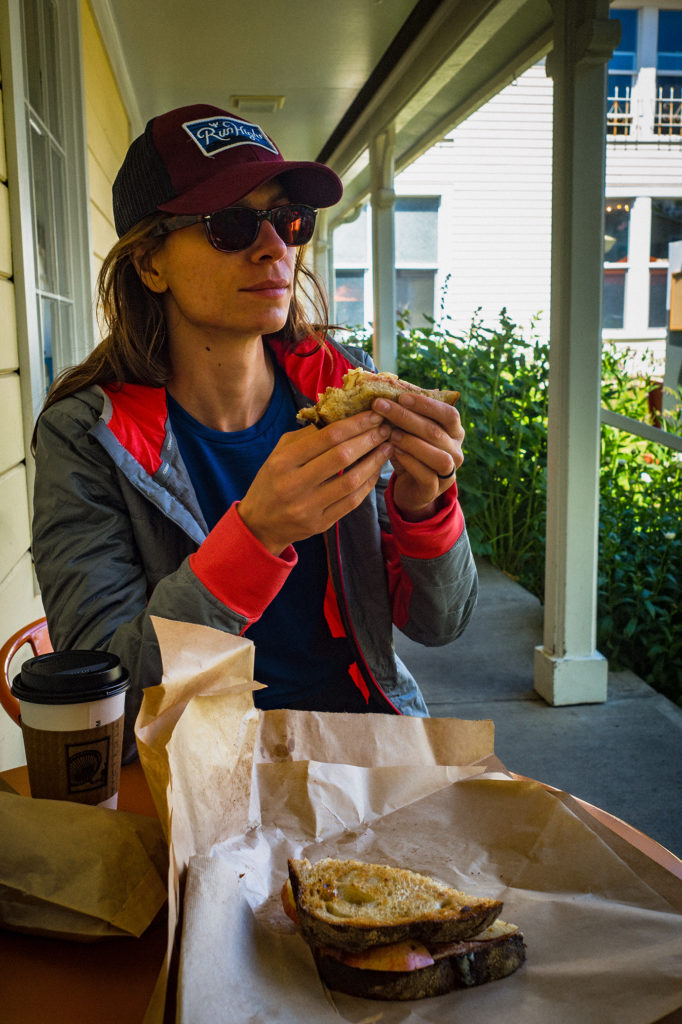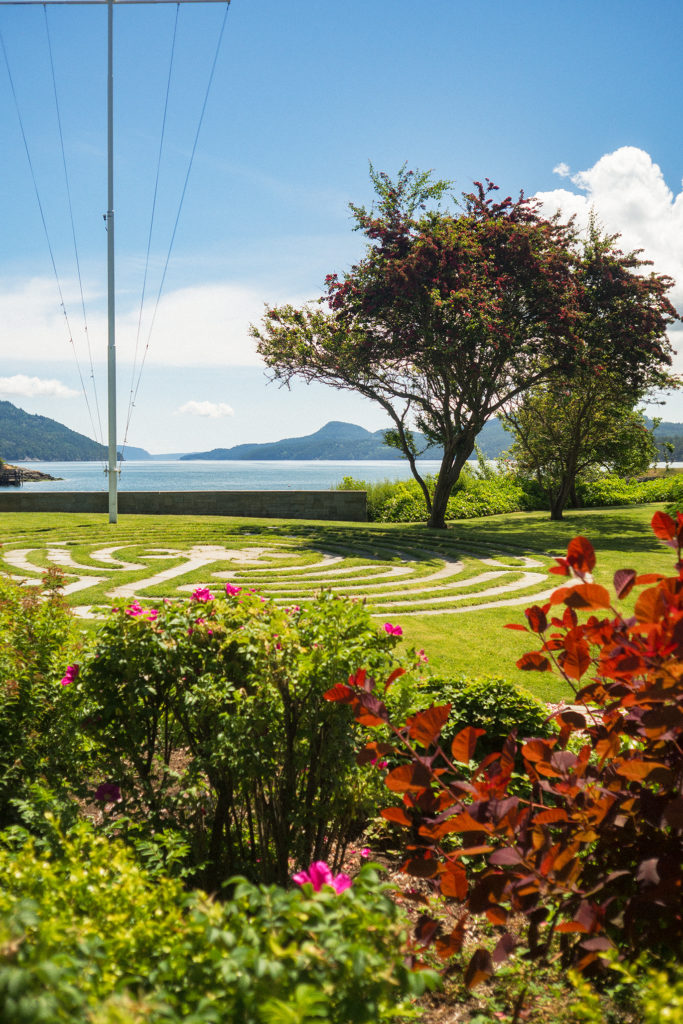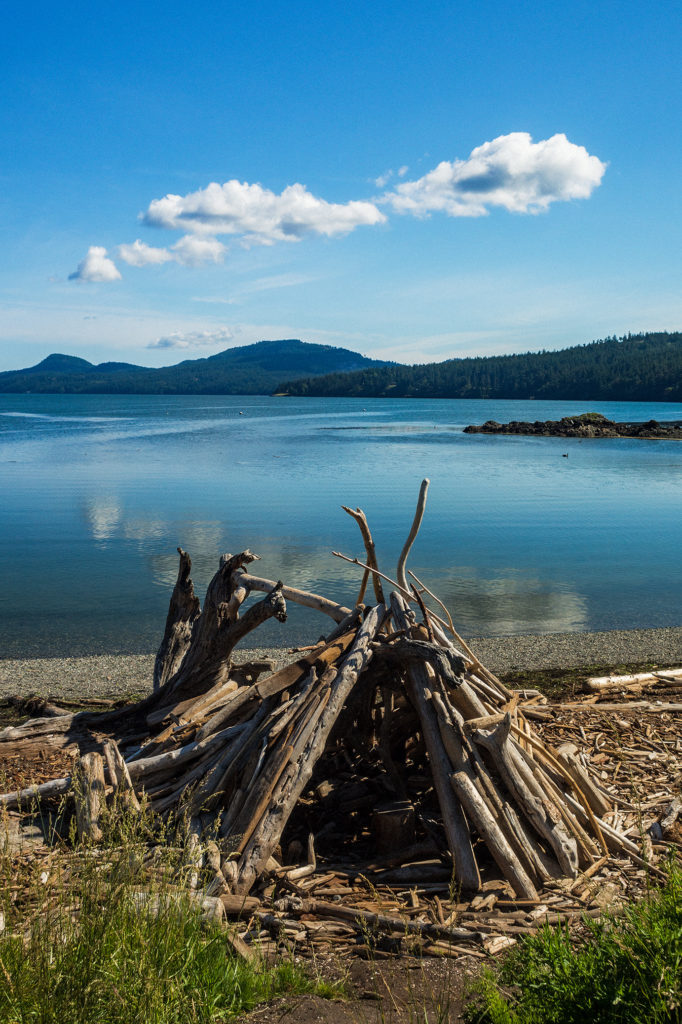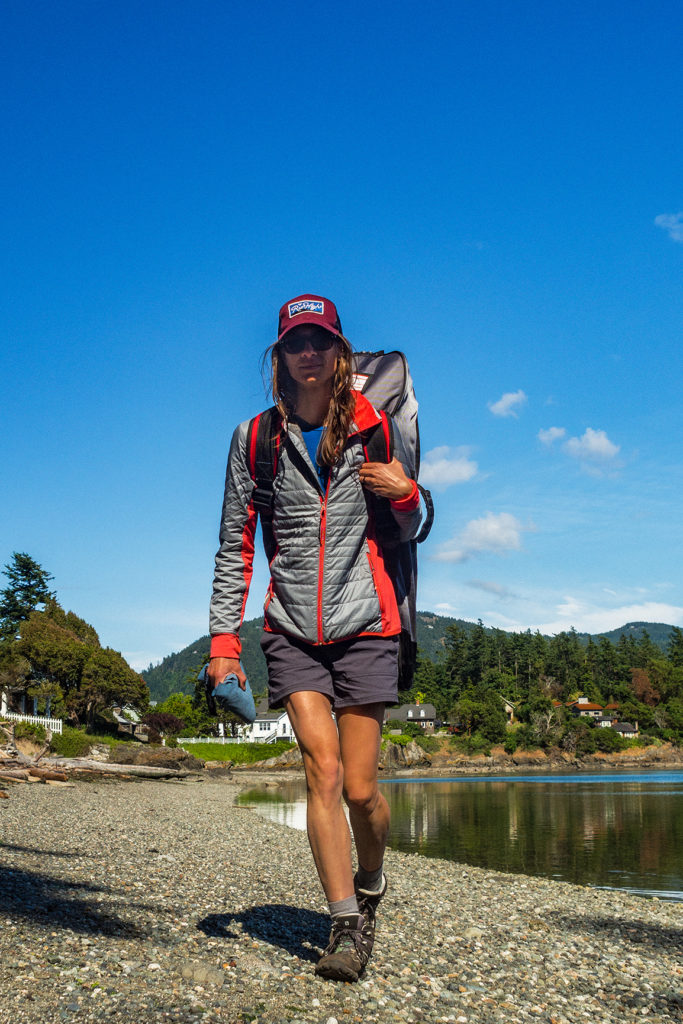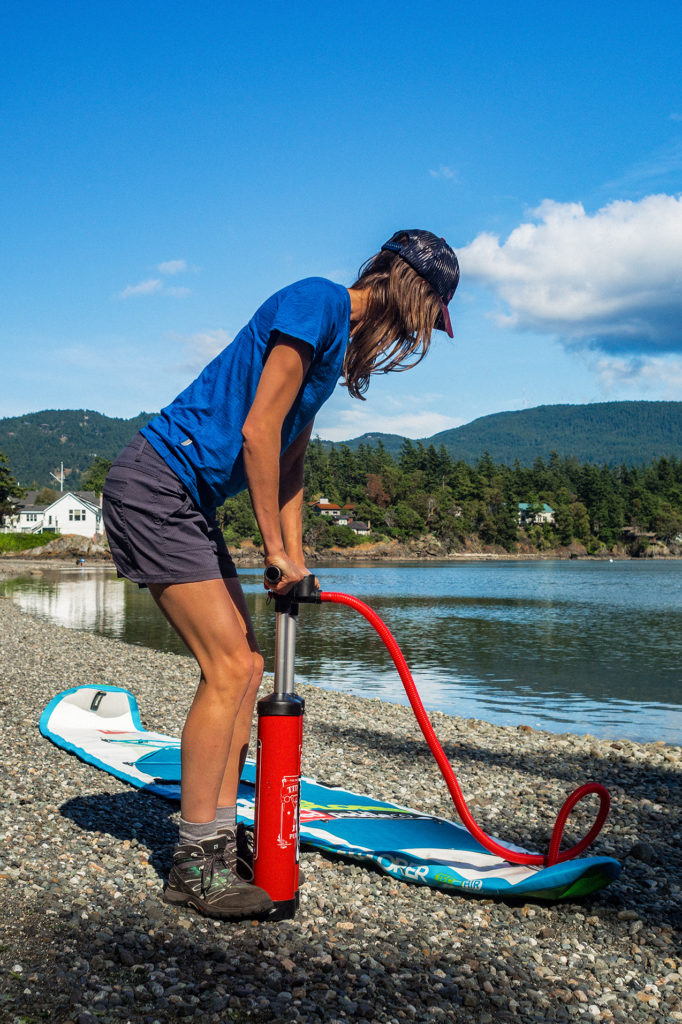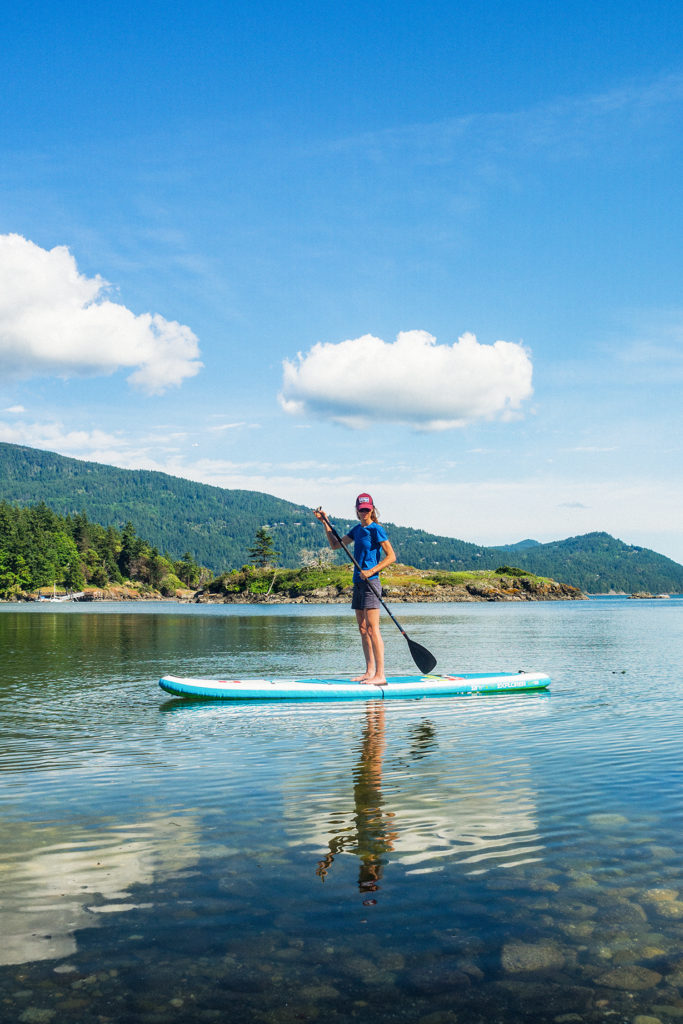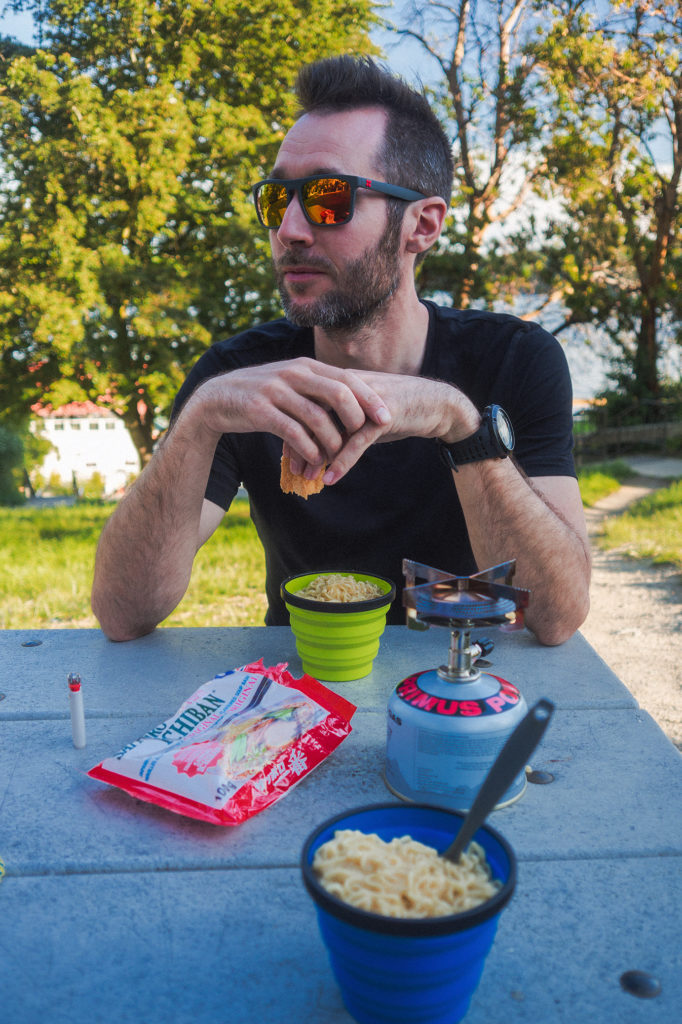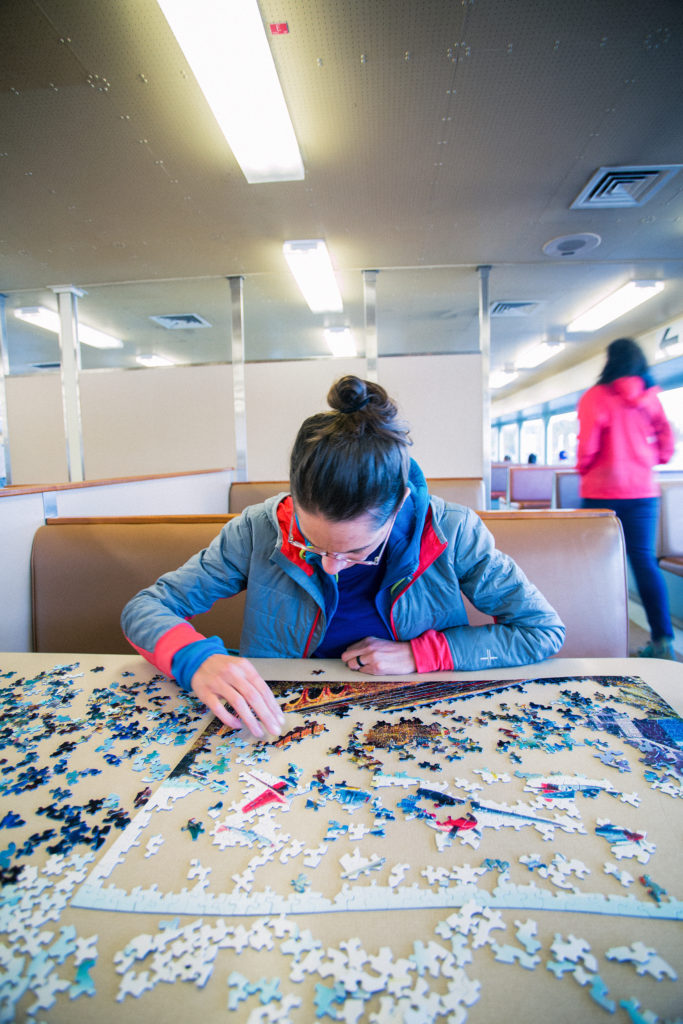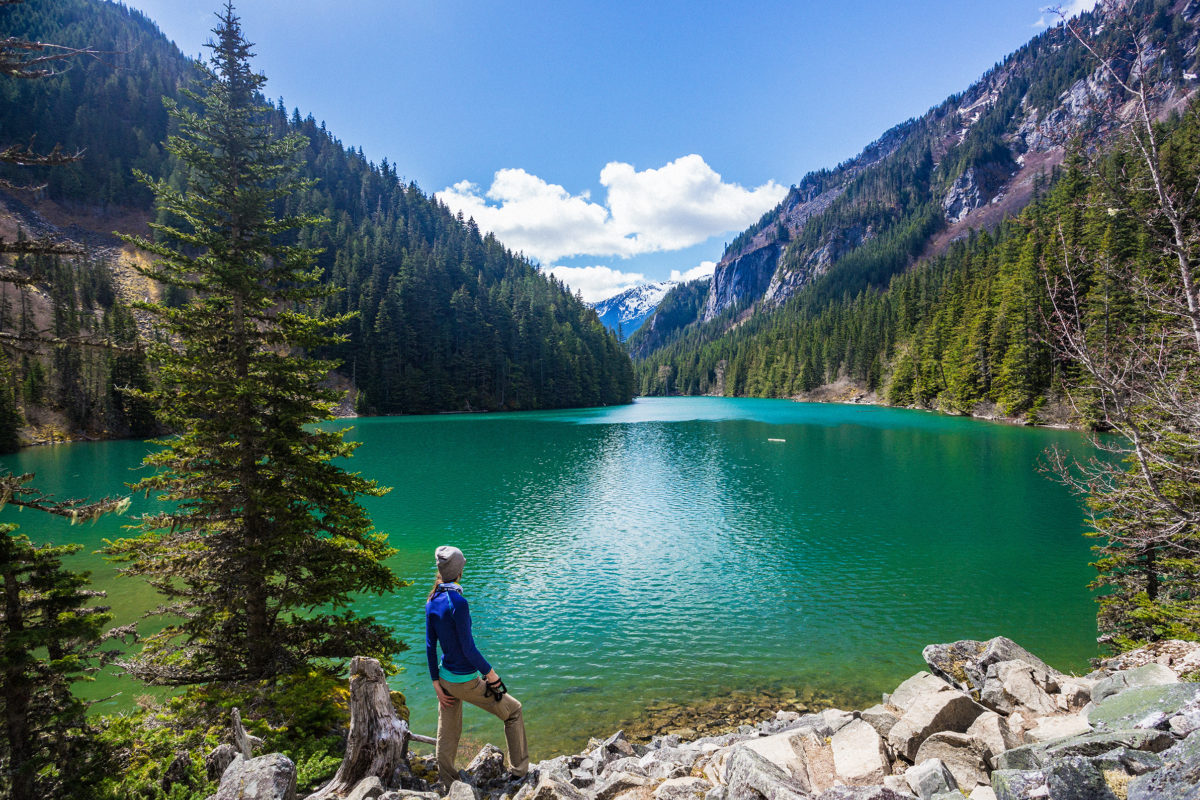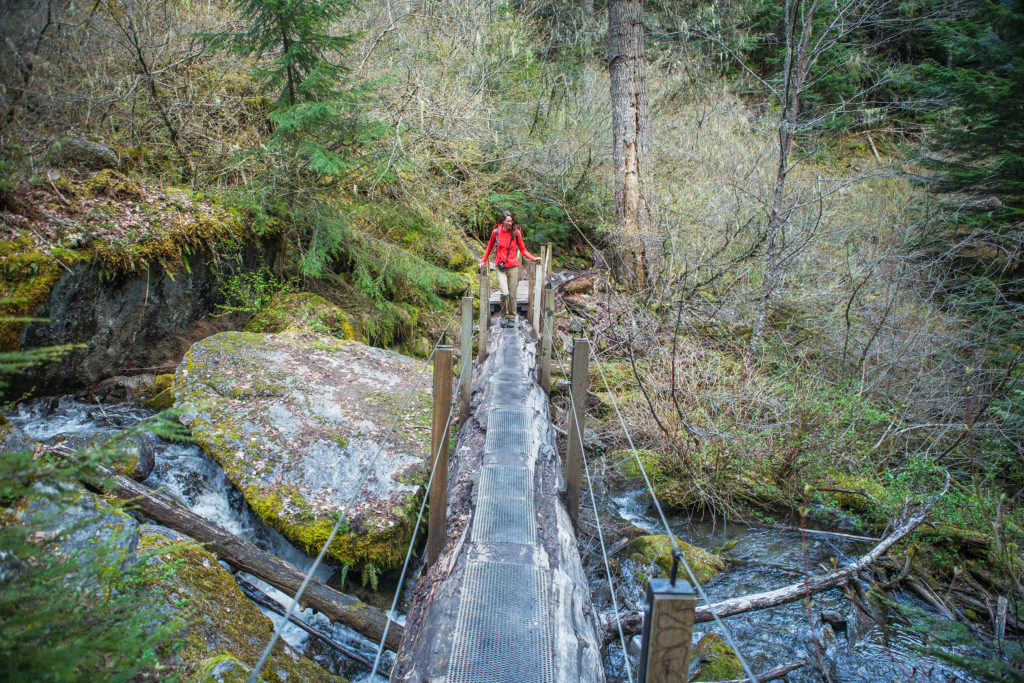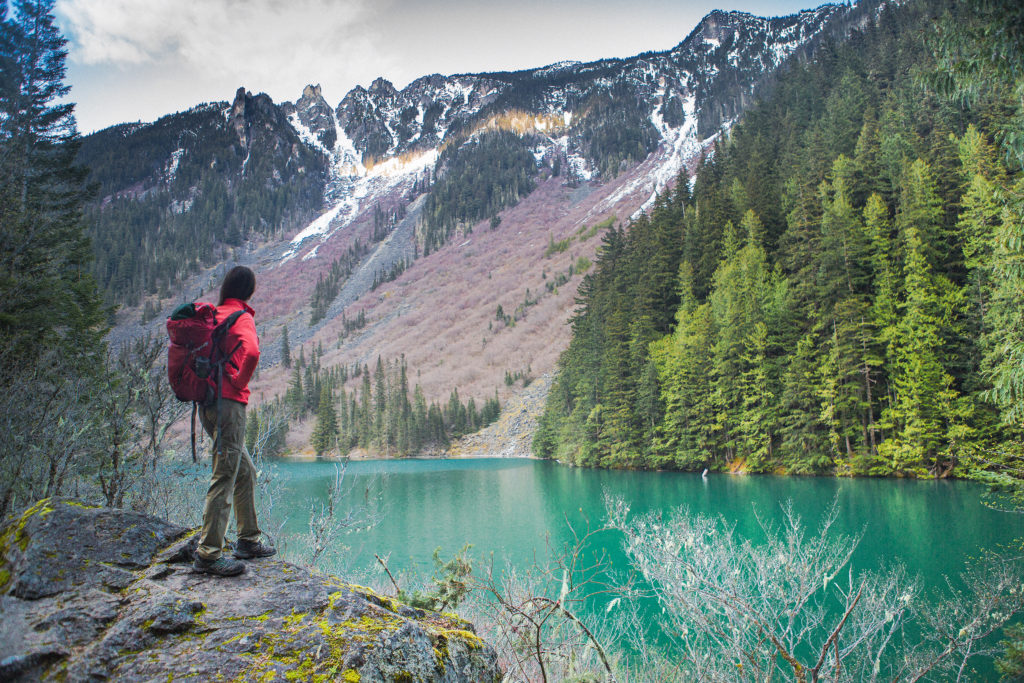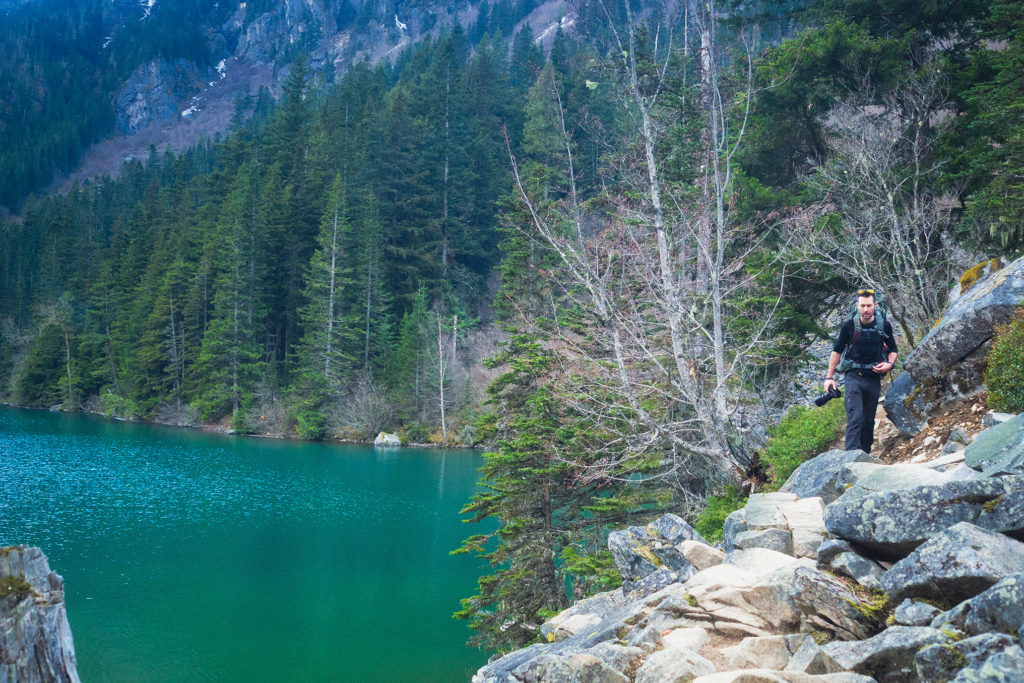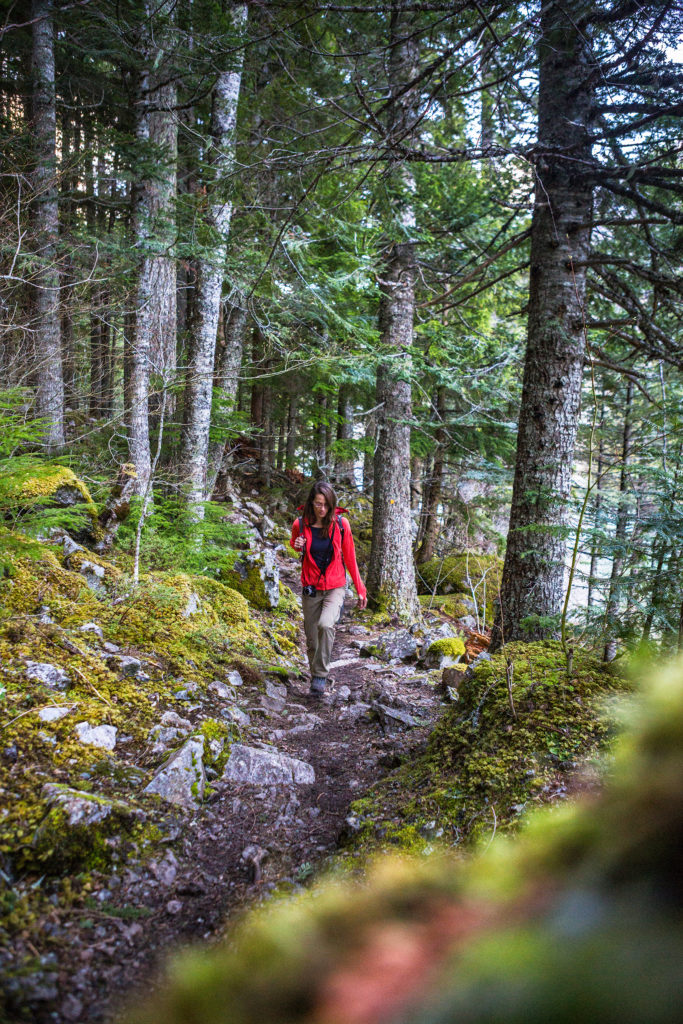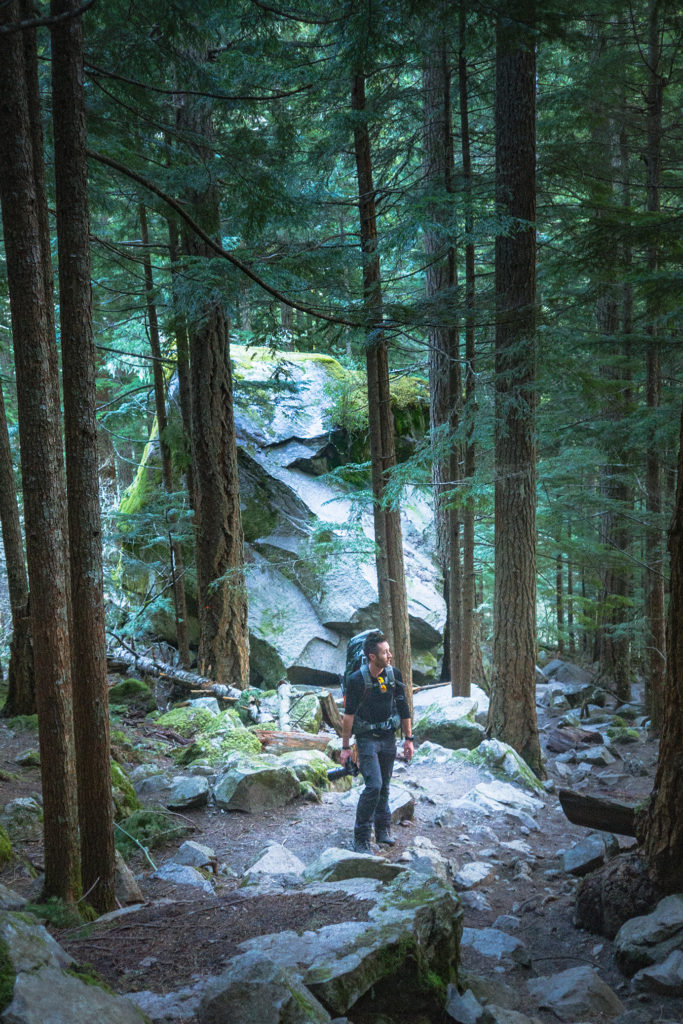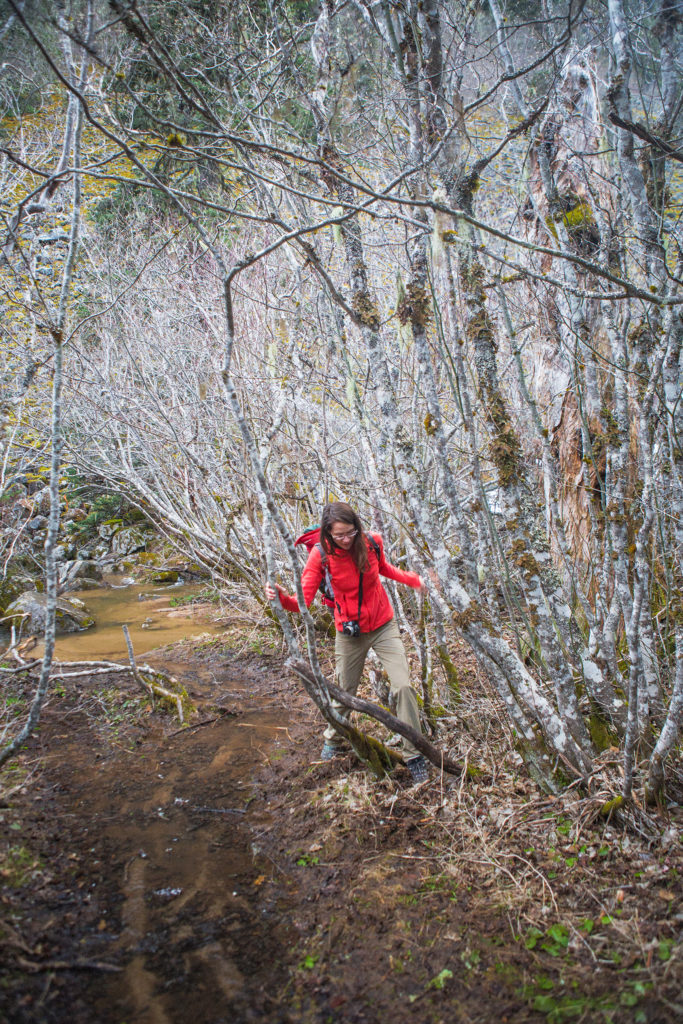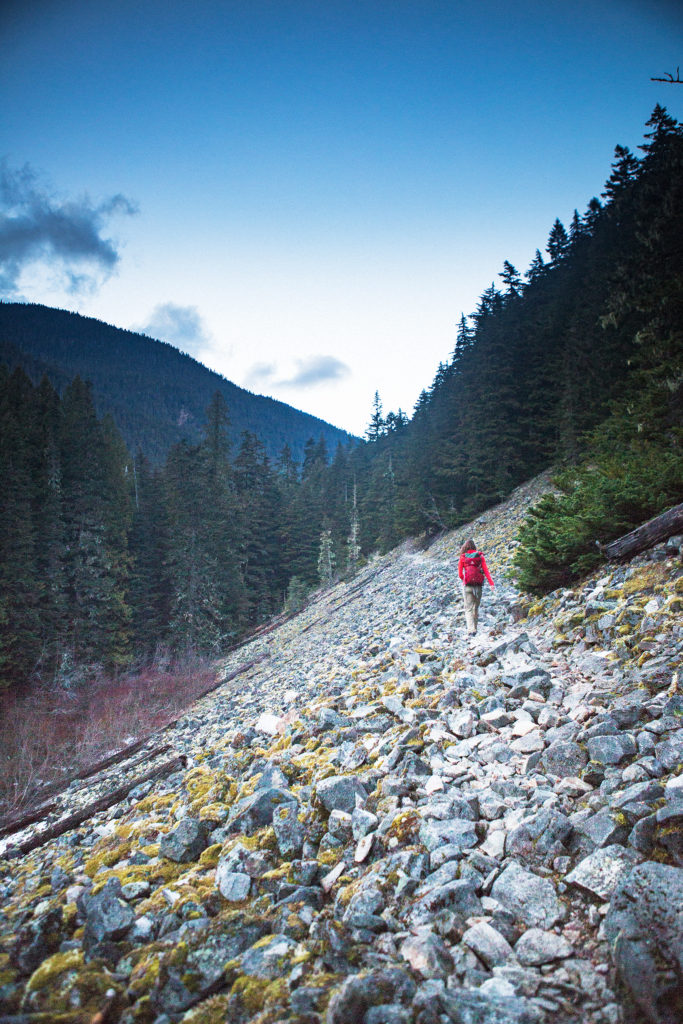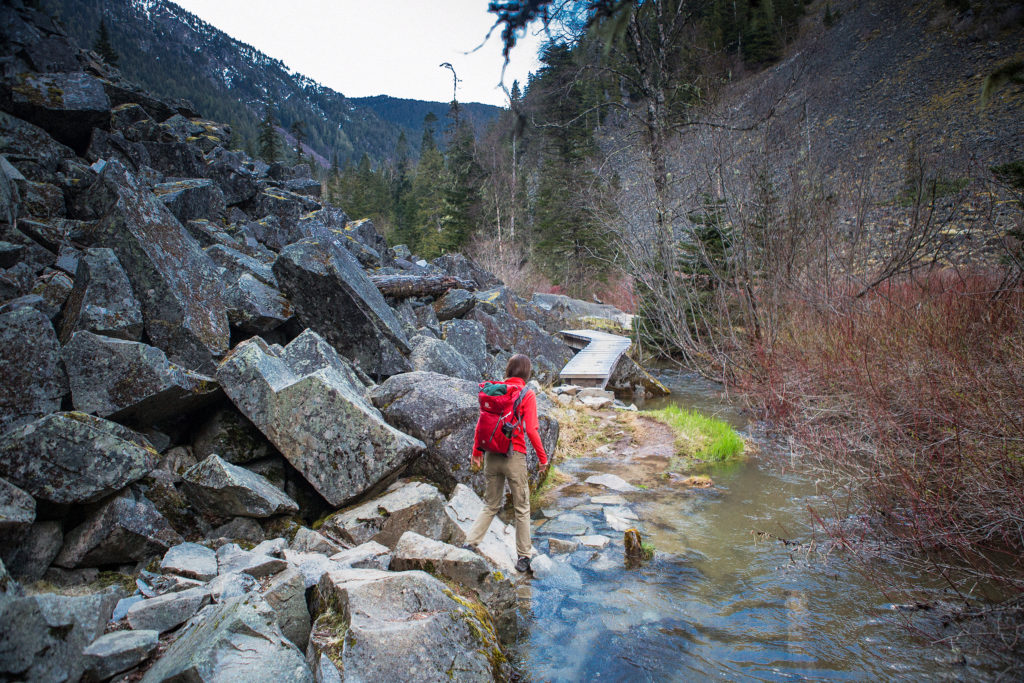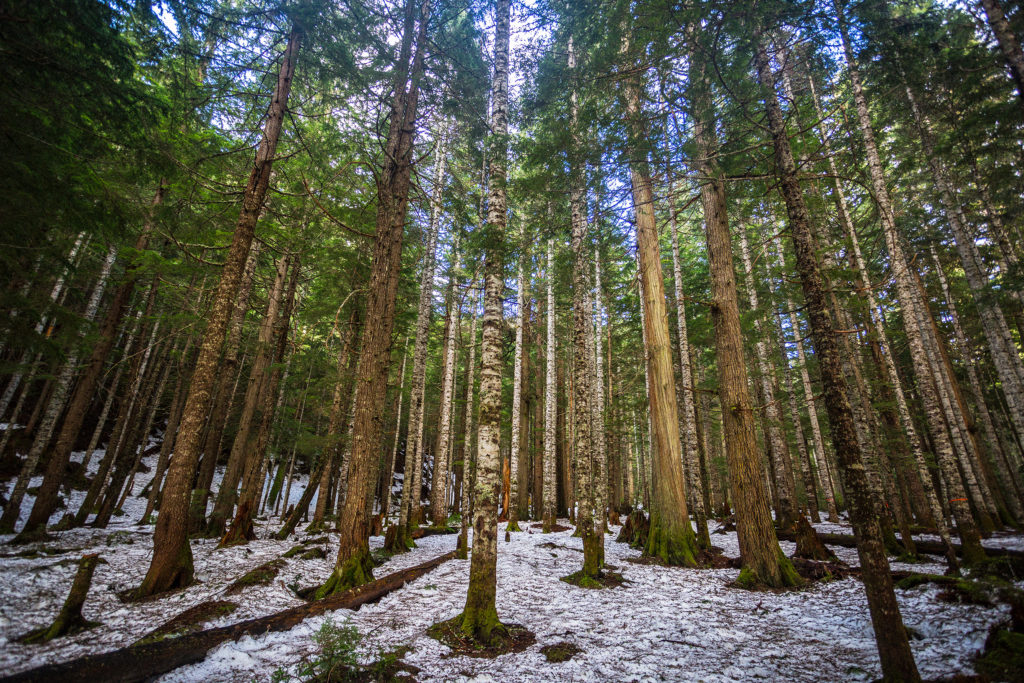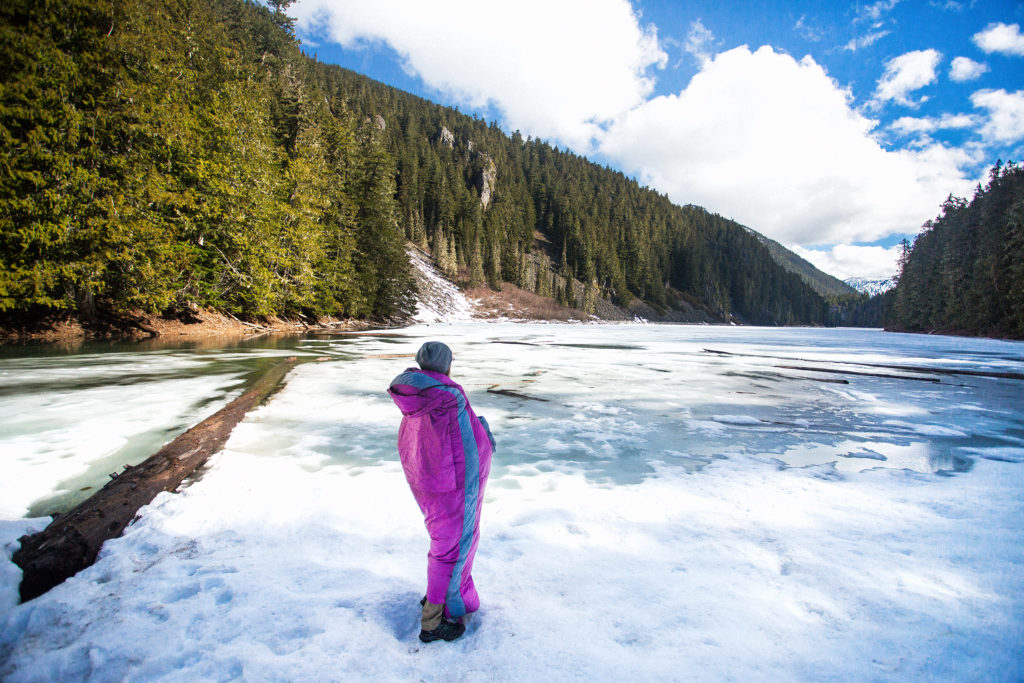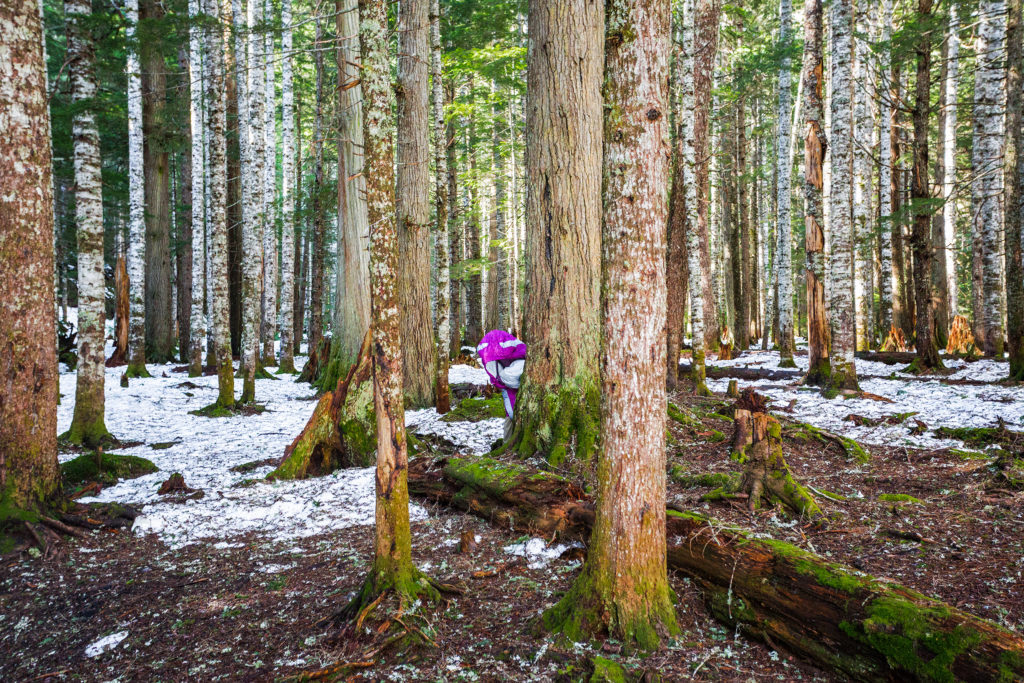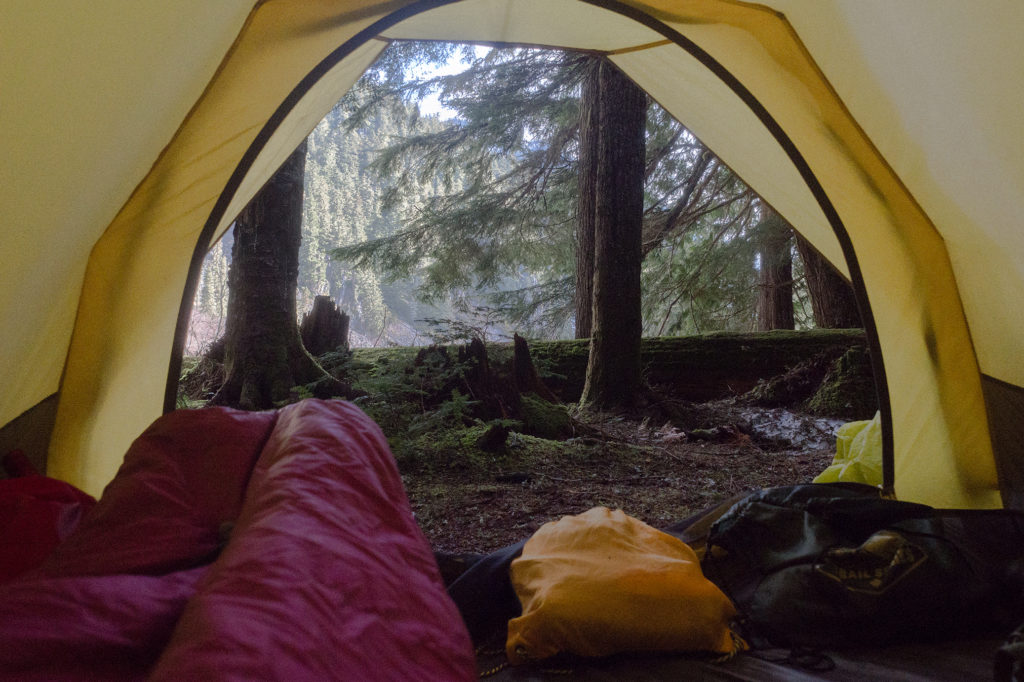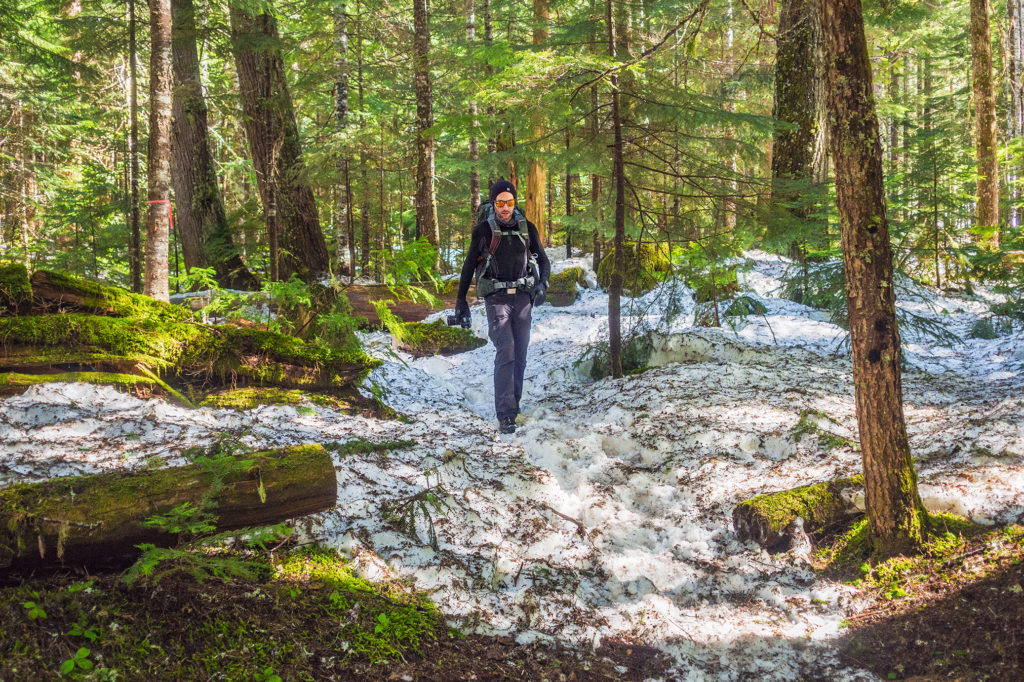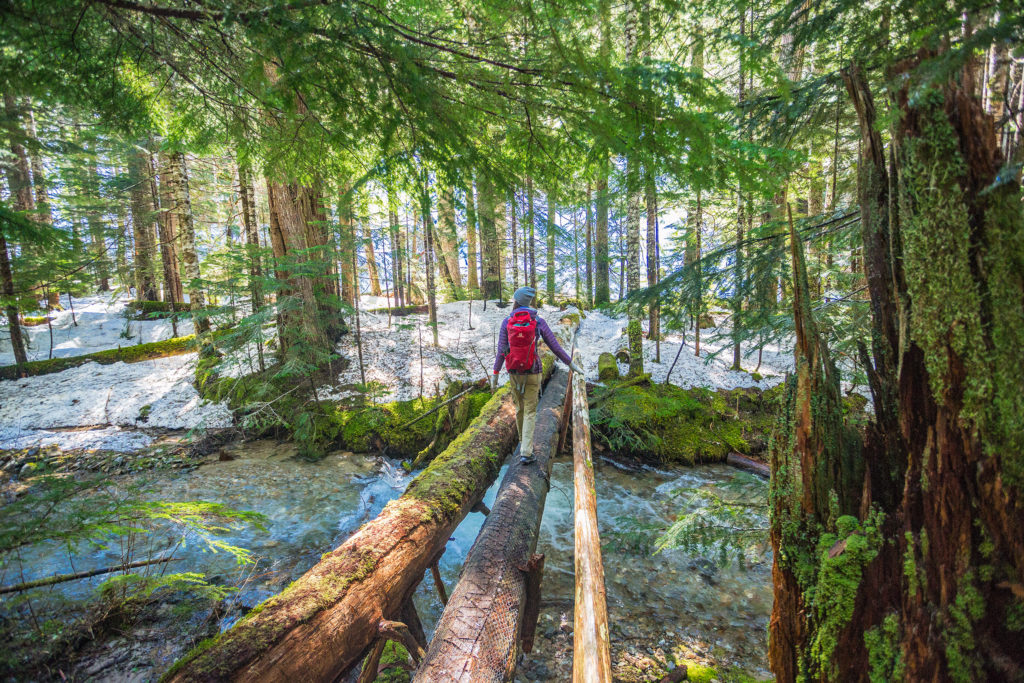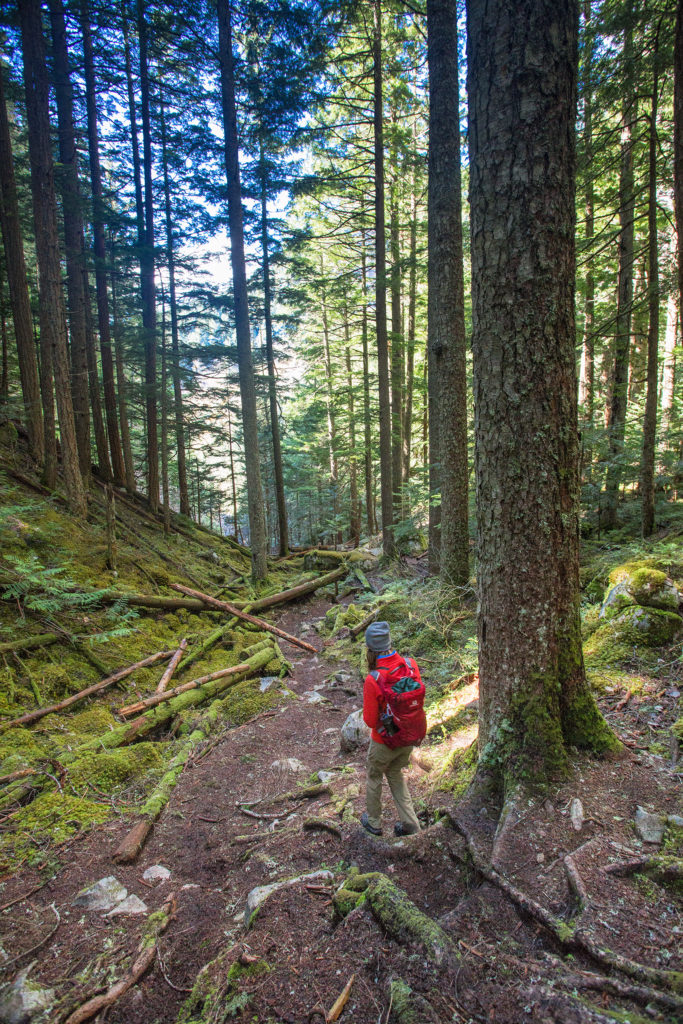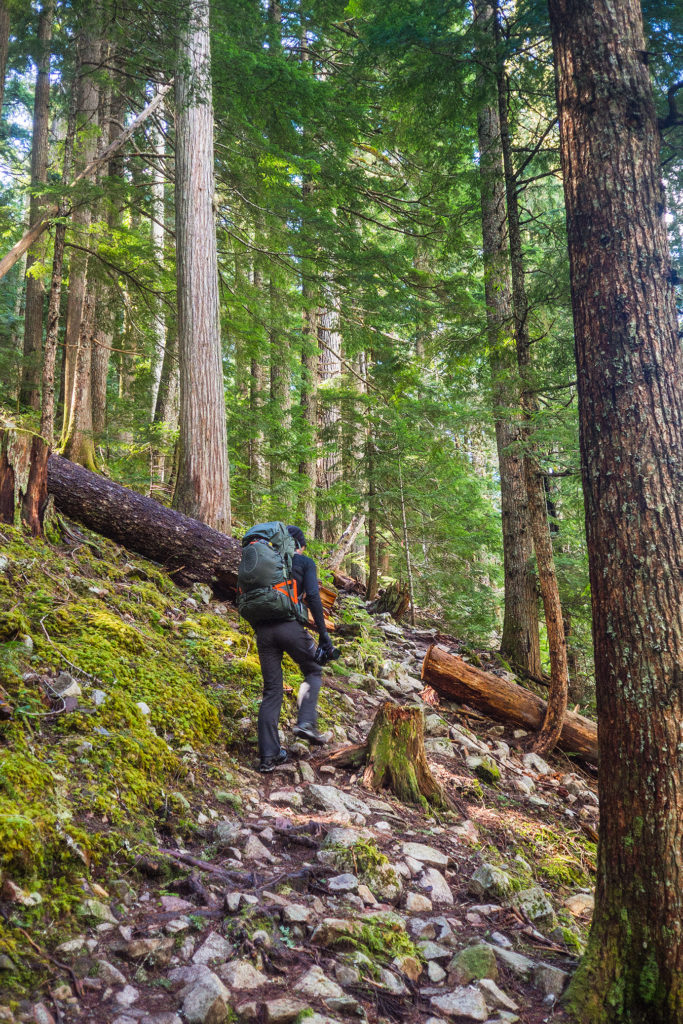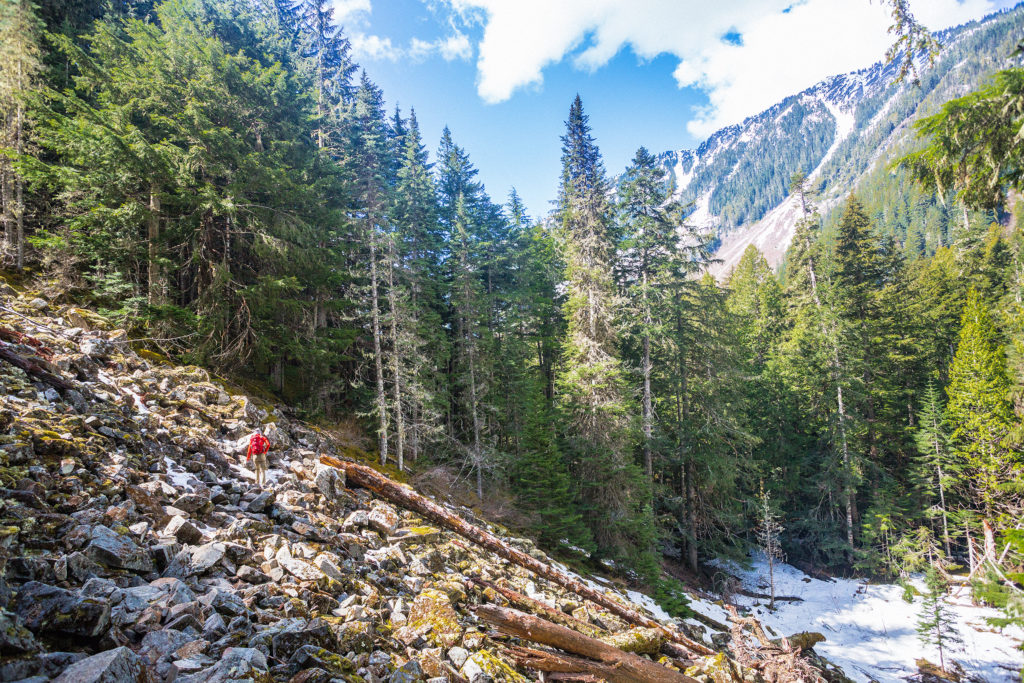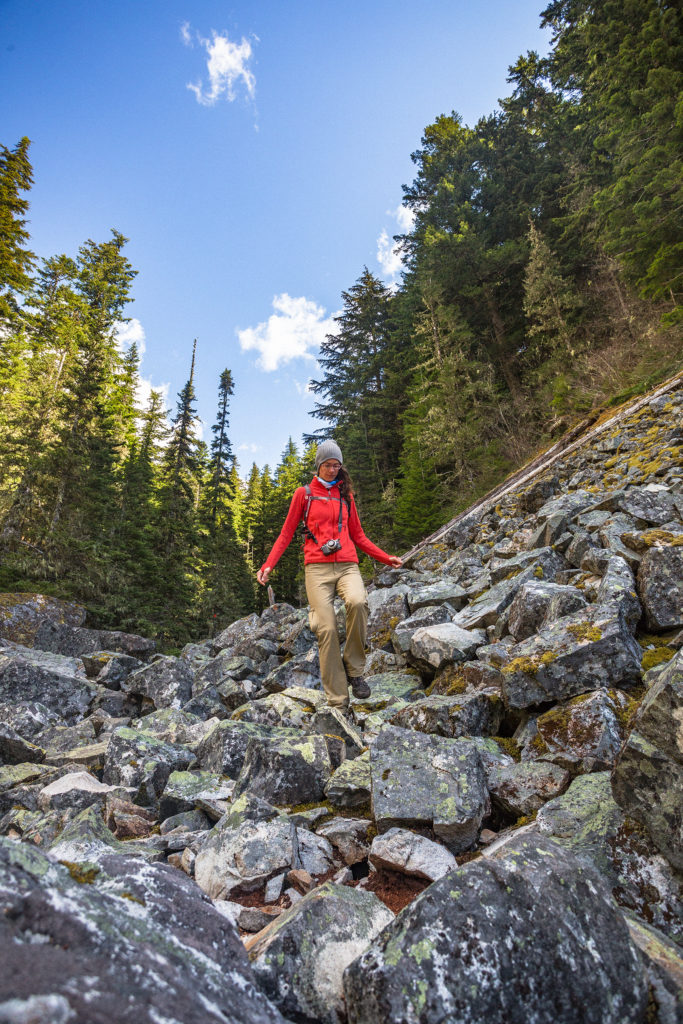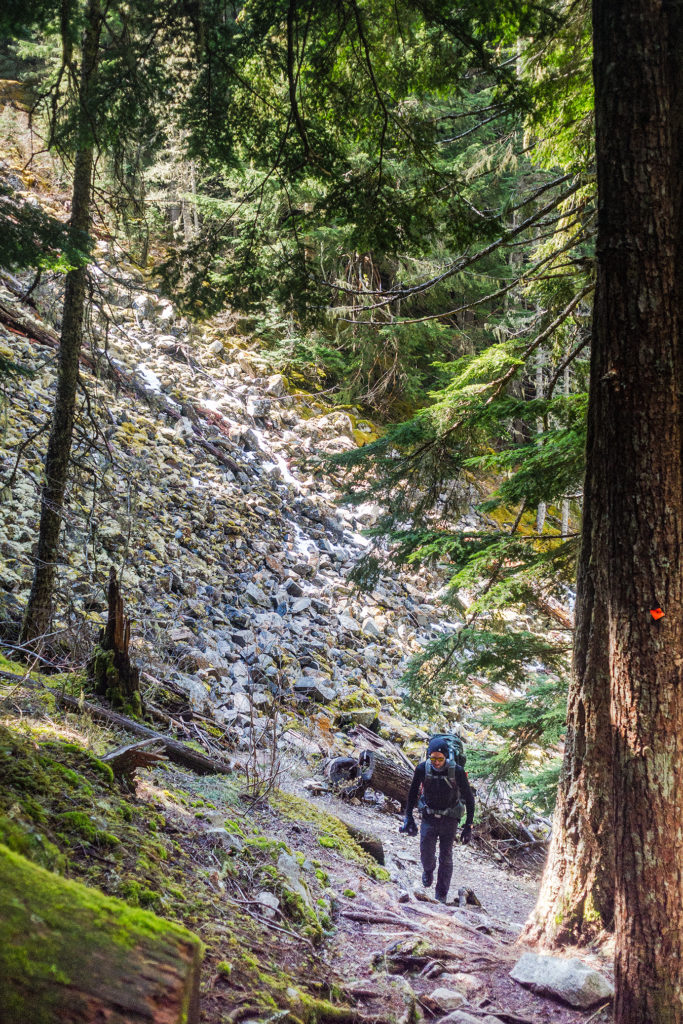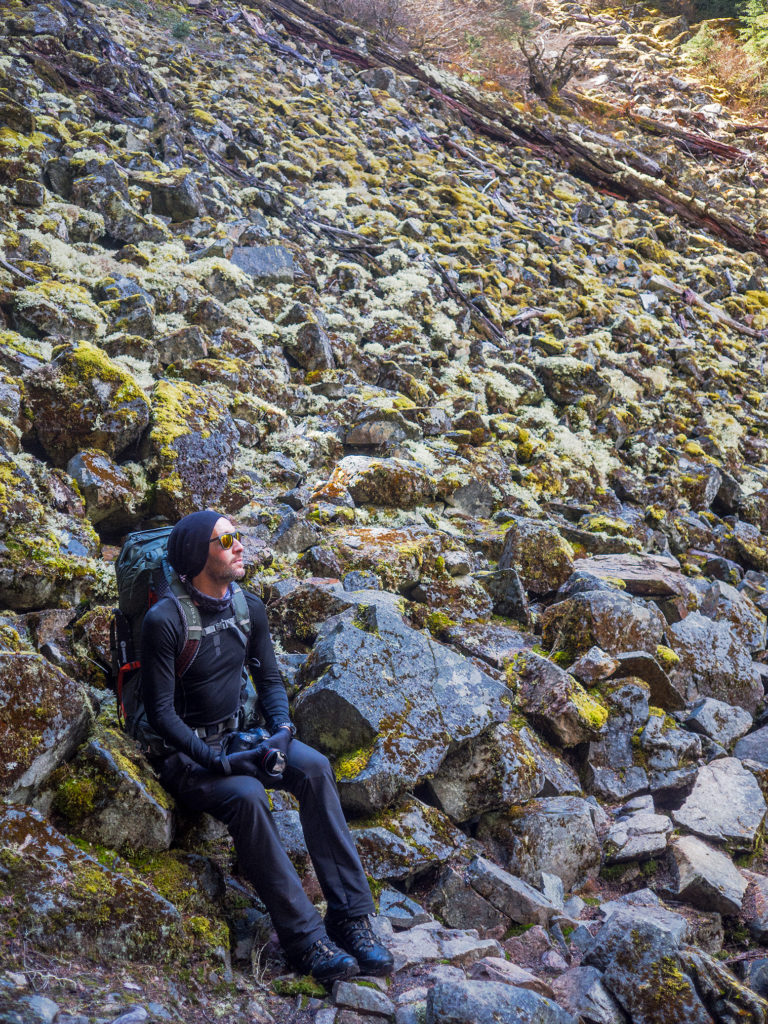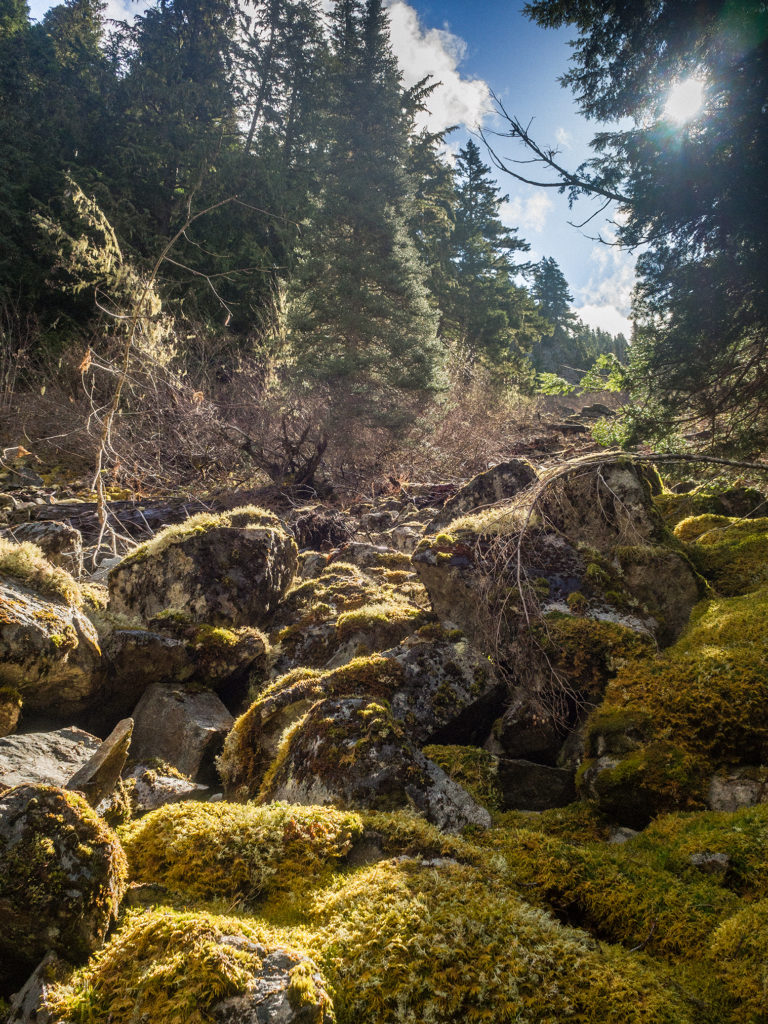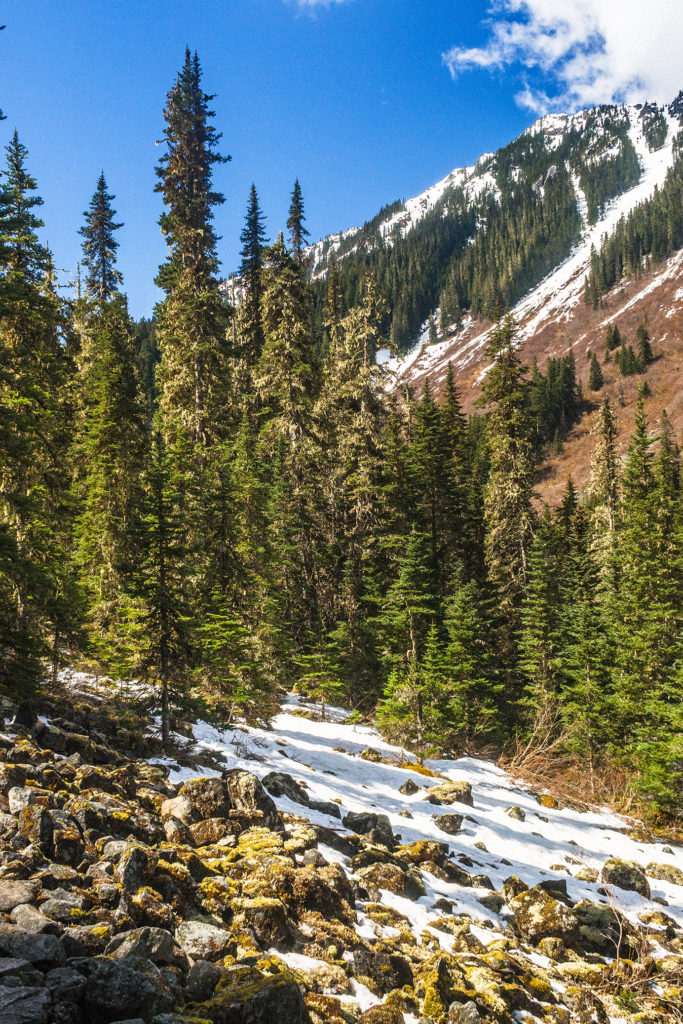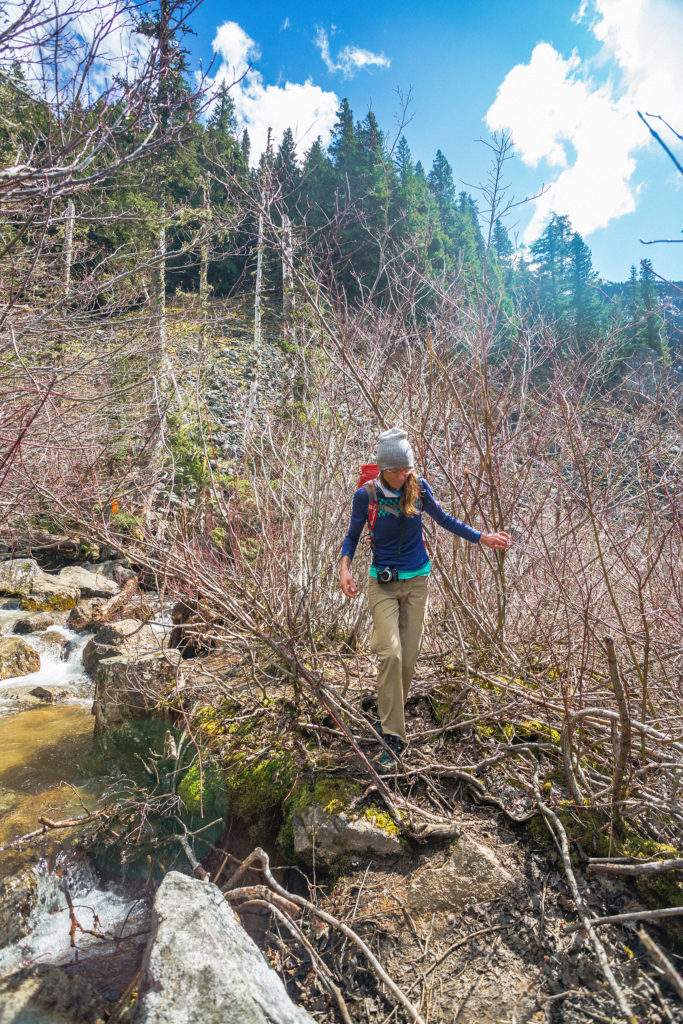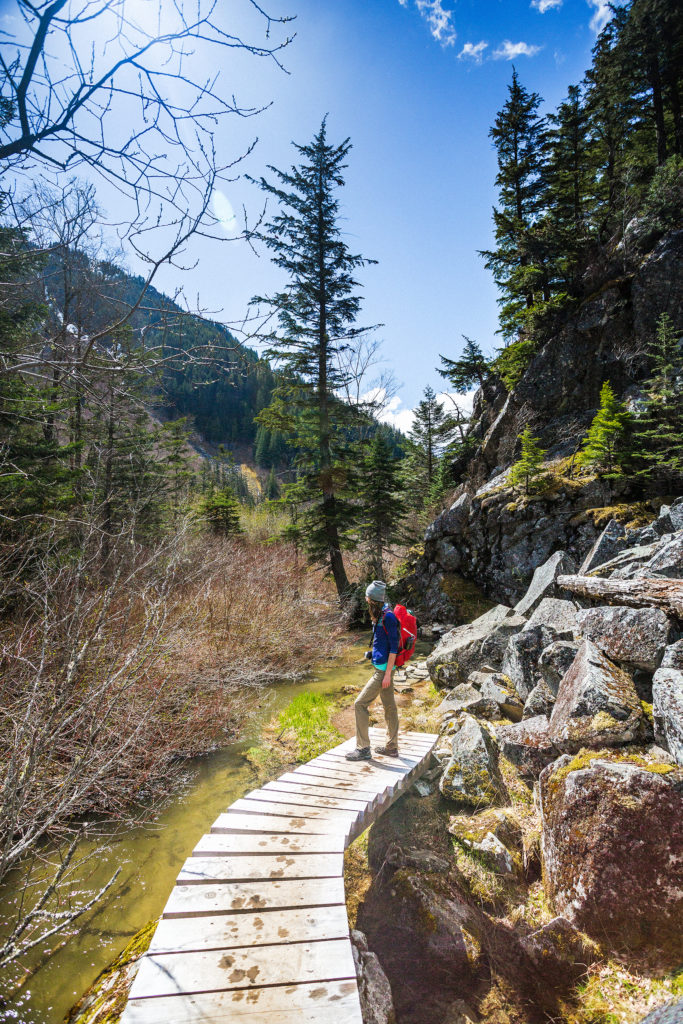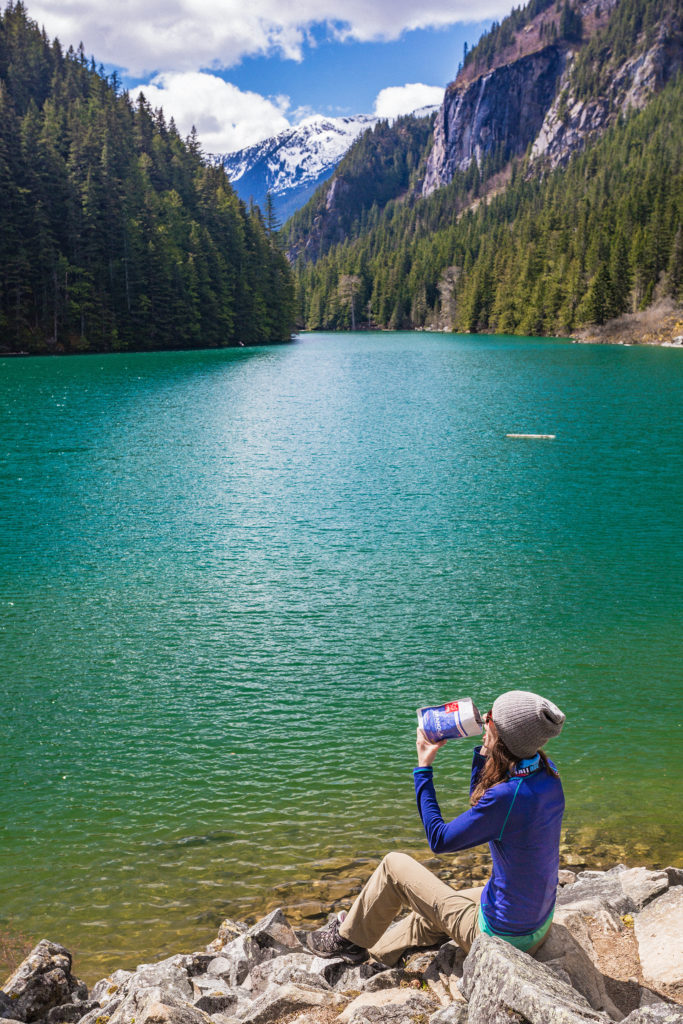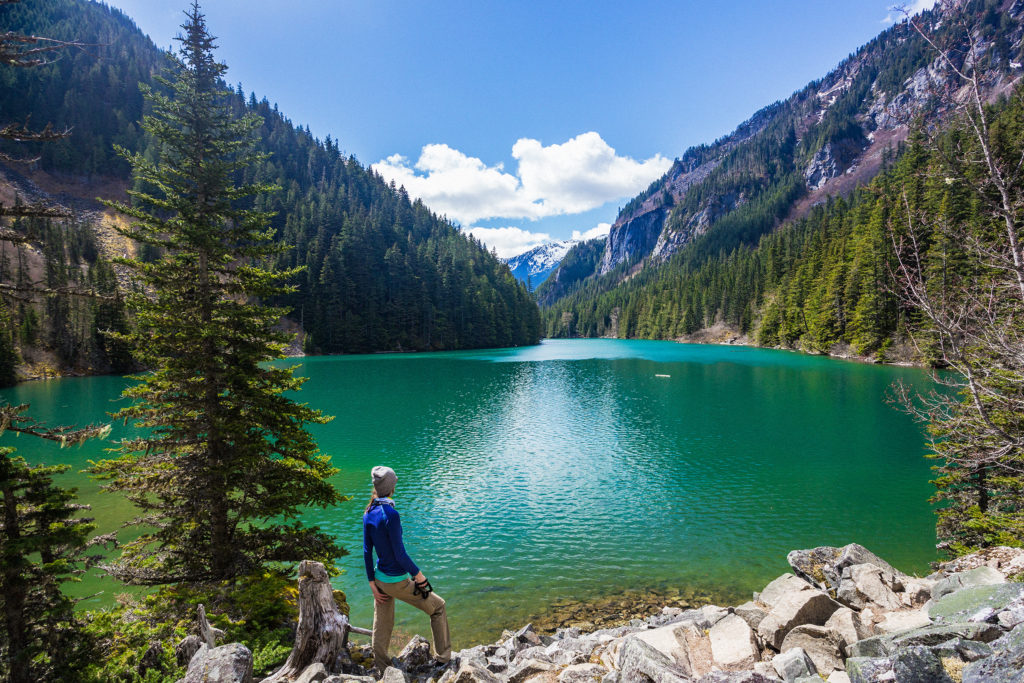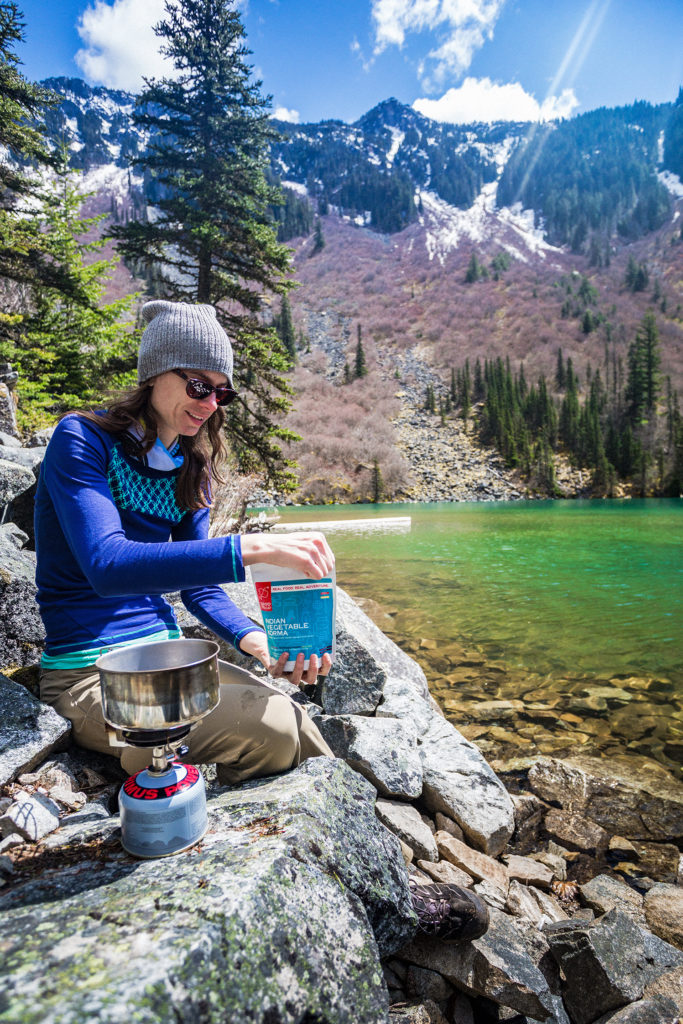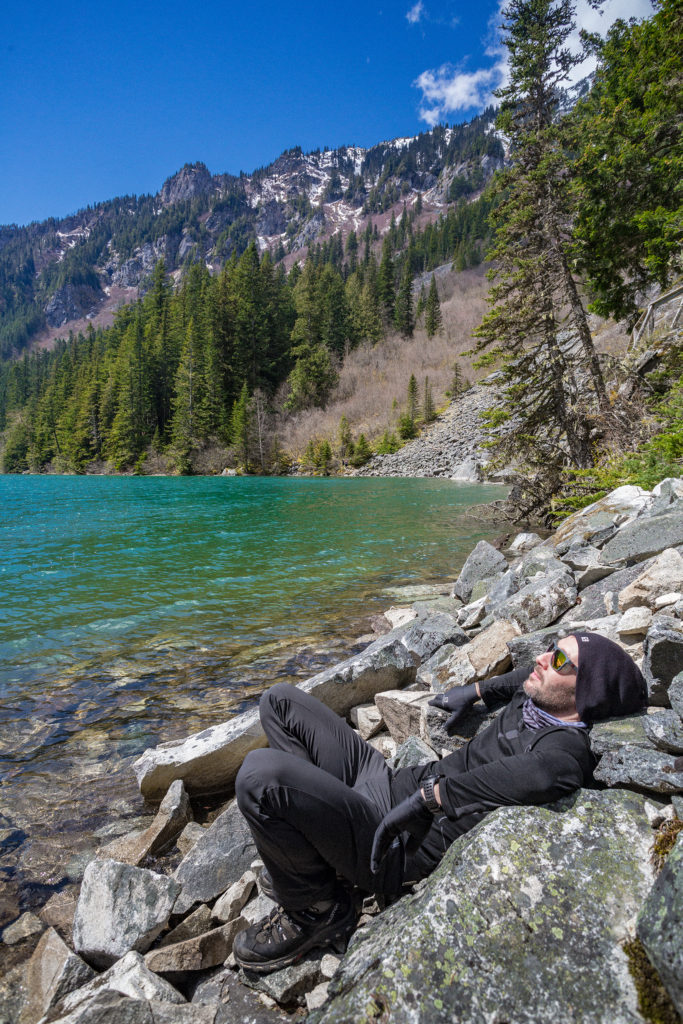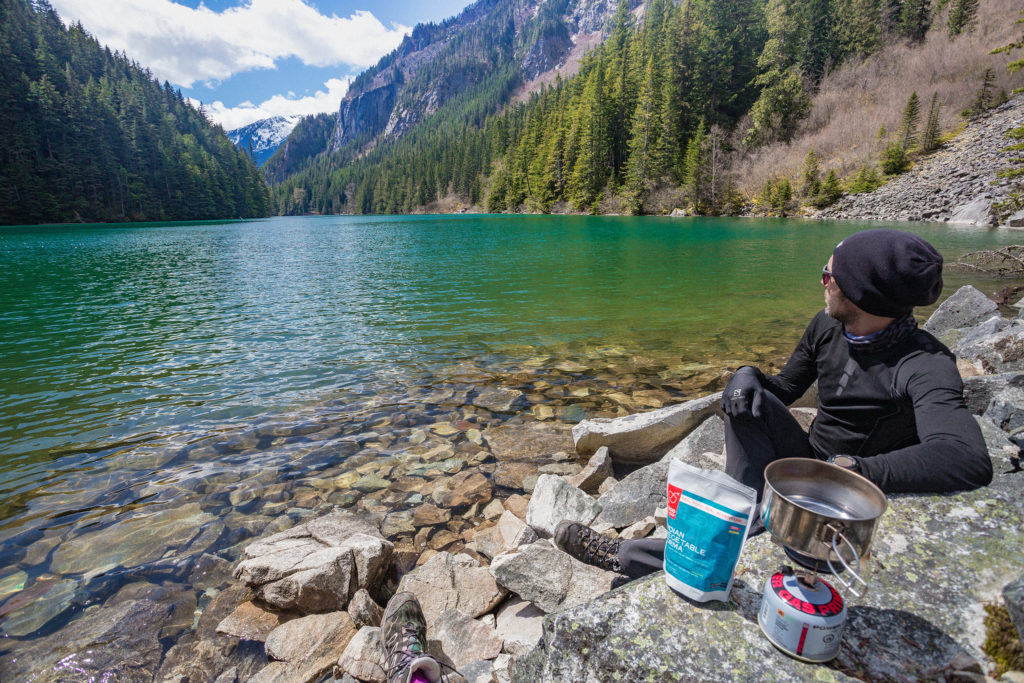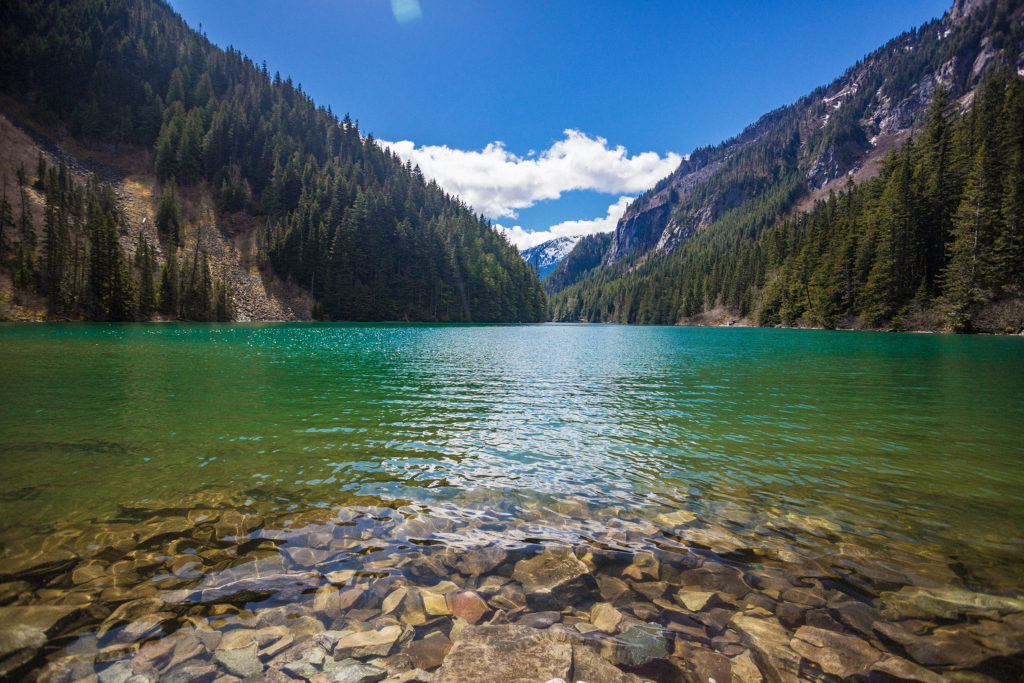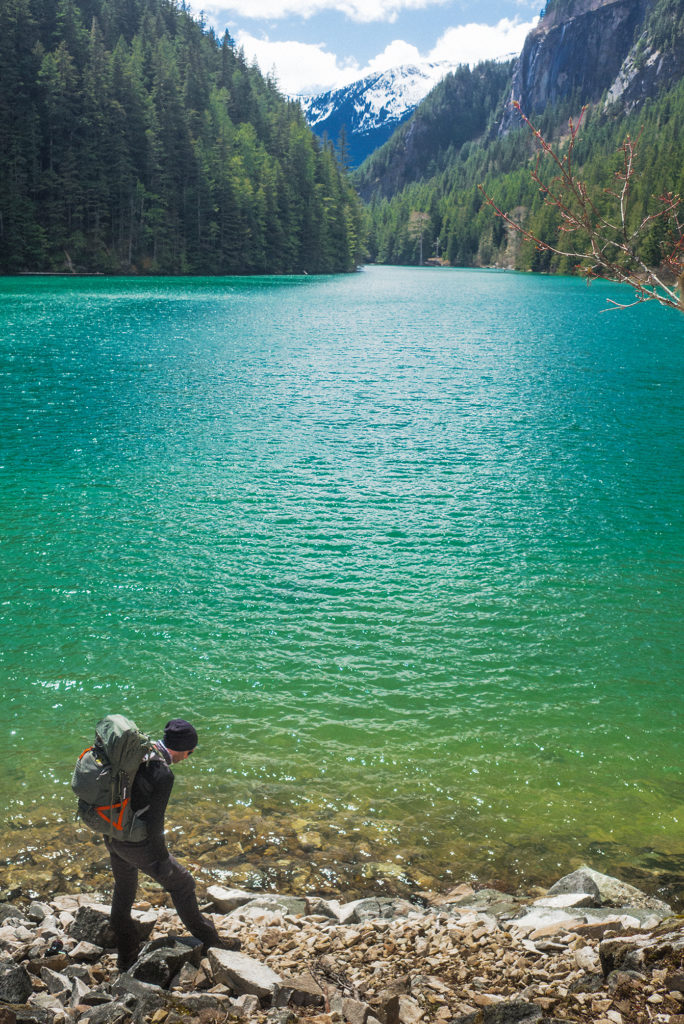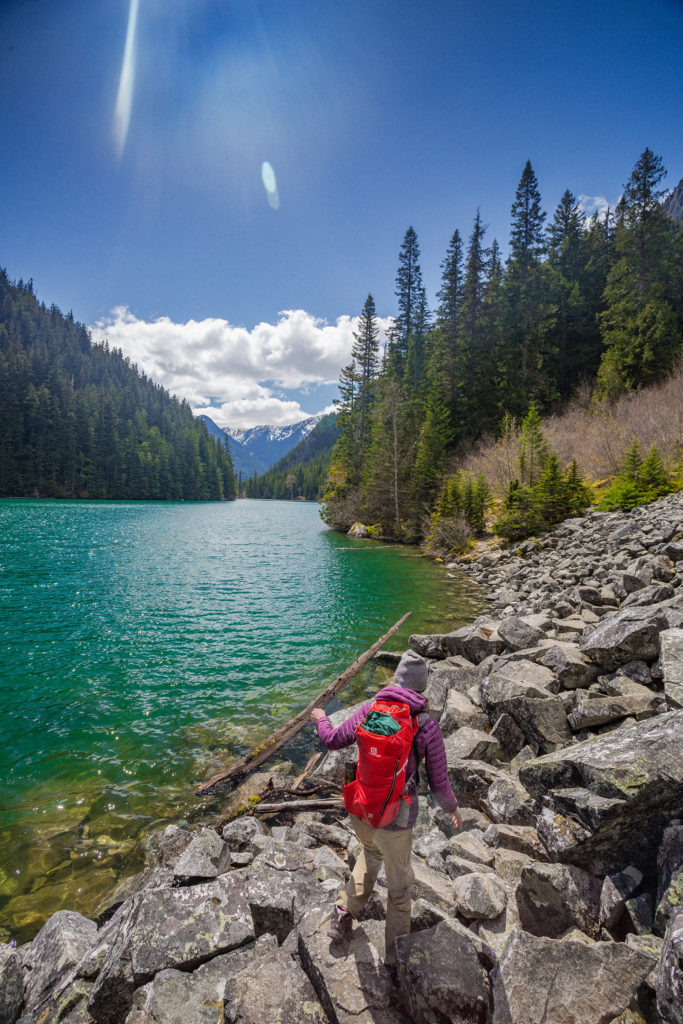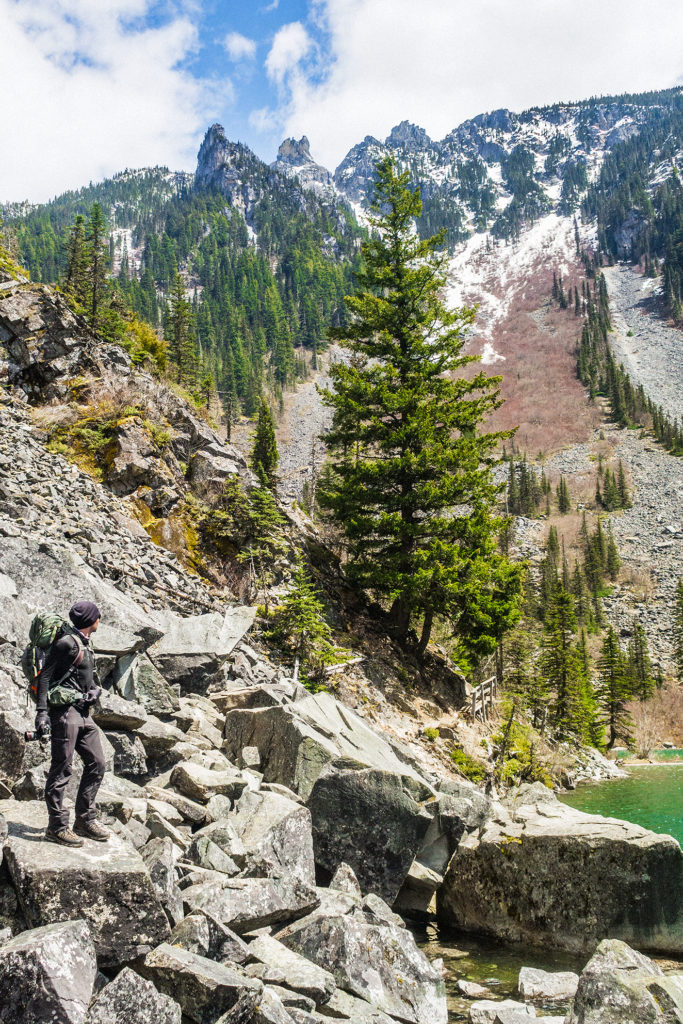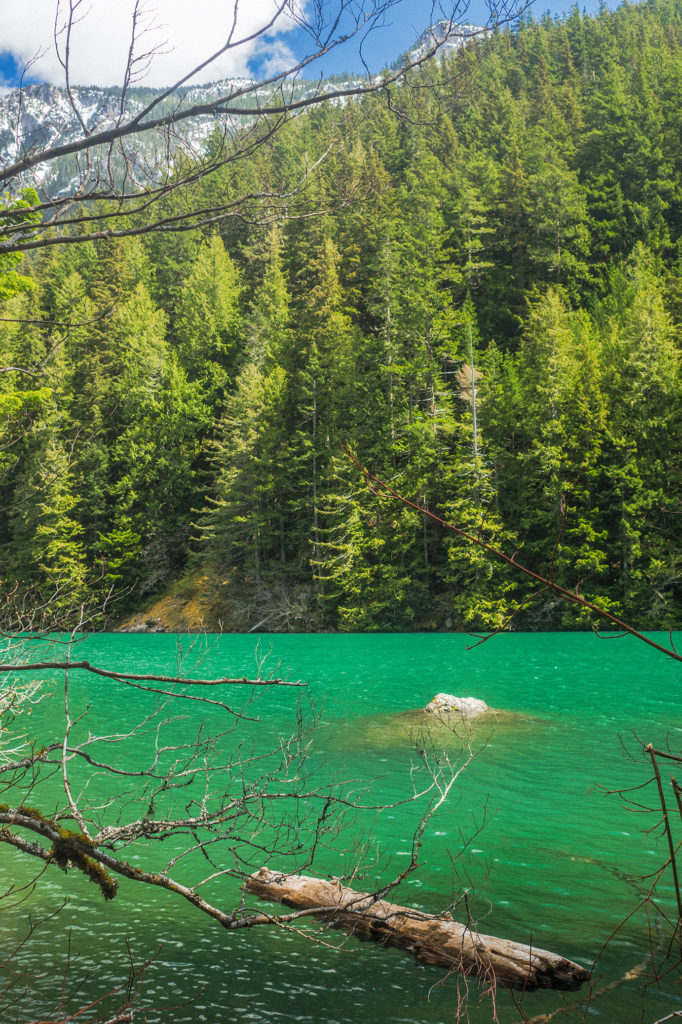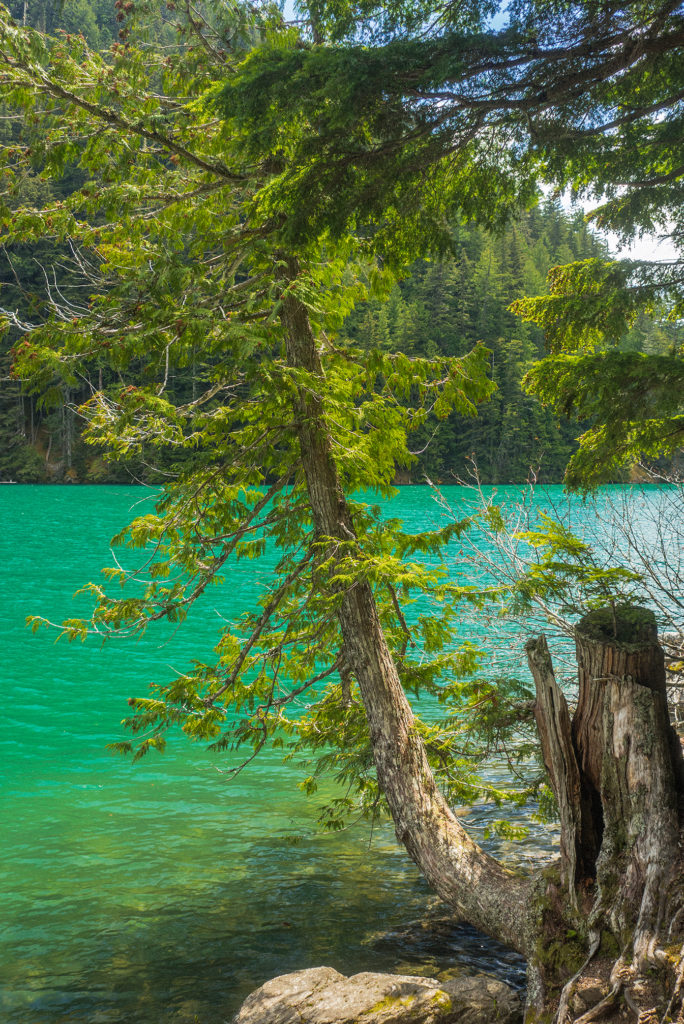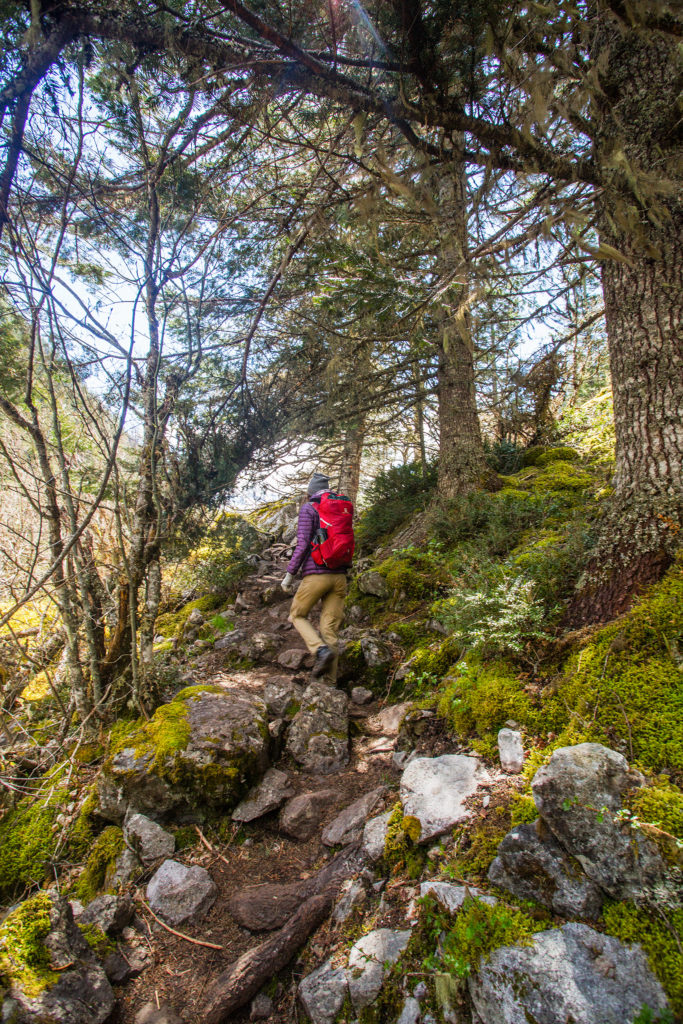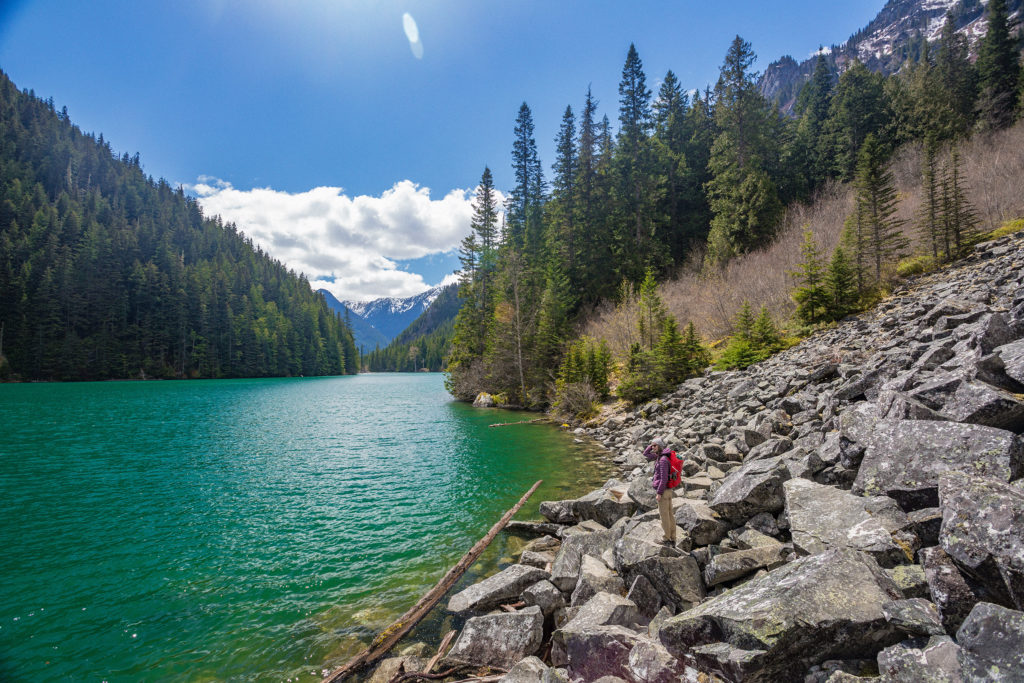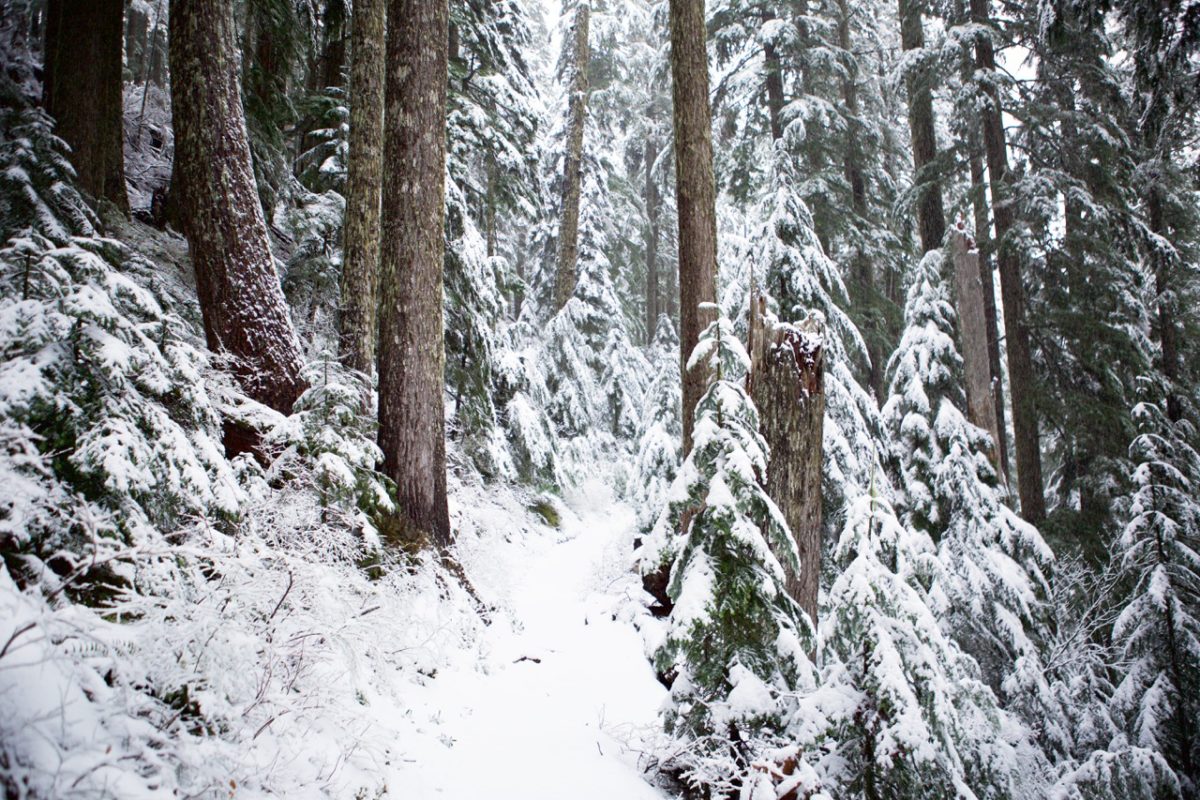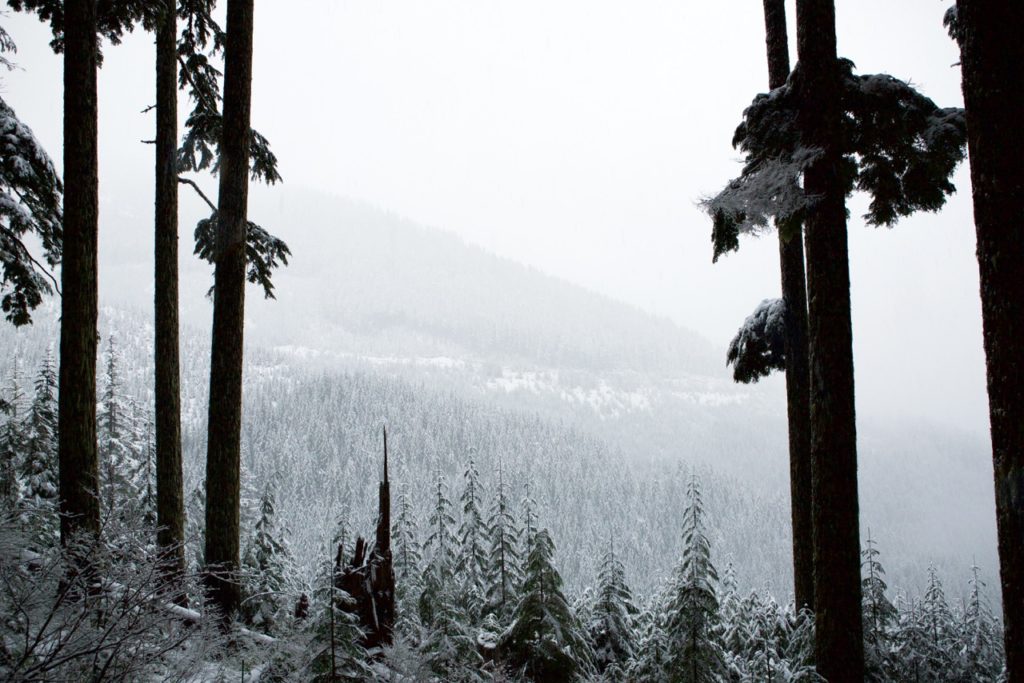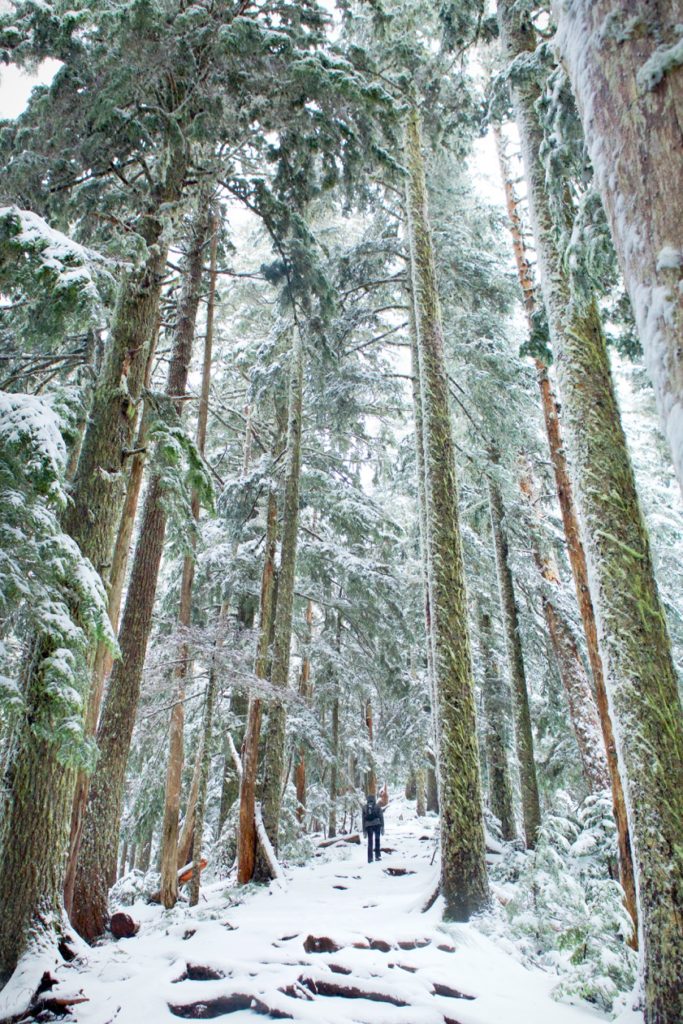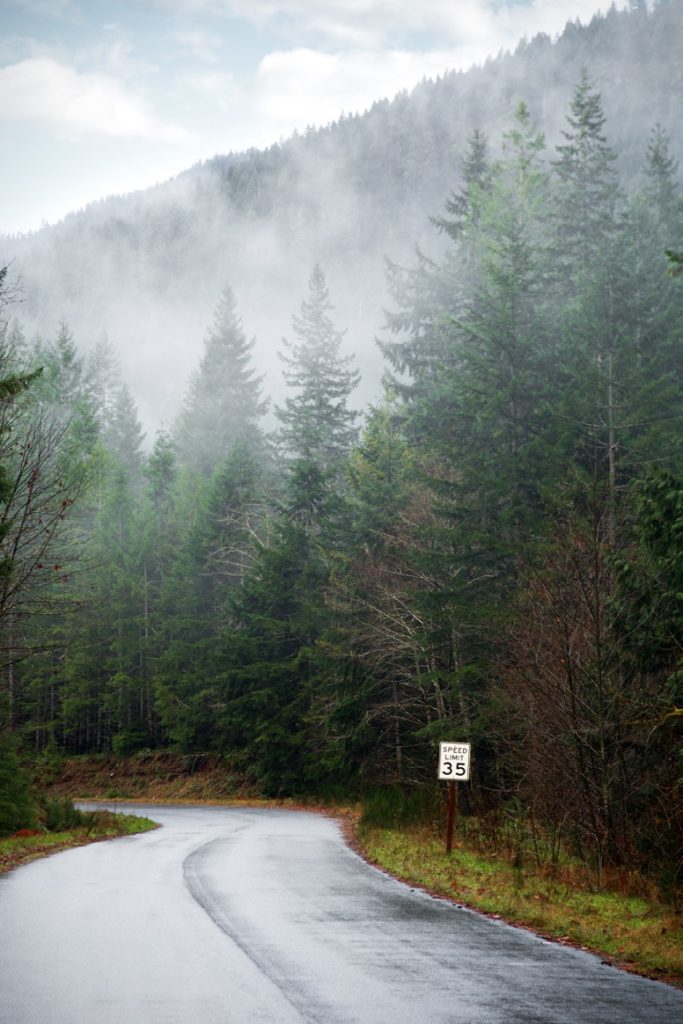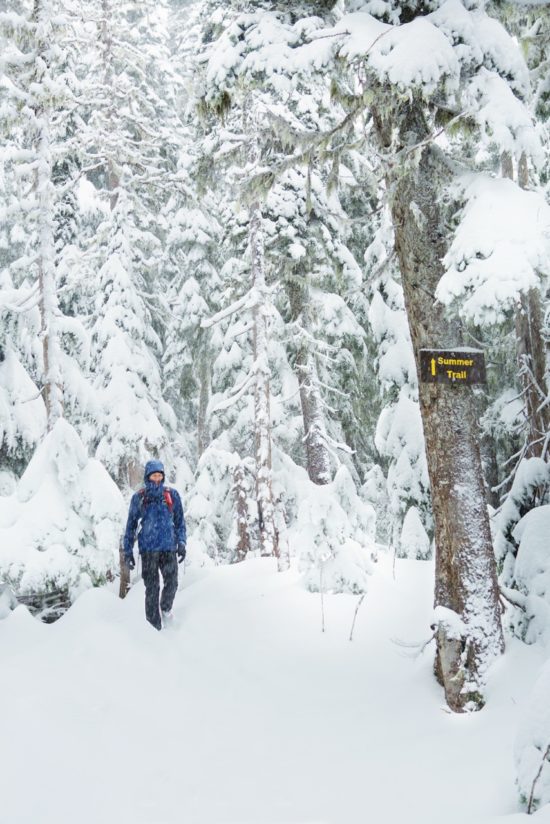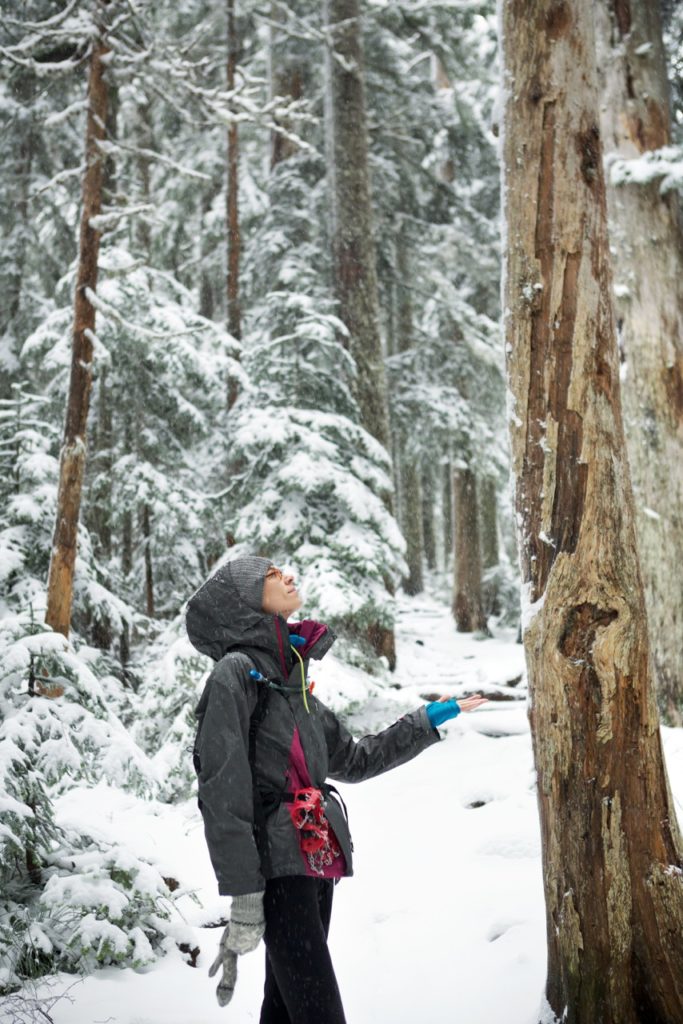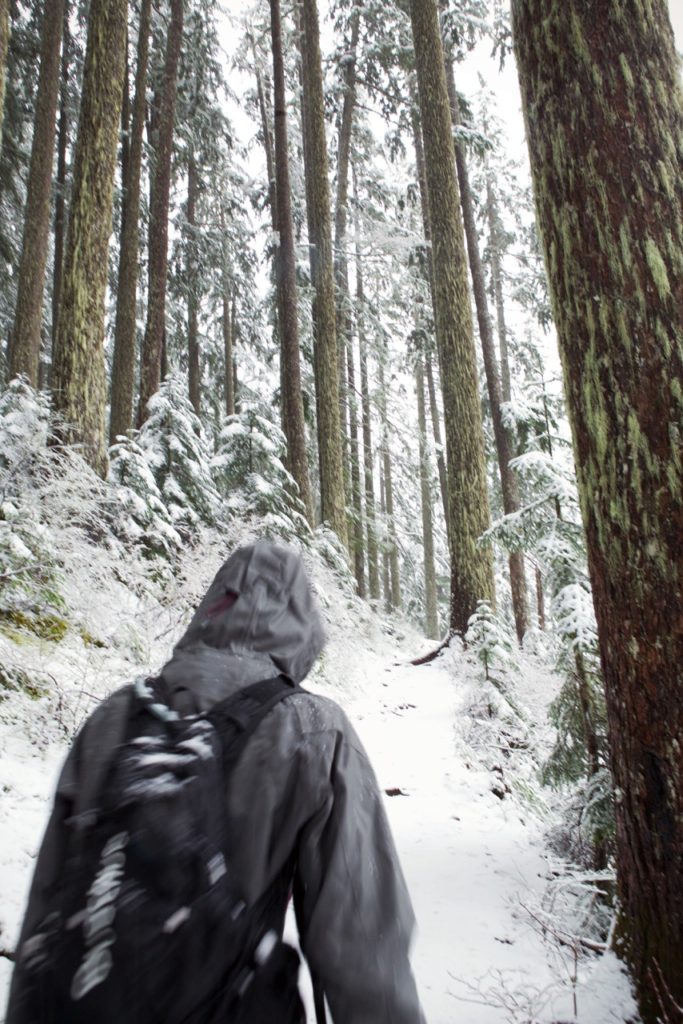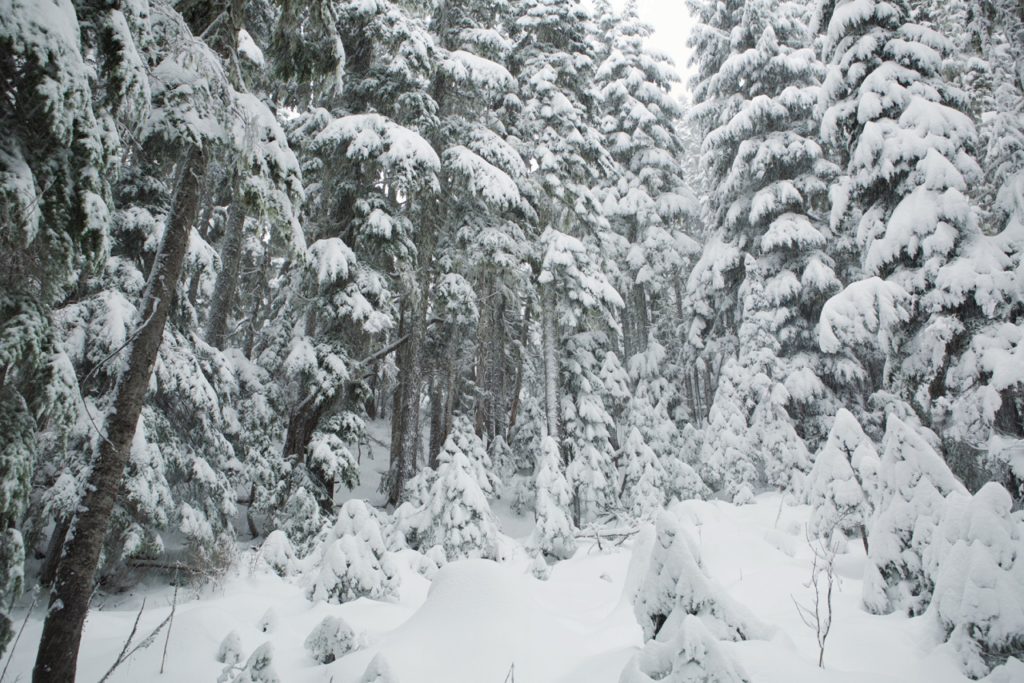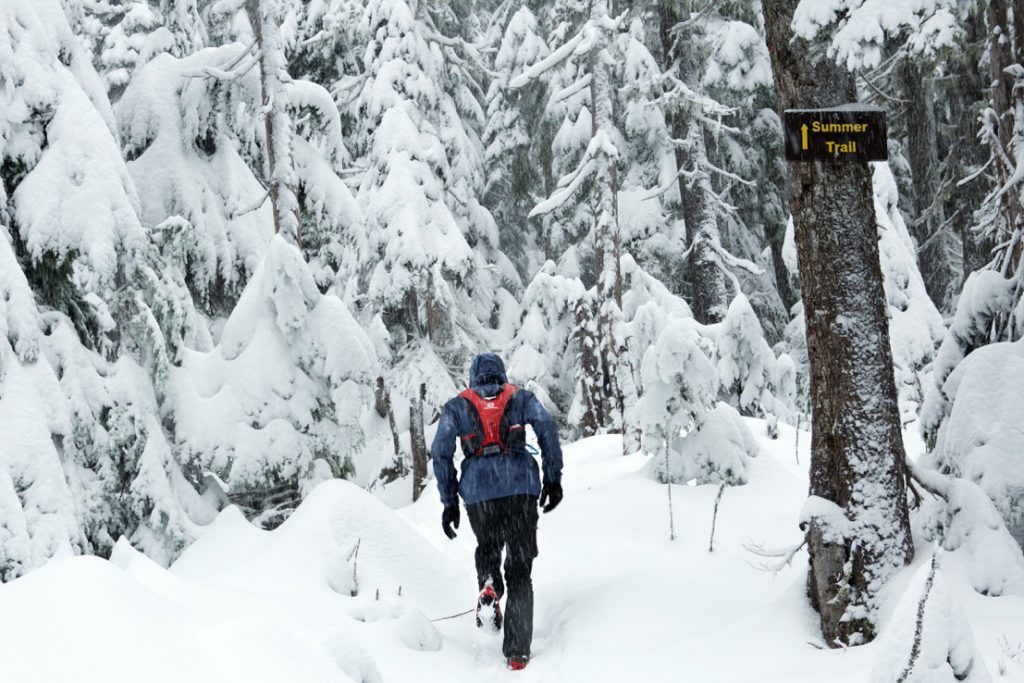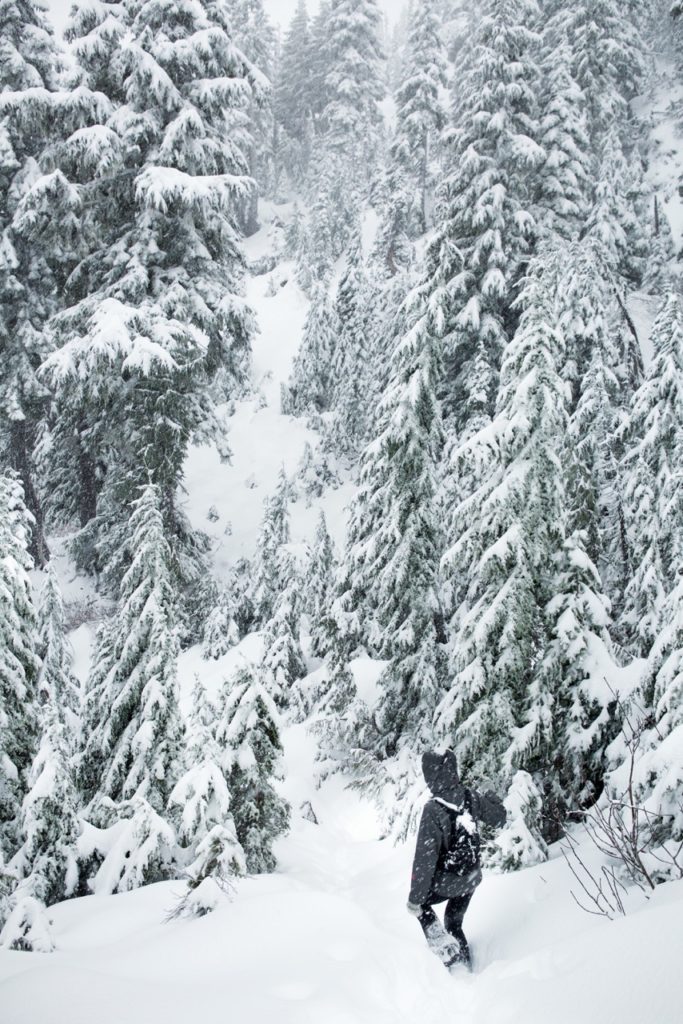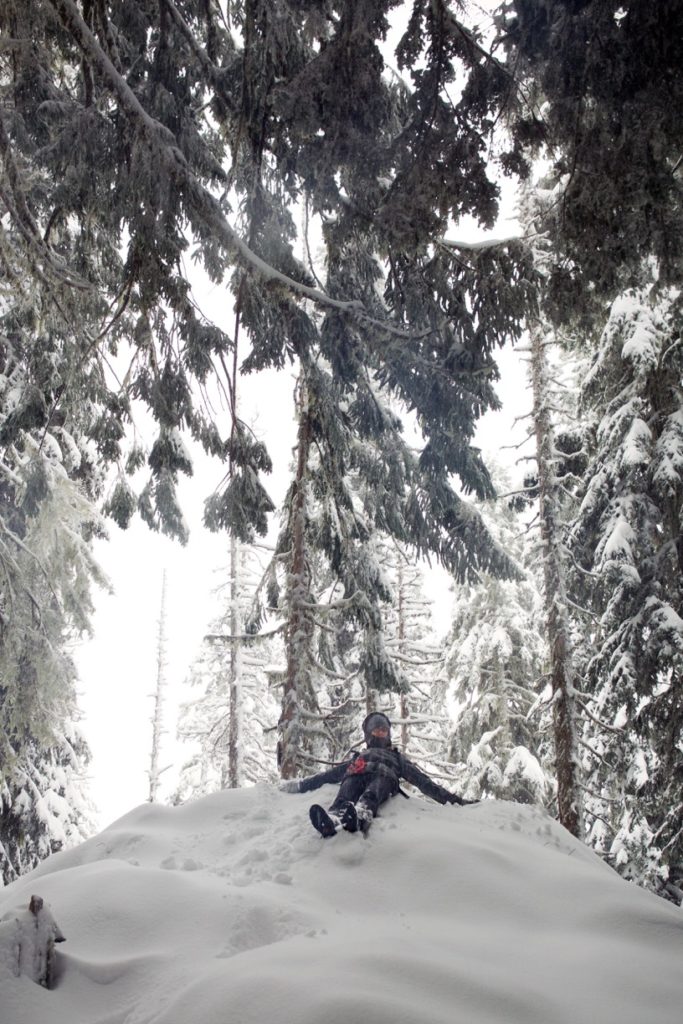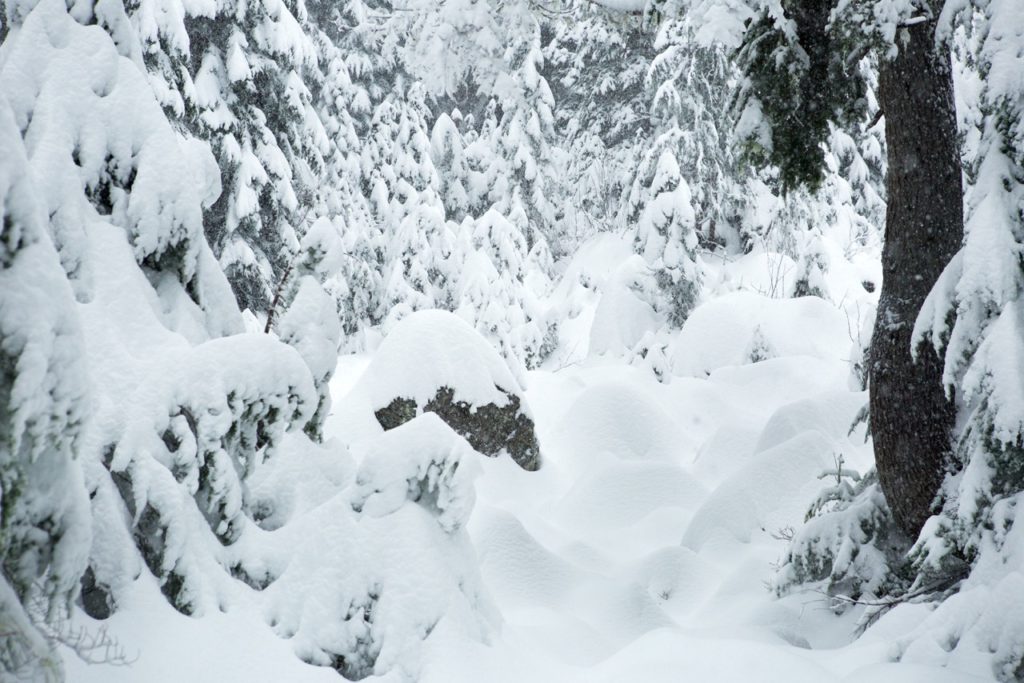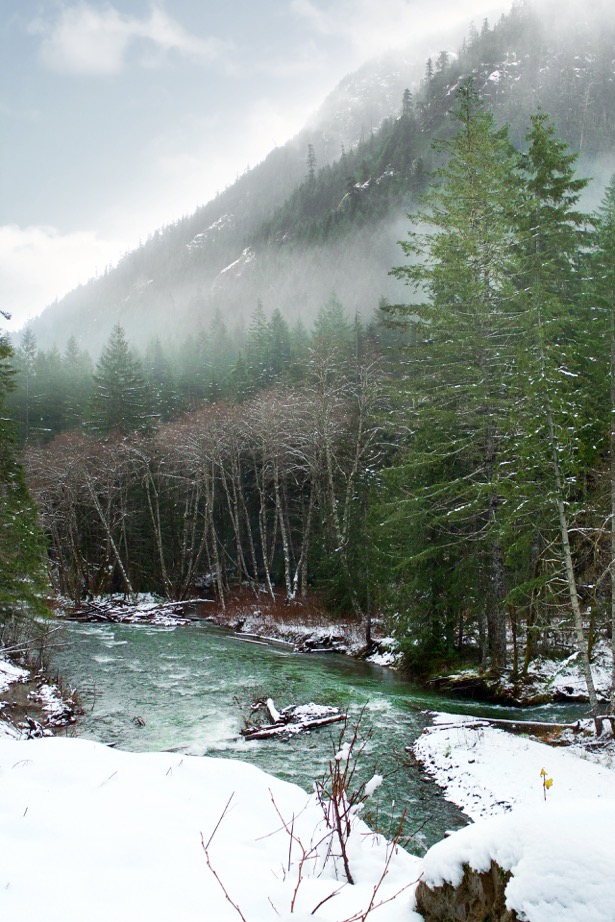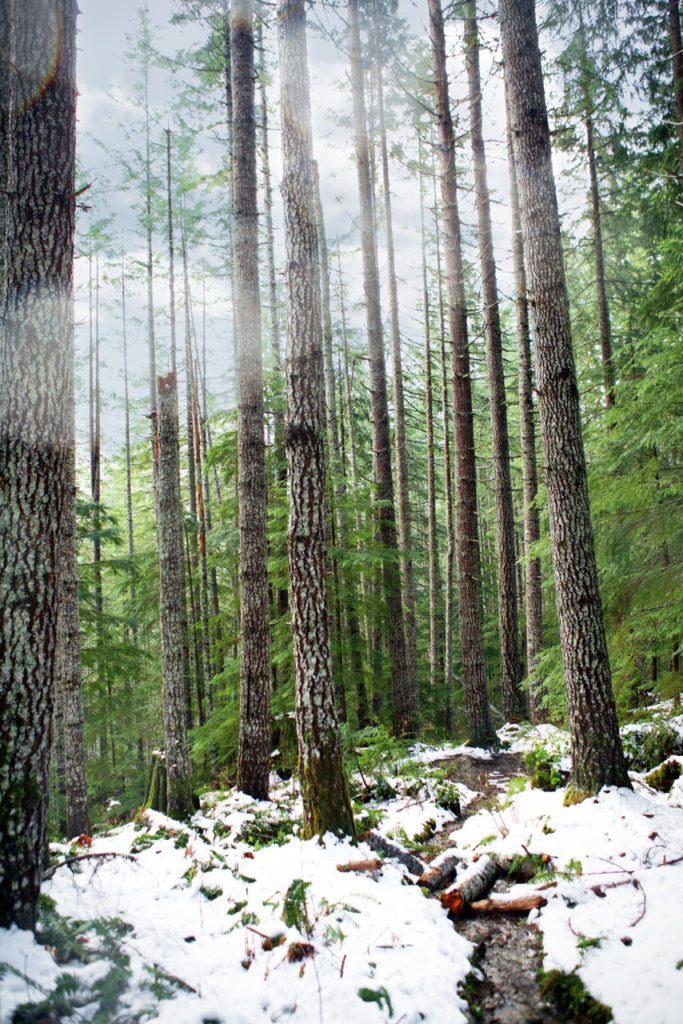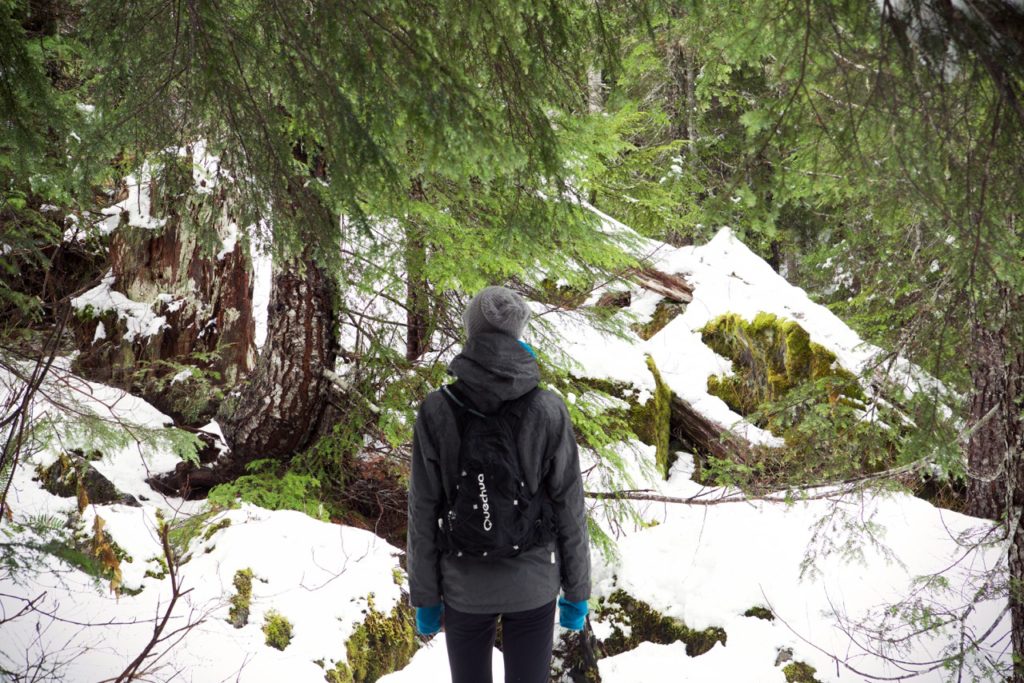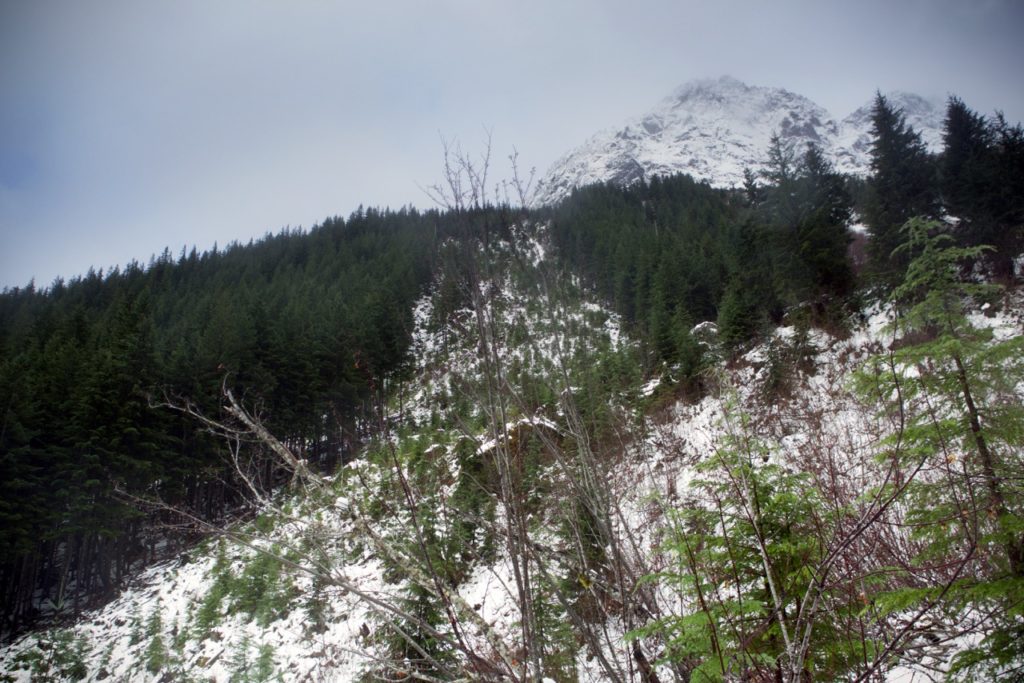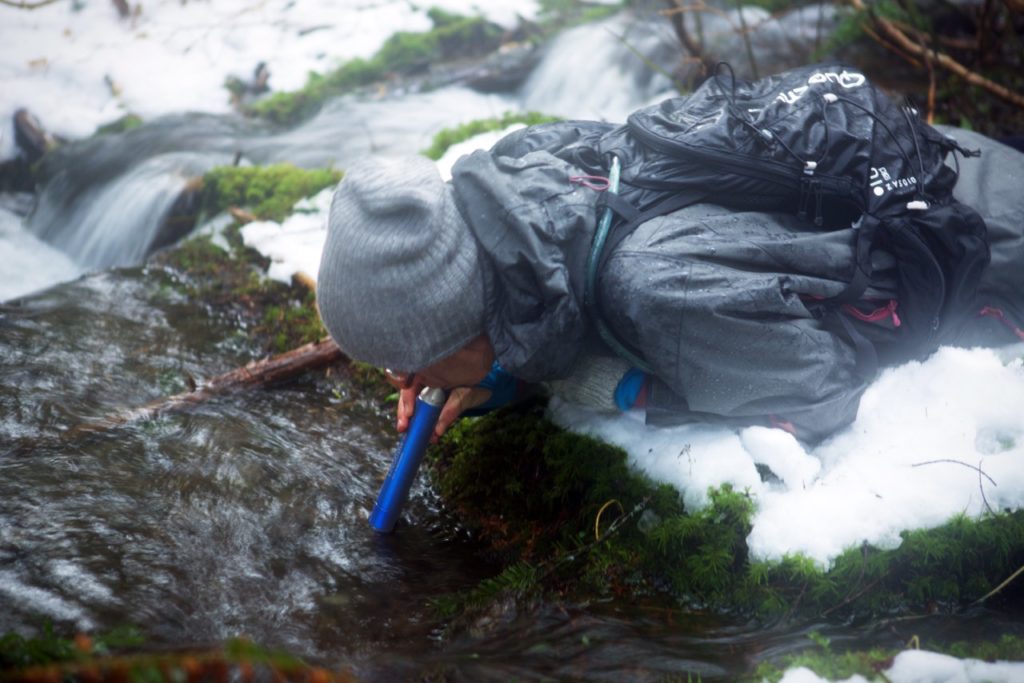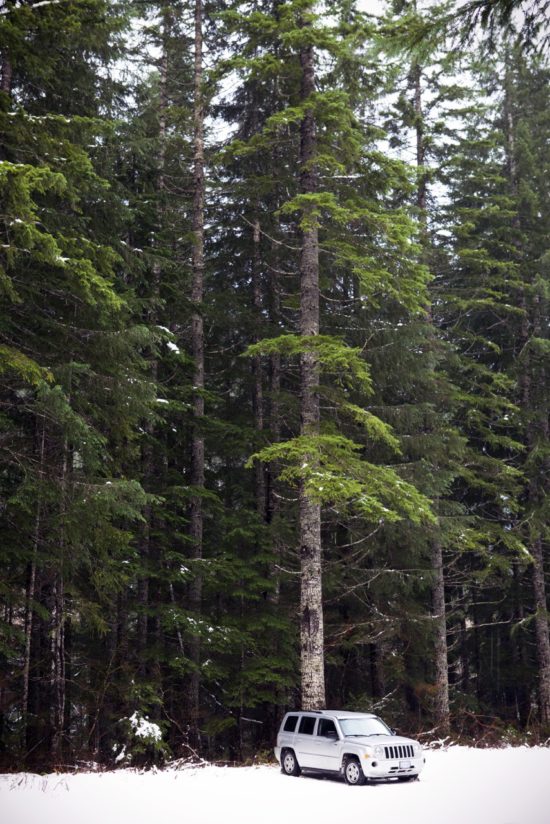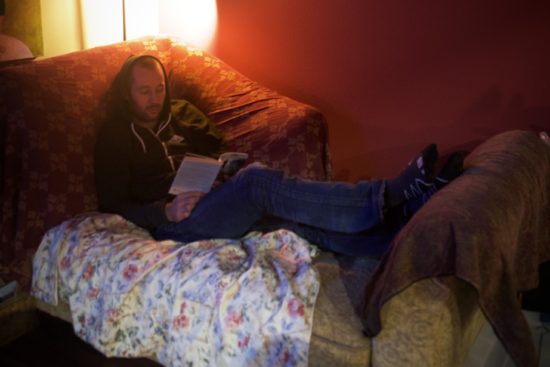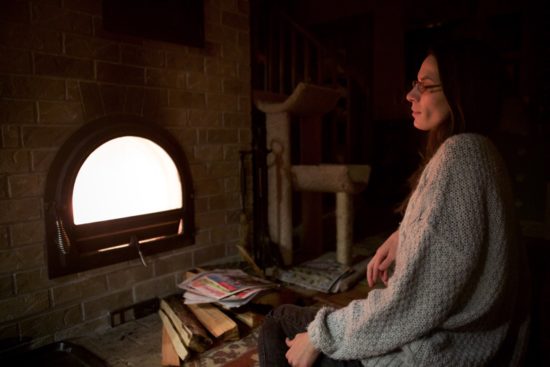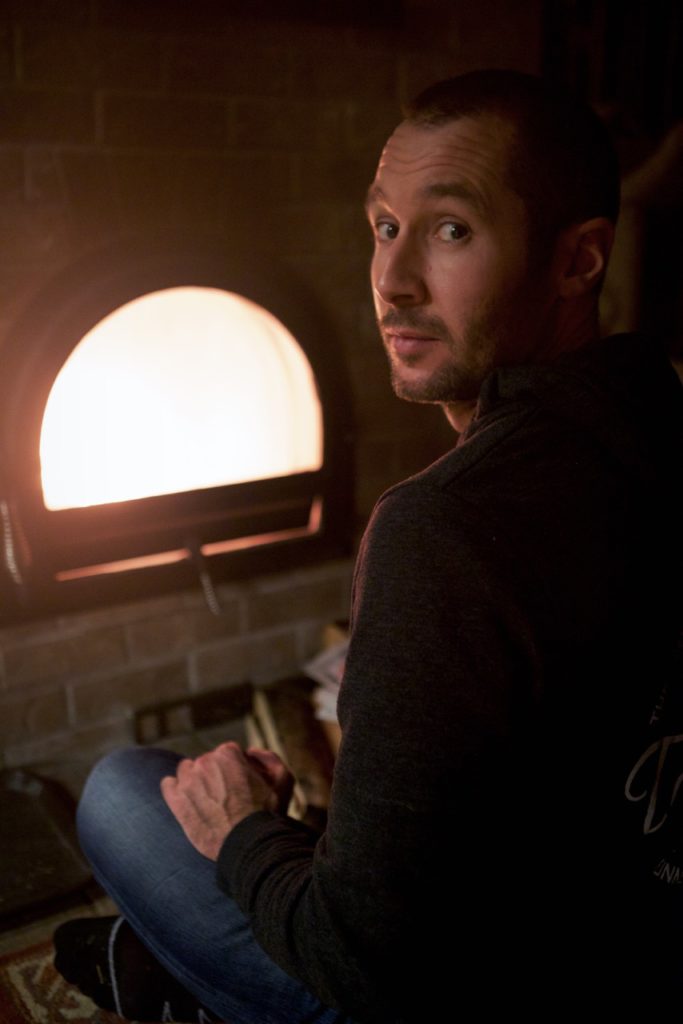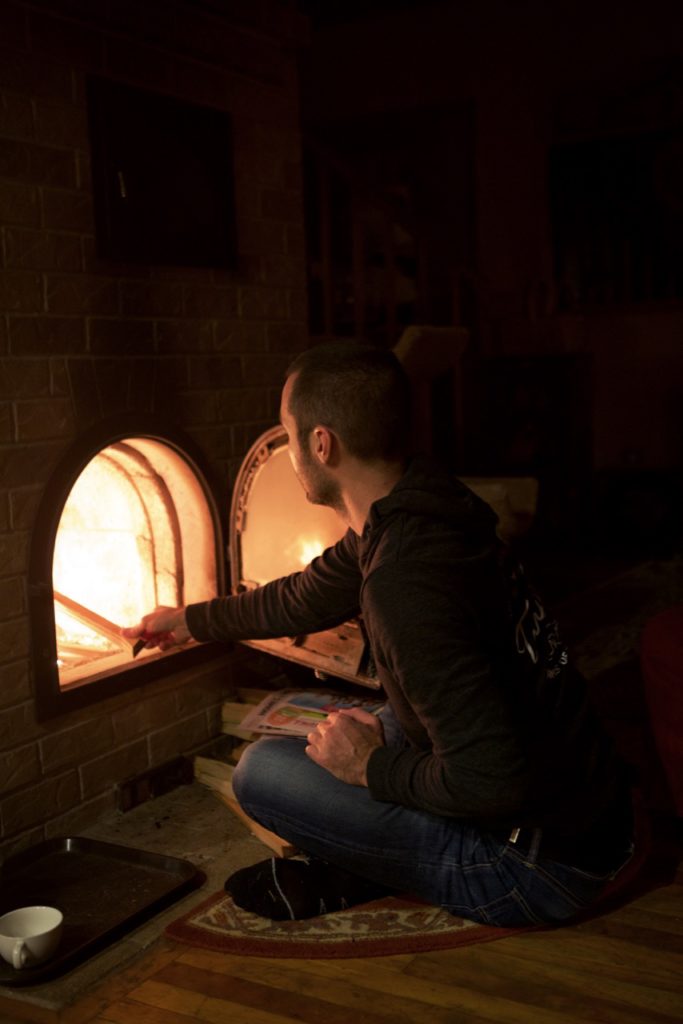One cool aspect of trail running/trail racing, is that it helps put new places on our radar. It was the case for Orcas Island. We first heard the name in the context of a Rainshadow trail race (the same peeps that put on The Gorge 100/50k). Knowing the type of races they put on, we made a pretty fair assumption that Orcas would be a very scenic place to run.
We kind of decided on a whim to go for a week-end. On the Tuesday of that week, I checked online for available campsites. There was only 1 spot left in Moran Park, out of the 150 sites, so after looking at the forecast to make sure we would get good weather, I snatched it. Then I secured our return spot on the ferry, and texted Brice ” We’re going to Orcas Island this week-end!”
This trip was also an excuse to make use of our brand new Nexus Cards. The lines at the border where not bad when we arrived on Friday night (around 5:45ish), but with Nexus, we didn’t have to wait at all. Border was crossed in less than 2 minutes.
The drive to Anacortes is about 2 hours from Vancouver, but we made a few stops along the way, including one to REI, to pick up a couple of supplies.
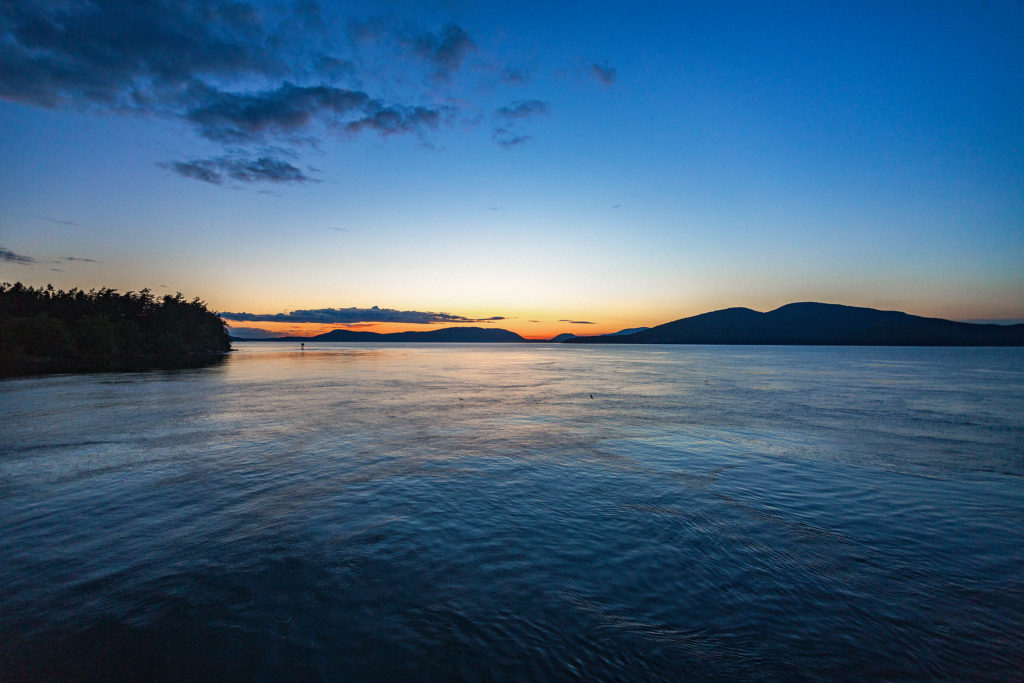
The ferry crossing at sunset was really beautiful, with similar scenery than when going to Vancouver Island (which is really only about 25-30km west of Orcas).
We landed in Orcas village at around 10:15pm, then drove the 14 miles (20k) across the island to the eastern side and the entrance of Moran State Park. Our campsite was located in the Midway campground. Halfway along Cascade lake. As soon as we got there, we figured out why this campsite was left un-booked (spot 54B). Where most other sites where nestled in the trees, this one was basically an open area right next to the bathrooms and showers. It wasn’t a huge deal, the most annoying part being mainly the bright obnoxious light shining from the bathroom windows throughout the night. No need for headlamps while setting up the tent!
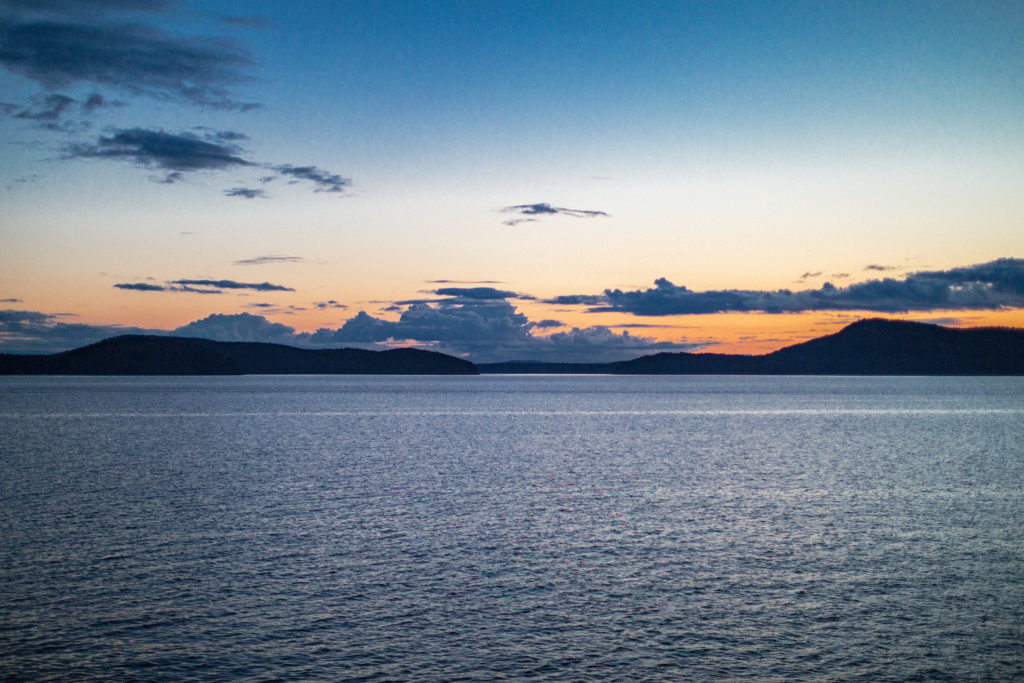
Although there was a specific spot to park the car, we decided to park it between the building and our tent. It worked great to cut out most of the light and vent noise from the bathroom building vents. I was slightly disappointed that the spot wasn’t as private as we could have hoped, but we weren’t planning on spending our days there anyways, so in the end we didn’t care that much. All considered, it turned out to be a surprisingly enjoyable spot. Because it was open and not in the cover of trees like most other spots, it got a bit more sunshine than the other sites. Other spots were smaller, and generally very close together, which made them feel more crowded. Ours was in comparison relatively large and roomy.
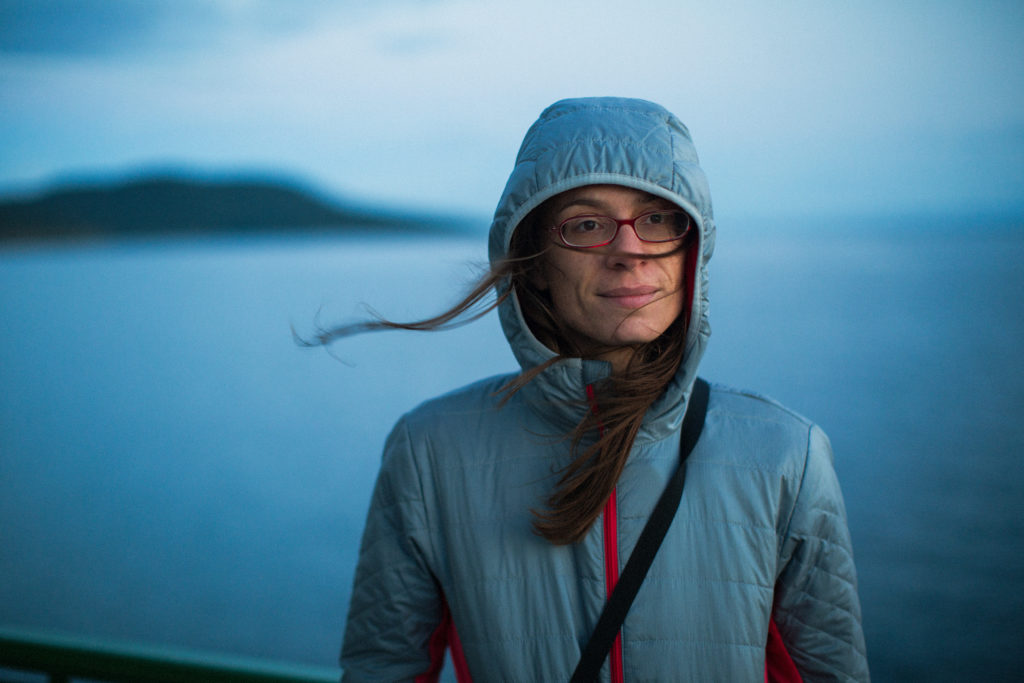
Given the amount of people there, it was surprisingly quiet at night (in our area of the campgrounds anyways), and everyone was very respectful of each other’s privacy. Turns out there wasn’t a huge amount of foot traffic to use that particular bathroom and everyone walking by was super respectful of our space.
There are other campsites on the island, but from what I understand one is only accessible by water, and the other, in Obstruction Pass State Park, is a hike-in, first-come first-serve type of deal. With our ferry schedule, we weren’t going to arrive until 10:30pm on Friday, so I didn’t want to risk not having a spot at all. The hike-in site actually had a few spots available, as we found out on Sunday morning, so if we were to come back, it might be a good, more private option.
On our first day, we had planned on going for a run around Moran State Park. The park offers about 38 miles of trail, with the highest summit at 2400 feet (800 m), so all very run-able. I had looked at the course map for the Orcas Island 50 and 25k races, and highlighted a loop that would take us to various points of interest throughout the park. I hadn’t calculated the route exactly but I figured it would be somewhere between 20k-25k.
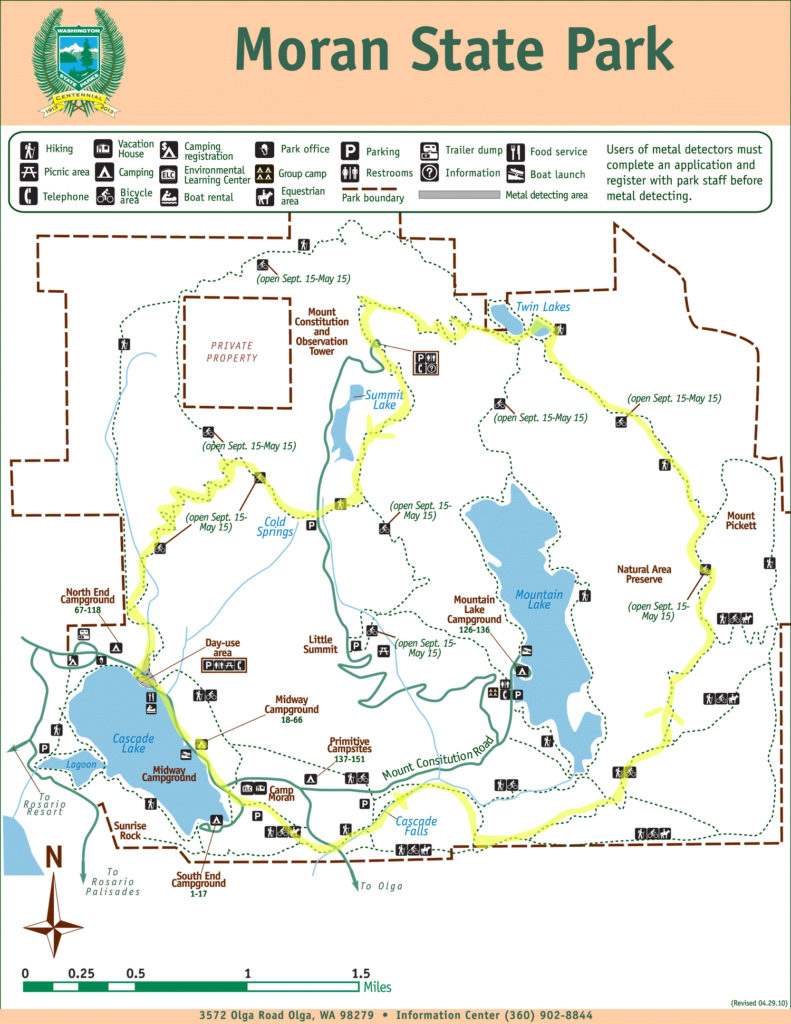
We left our campsite around 11am and headed east along Cascade Lake. after about 0.5 mile we reached the South End Campground and the start of the Cascade Falls trail.
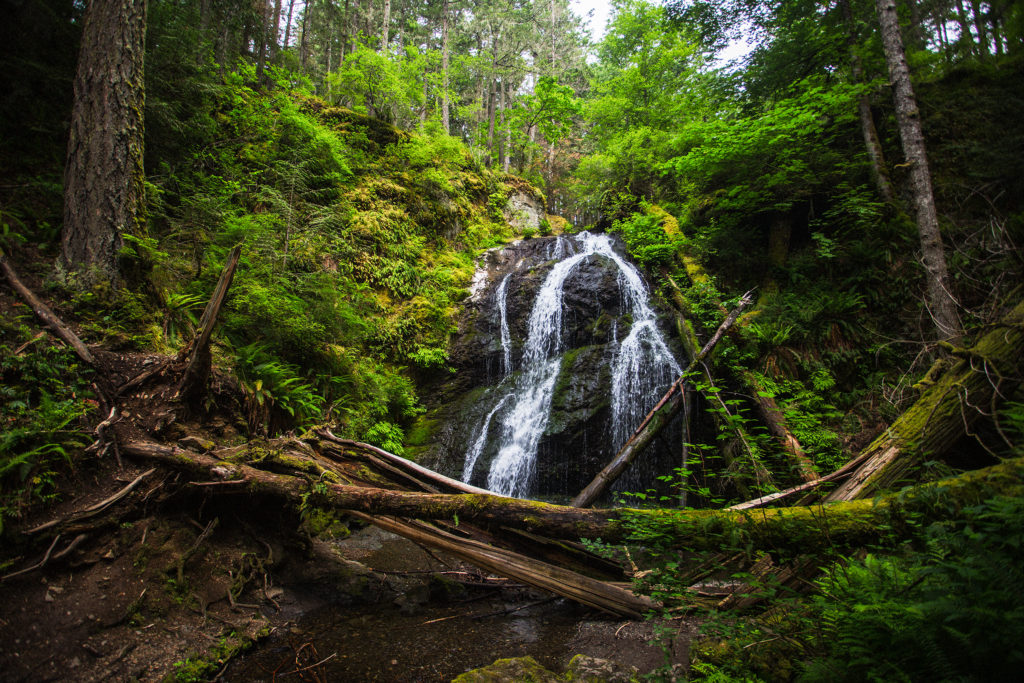
After the waterfall, we continued East then North towards Mount Pickett. I (of course) had found a couple of maps online for Moran Park, with detail of trails, distances (in miles) and elevation. The area was pretty easy to navigate, as there was a limited number of trail intersections and lots of signage at each of them, but it was still helpful to have the maps, and not have to rely on electronic devices to find out way around.
We took our time going up, taking lots of breaks for photos. Mount Pickett didn’t have a view, but we continued on to Twin Lakes, then hiked up the steep switchbacks to Mount Constitution, the highest point in the island (2400 feet / about 800m).
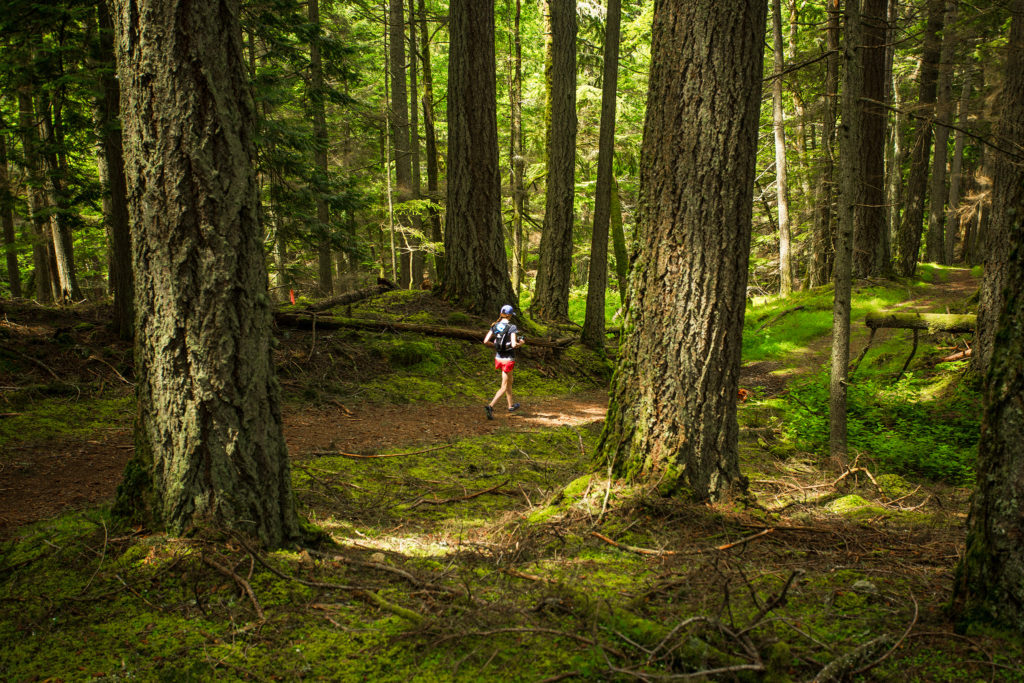
The vista from Mt Constitution was pretty sweet, looking out onto the bay in the east, with views of Bellingham and Vancouver Island in the distance.
After the summit we continued on a really scenic ridge trail bordered by Pacific Madrone trees, with views of the water. We stopped on a couple of rocky areas just off the trail to take in the view.
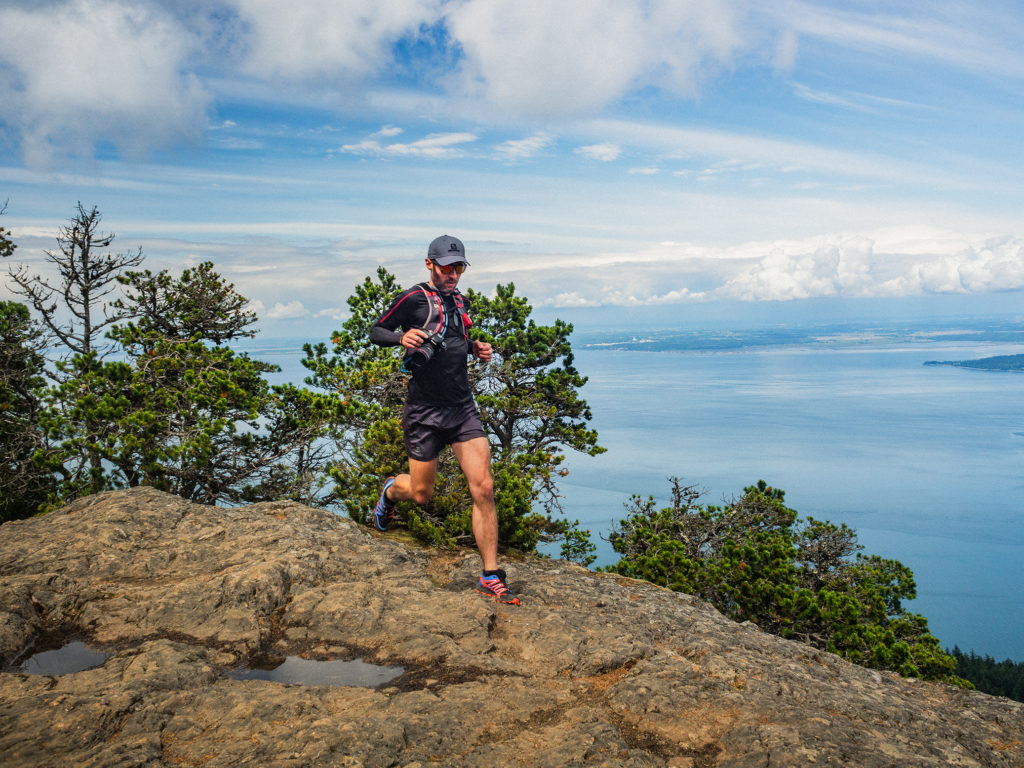
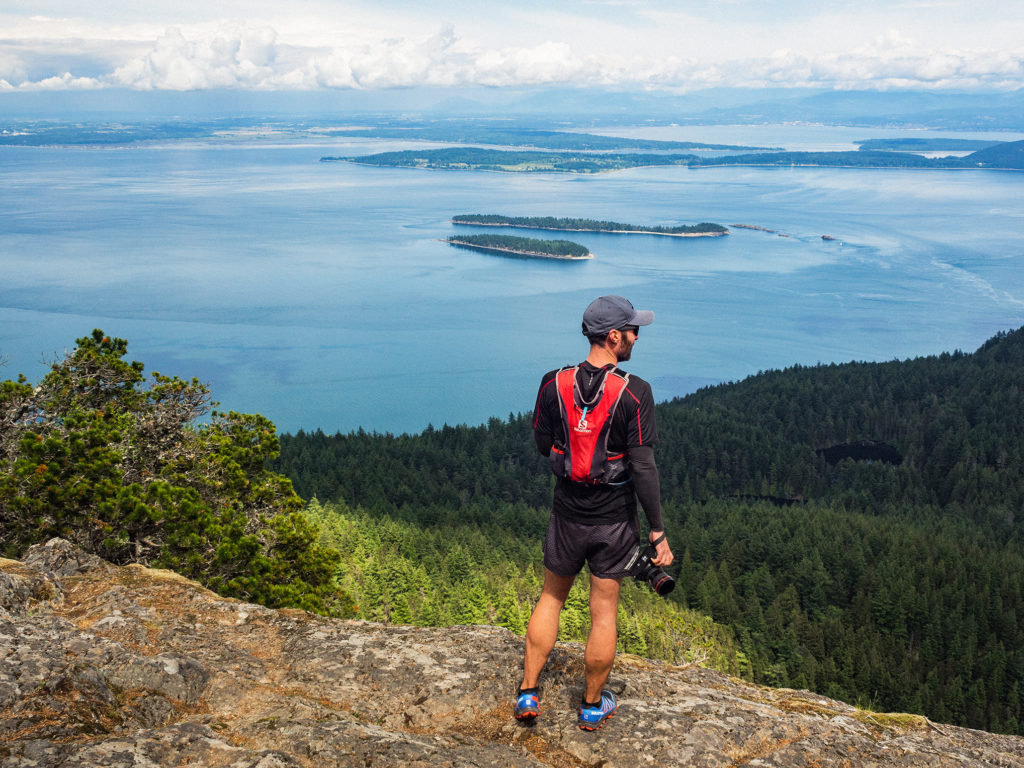
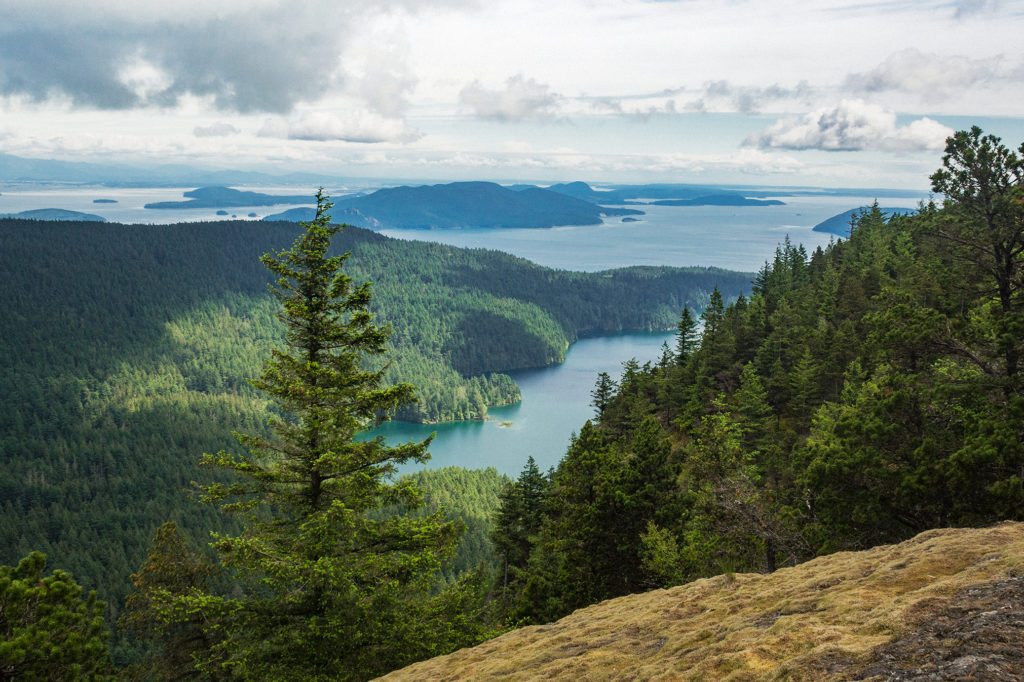
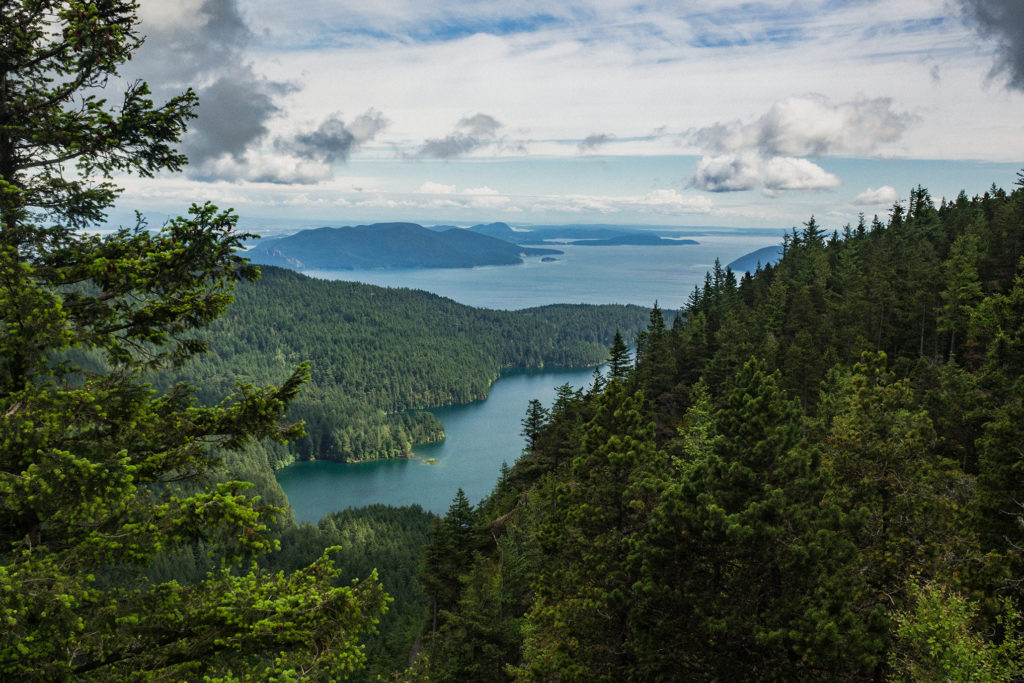
Then it was all downhill from there, and some really fun one too! The trail was really smooth, soft, packed dirt covered with dried pine needles, super easy to run on. We stopped briefly at Cold Springs, to admire the old-fashion stone well and oven, then continued down the trail, which had lots of fun switch-backs (the trail is used in the winter for mountain biking, but is reserved to hikers in the summer, likely to avoid dangerous collisions).
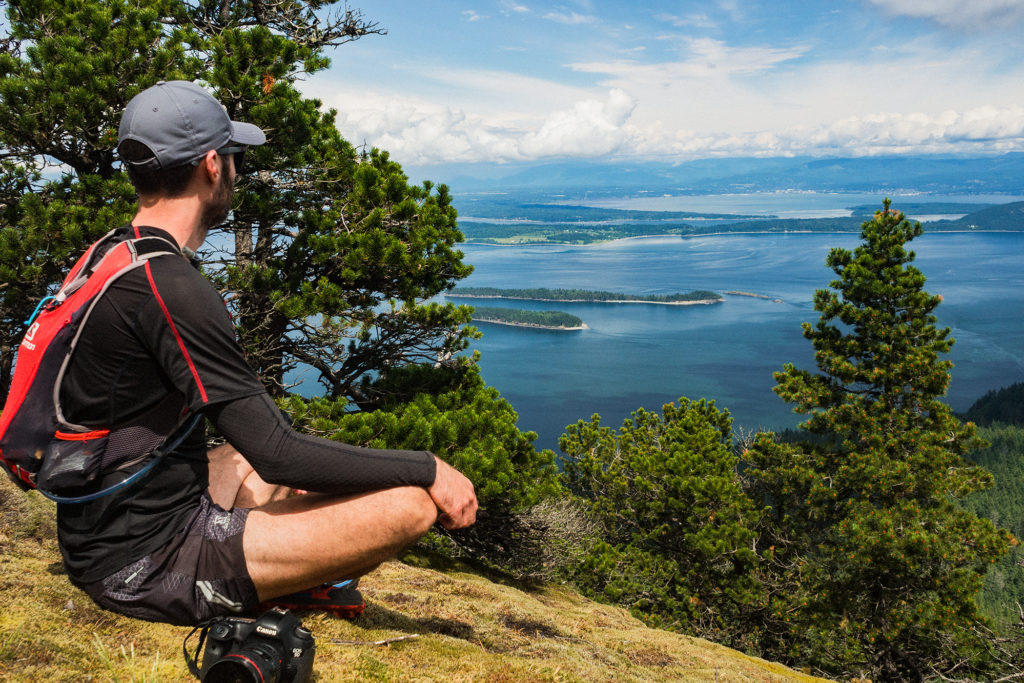
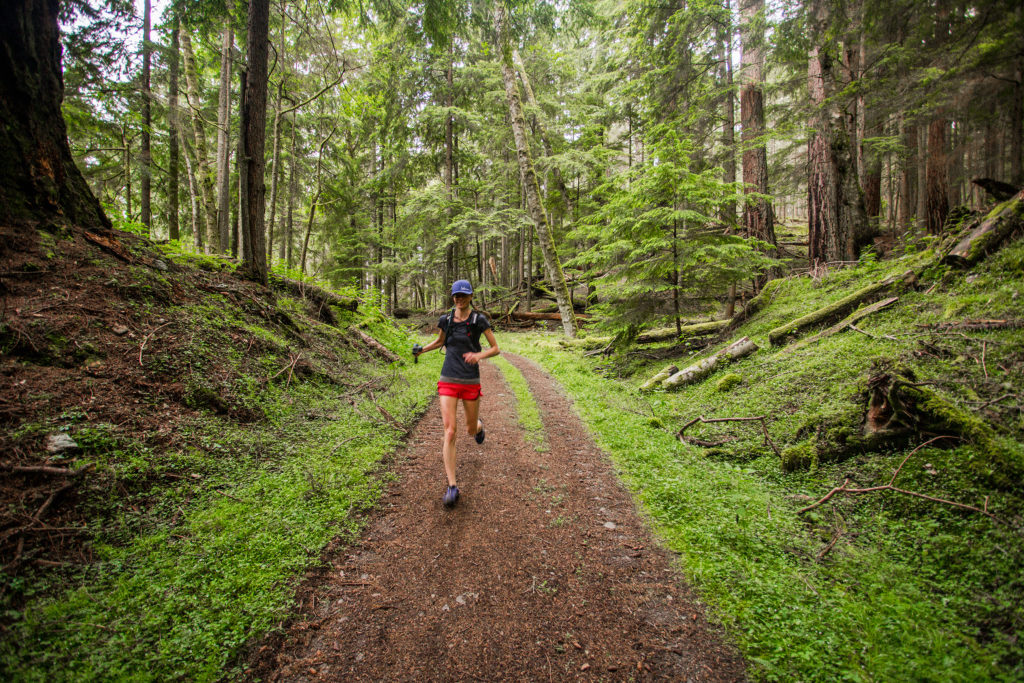
With the campsites being full, I was expecting to see at least a few people on the lower portions of the trail, but we saw no one all day, except for the parking lot at the top of Mount Constitution, and a few people coming down the trail to Twin Lakes, and basically turning back when realizing how steep of a climb back up to their car it would be…
We eventually came out of the forest onto Olga road (the main road that crosses the park) at the parking lot of the Day-use area. Brice’s watch read 15 miles at that point, 22.7km, so a pretty bang on estimation. After a quick look at the beach there, we jogged the last half a mile back to our campsite. It took us about 4 hours to do the loop, with running at a pretty casual pace, power-hiking (for me) most of the up-hill and taking a bunch of breaks for photos and lunch.
Back at camp, we grabbed a snack and since Cascade lake was right on the other side of the road, we took the paddle board out for a relaxing float on the water. We had dinner by the fire and were in bed by 10pm,
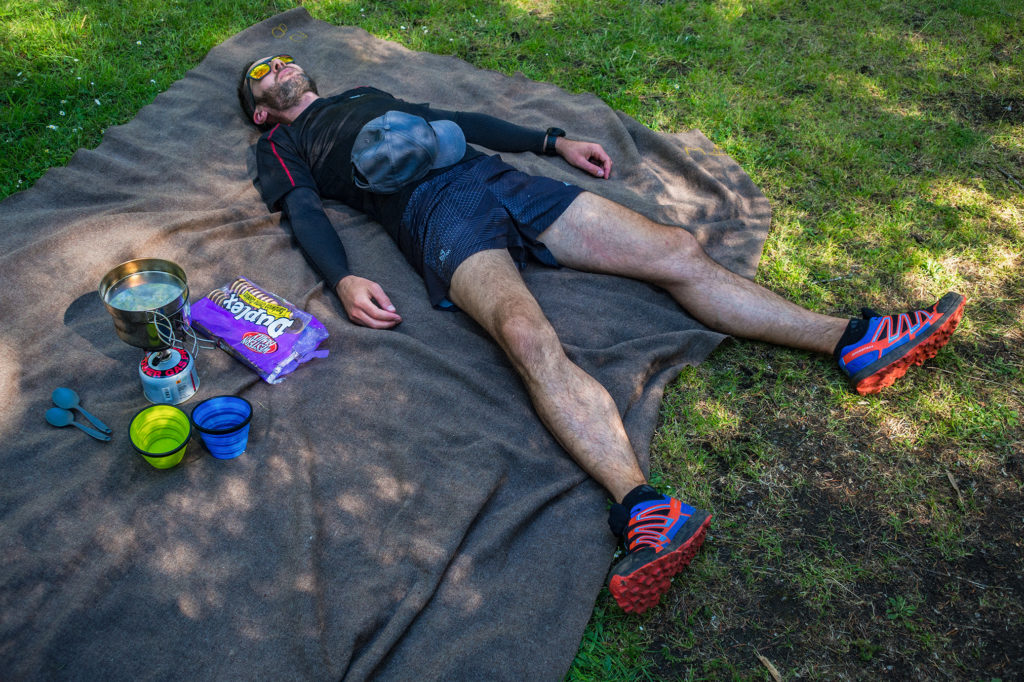
The next day, we had booked the 7:55pm ferry back to Anacortes, which left us with ample time to do some more exploring. We decided to keep things at a nice island pace, by driving around to explore other areas. We got up and packed up camp, then headed south to Obstruction Pass State Park. The much smaller park offers free hike-in campsites and a 400′ beach. We hiked the .6 miles to the beach, had breakfast by the ocean and hung out for a while.
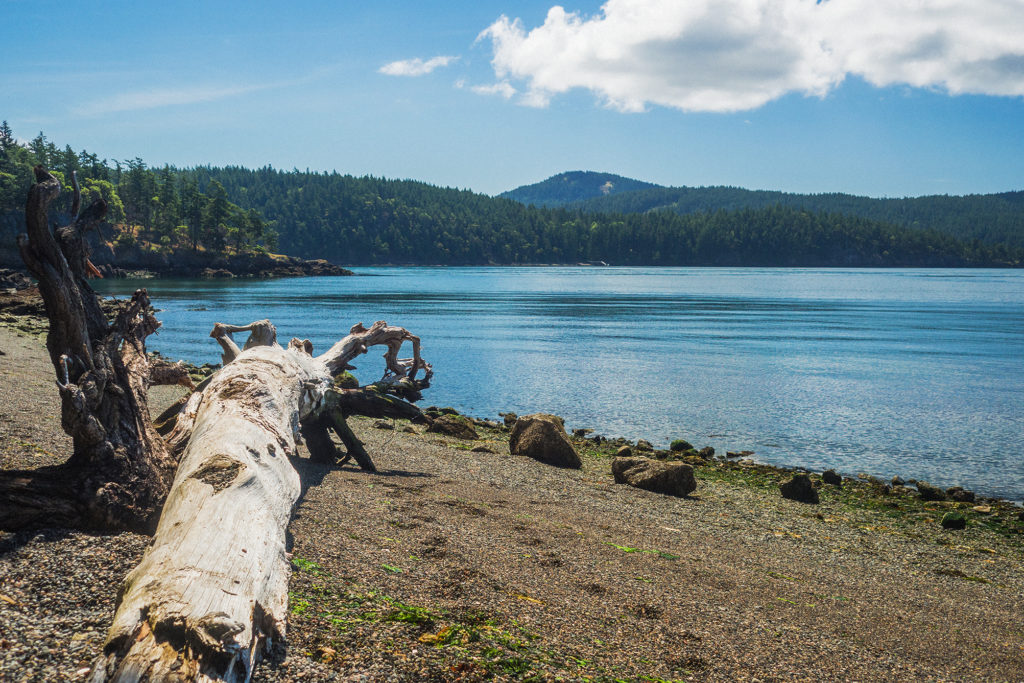
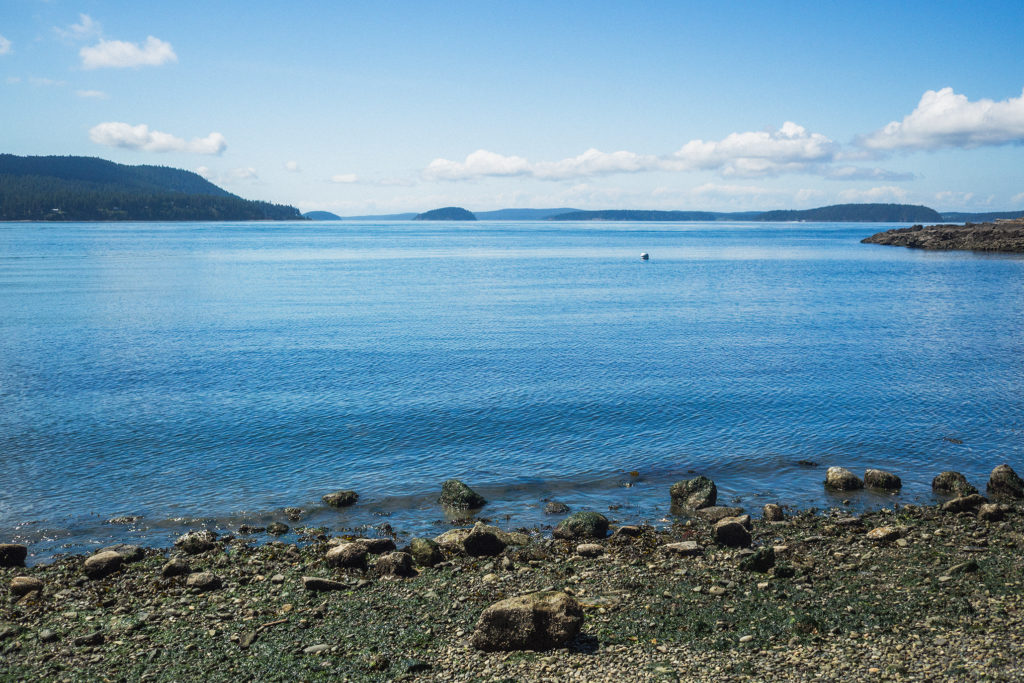
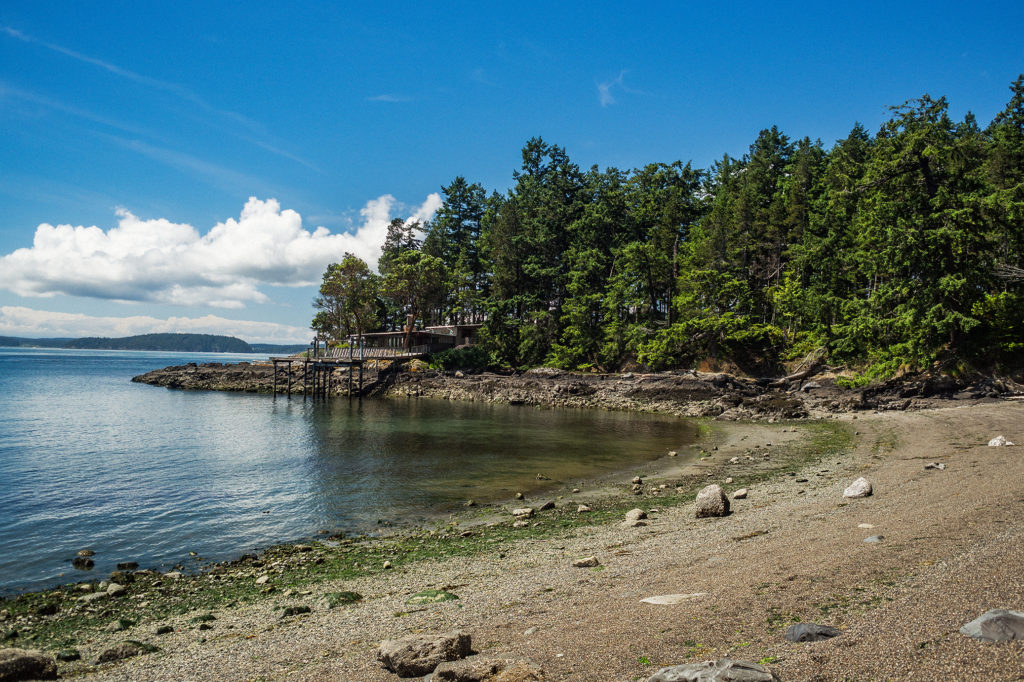
Then we headed to the main town of the island, Eastsound. The town is small, shops and restaurant spreading over just a couple of blocks, but really pretty, with trellis of roses in full bloom lining the sidewalks, and views of the ocean just off the main street.
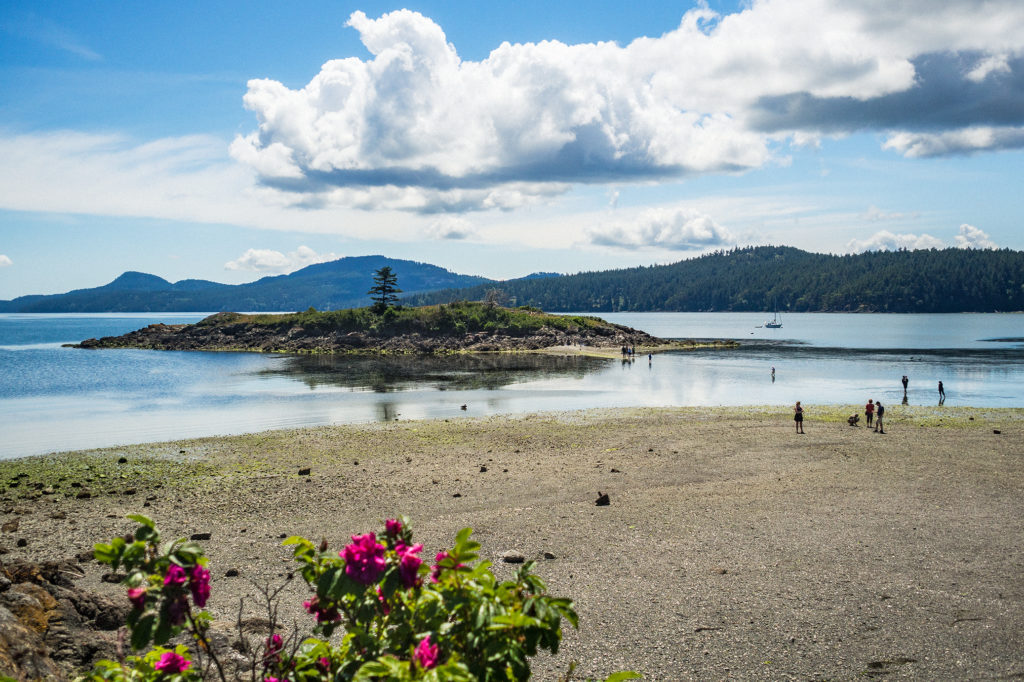
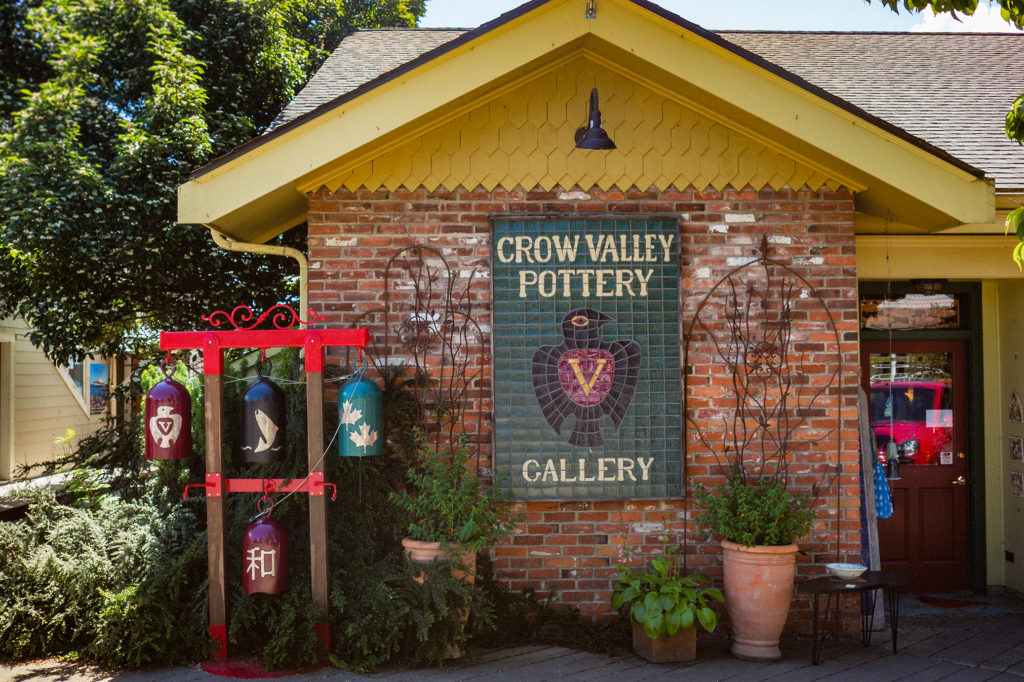
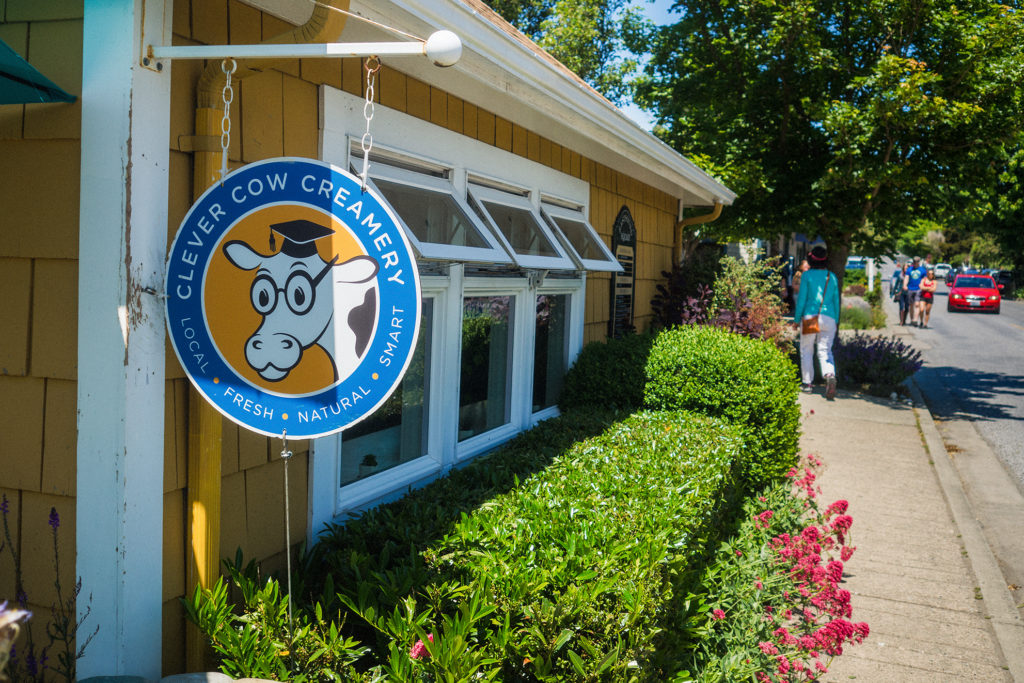
After grabbing a sandwich at the local bakery, we left Eastsound and drove west on Crow Valley road, first towards West Beach (a resort on the west coast of the island, with beach access reserved to guests), then to Deer Harbour, a charming marina and a good place to come for kayaking, fishing, whale watching…
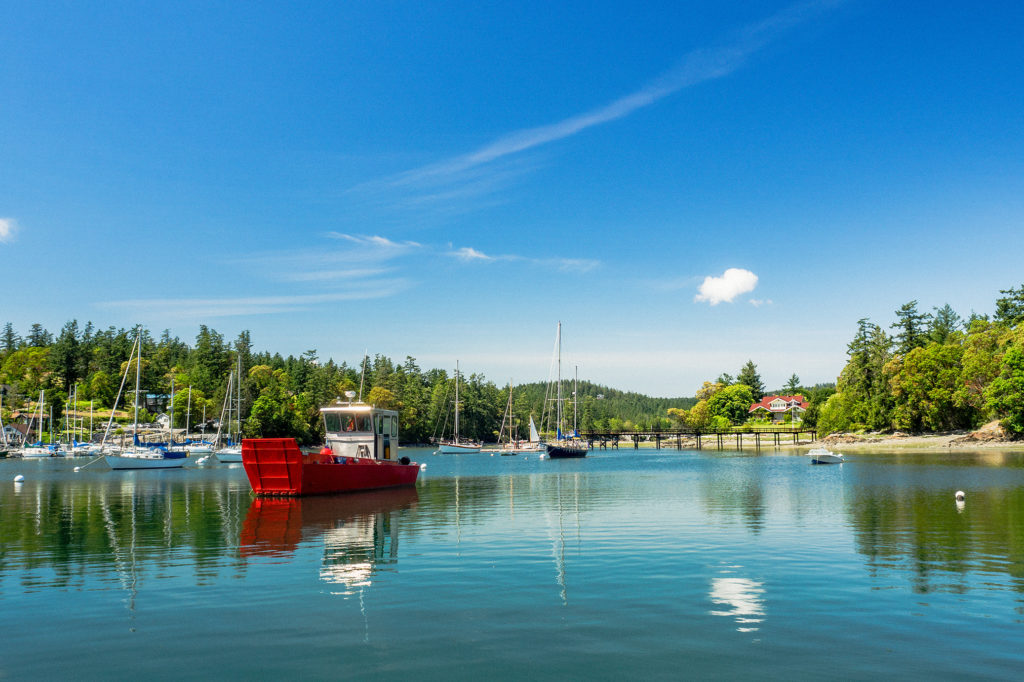
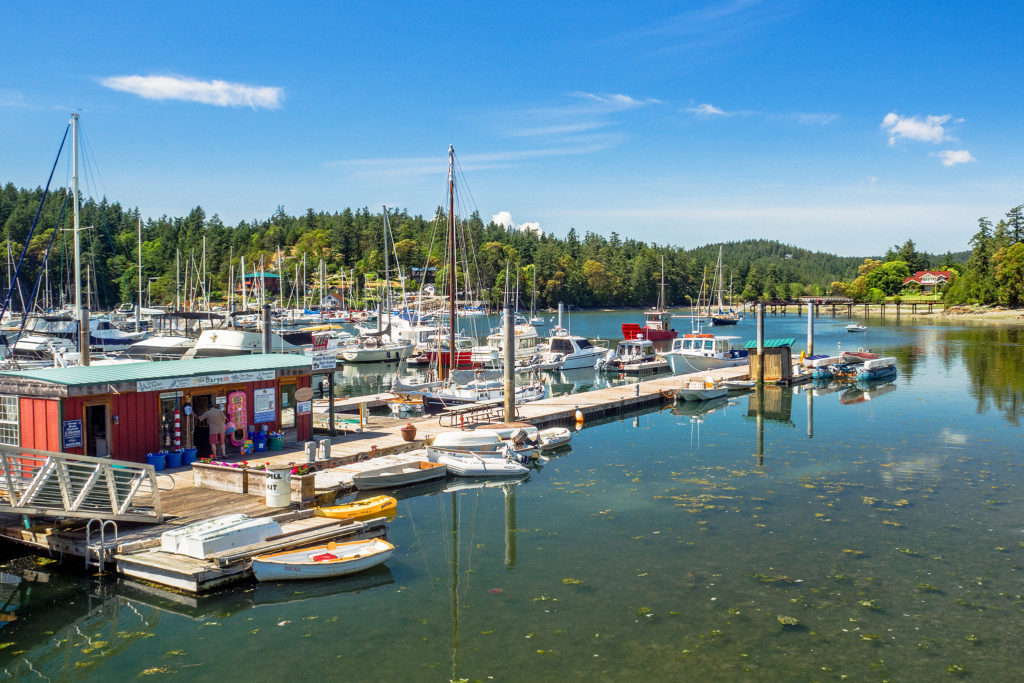
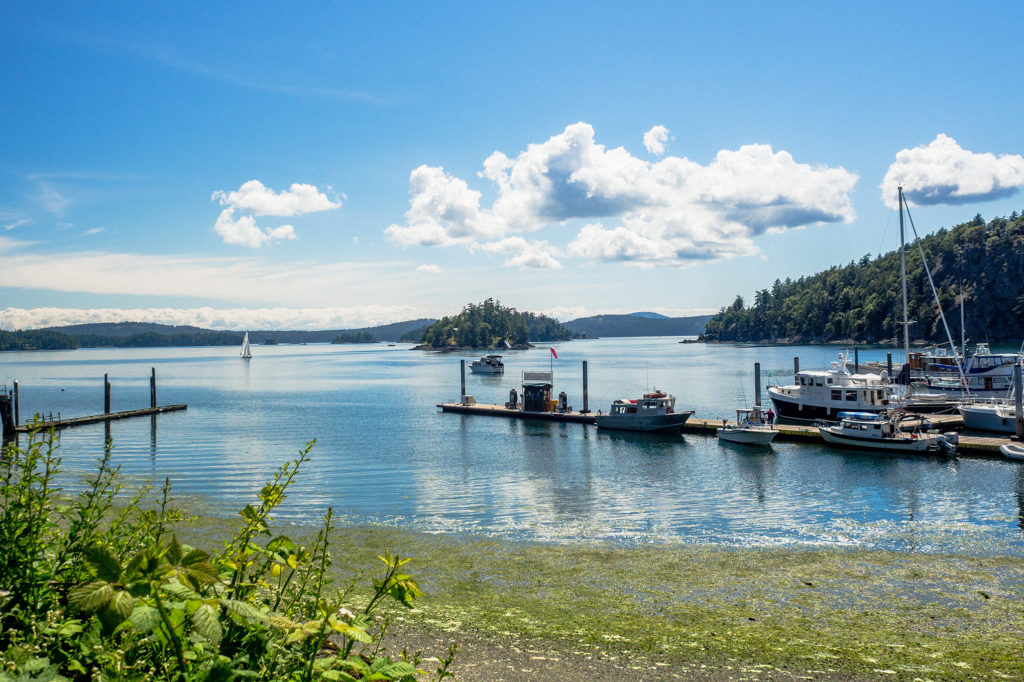
Next we drove trough Orcas Village (where the ferry terminal is located) to try and go explore the area just east of it. The map indicated places like Diamond Lake and White Beach, which sounded like good spots to hang out for the rest of the afternoon. Unfortunately, we quickly realized that this whole portion of the island was mainly comprised of private roads and lands, with no public access to the beach (or the lake). The one lake that was accessible, Killebrew Lake, was right off the side of the road and didn’t seem to have a beach-y shore that we could enjoy.
So we drove back to Eastsound, which is really only about 15 min drive from Orcas village, to go spend the last couple of hours before we had to be at the ferry. Once again we took out the paddle board and enjoyed some water-roaming, especially around the little island (Indian Island) just a couple hundred meters off the beach (accessible by foot at low tide). The island is actually labeled as a Marine Health Observatory as it hosts a large variety of birds and small marine species. Circling around it on the board, I was able to spot a grey heron taking flight, and some big starfish, hanging out in the sun on shallow rocks, just below the surface.
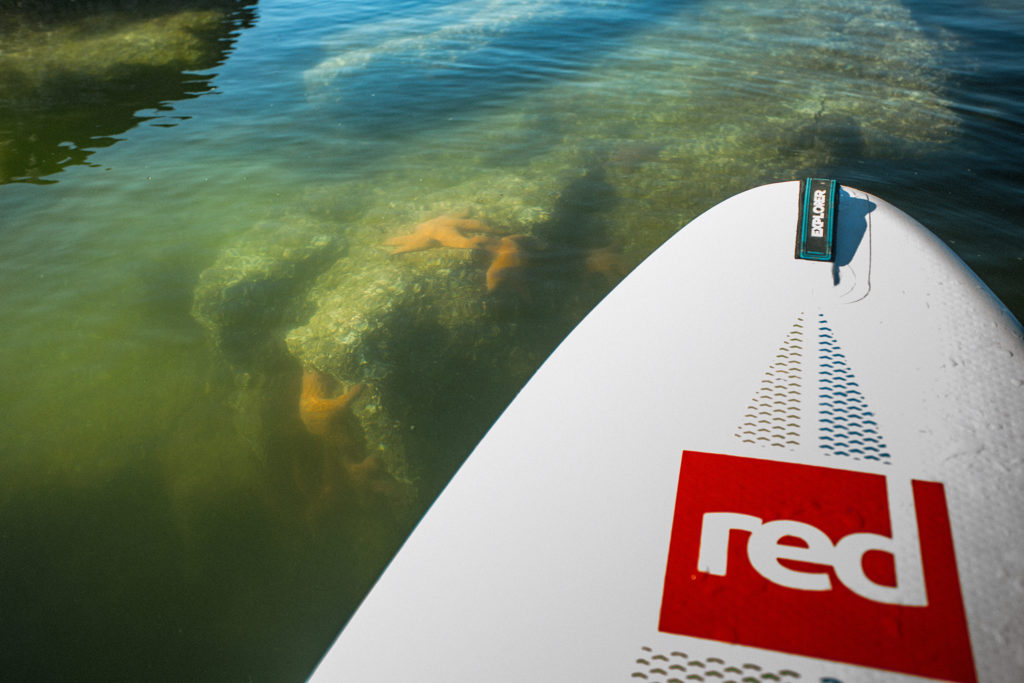
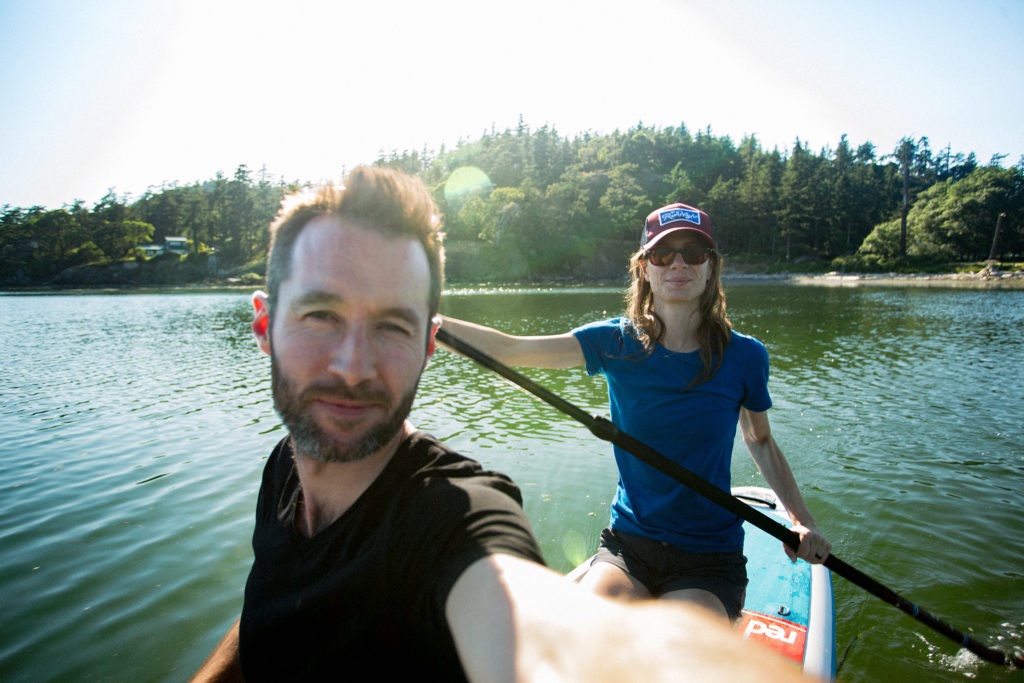
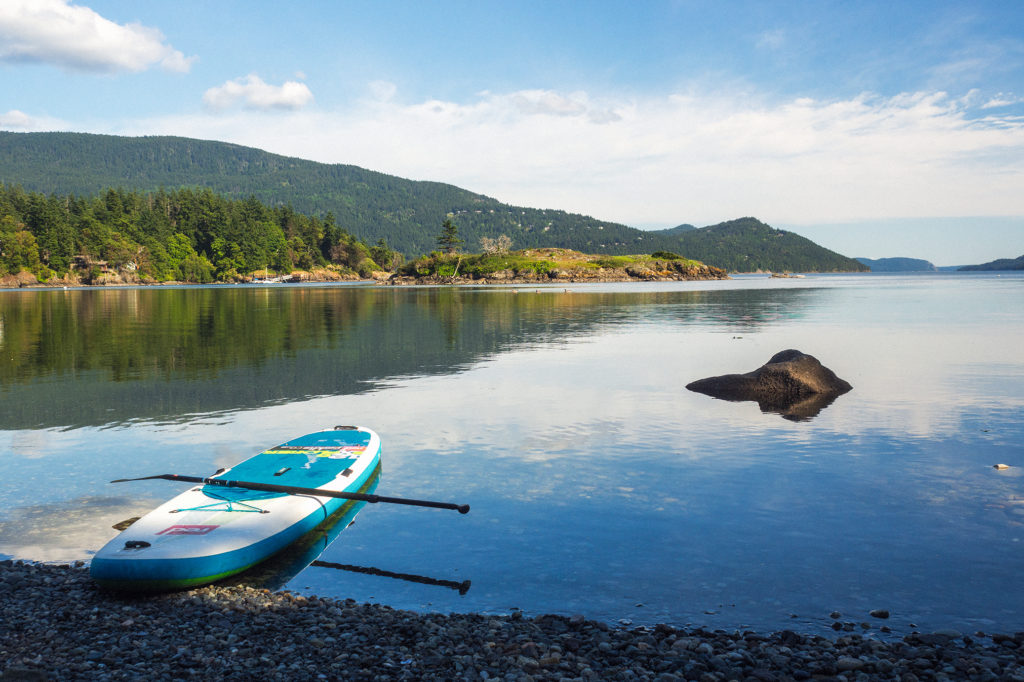
Eventually we drove back to Orcas village and waited for the ferry. We had noticed on the way there that jigsaw puzzles were left on tables, to entertain passengers while traveling. So on the way back we sat at a table with a puzzle, and before we knew it we were back in Anacortes.
We got to the border at around 11:00pm, and were surprised to see an impressive line-up of cars.The sign read 85 min wait to cross (turns out there was a Major League baseball game between Seattle and Toronto that week-end). Brice, who hates waiting in line, was pretty ecstatic when we flew down the nexus lane and through the border, passing a few hundred cars in just a few seconds…
Our little week-end in Orcas was a great way to get out of town and explore a nearby (ish) place we didn’t know, and live at a super easy pace for a couple of days…
